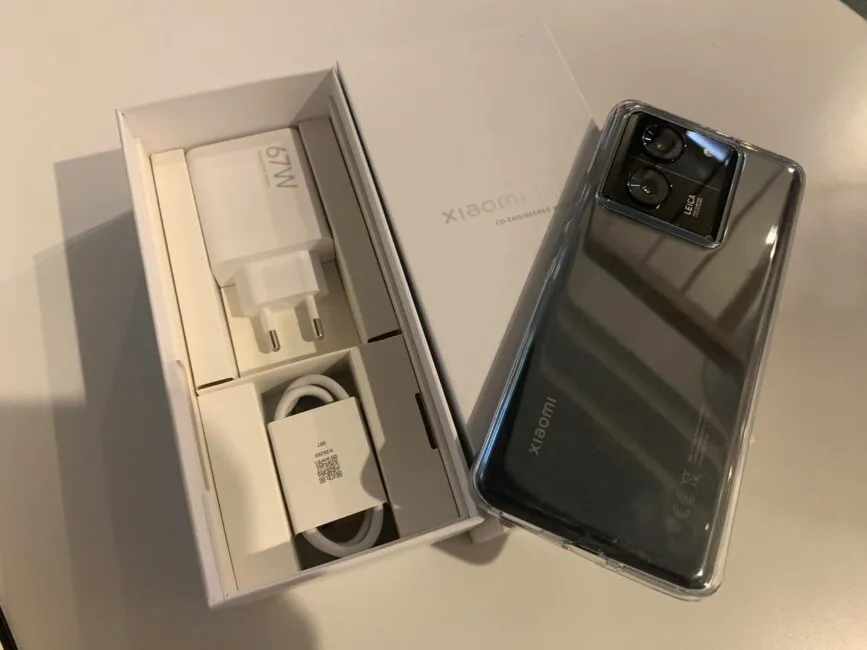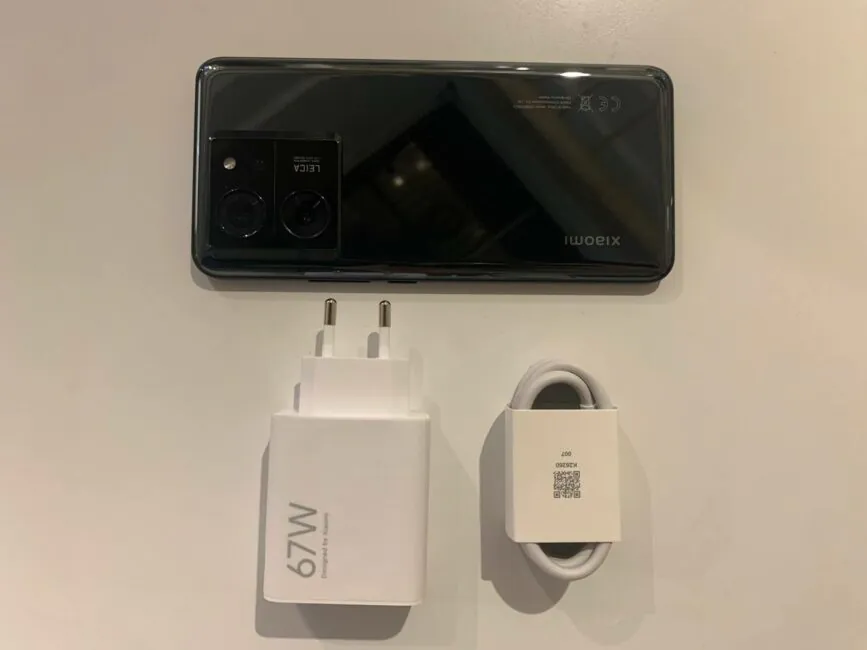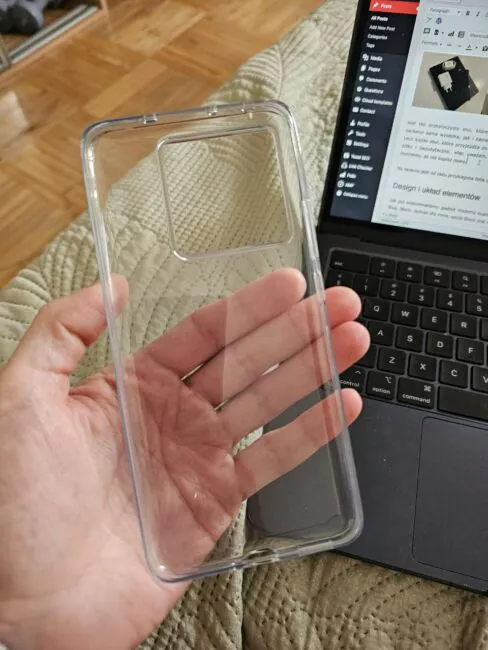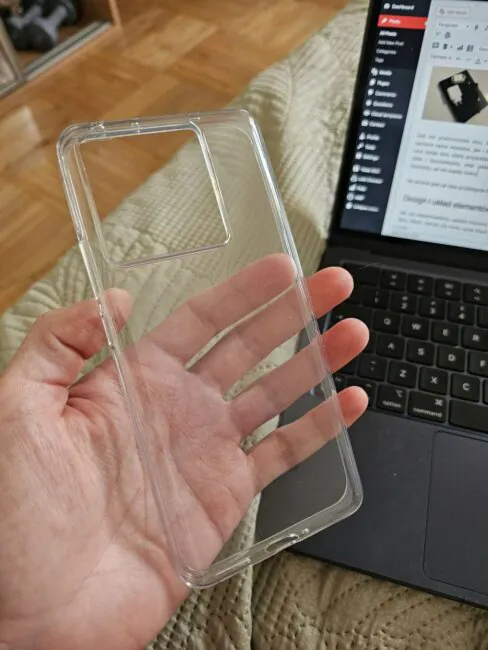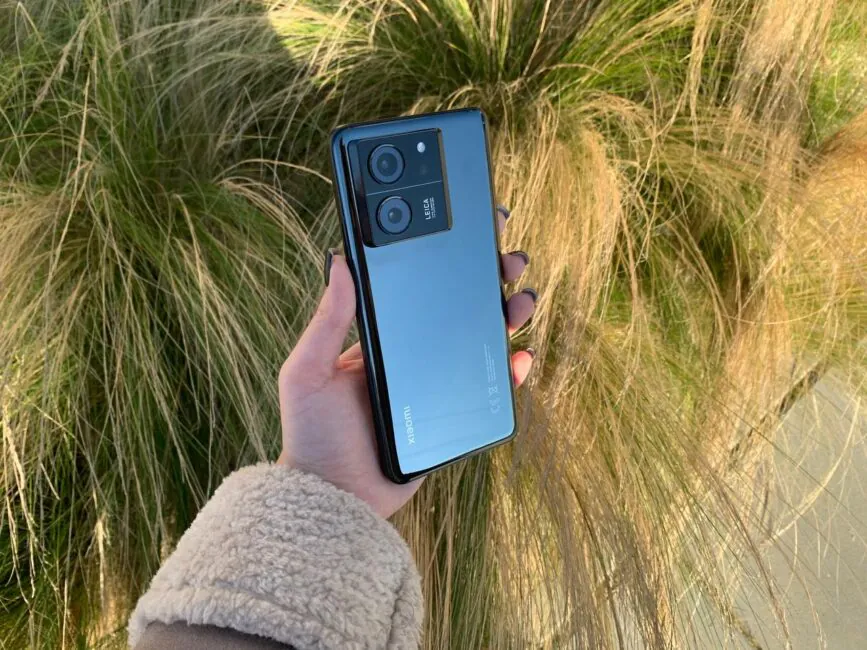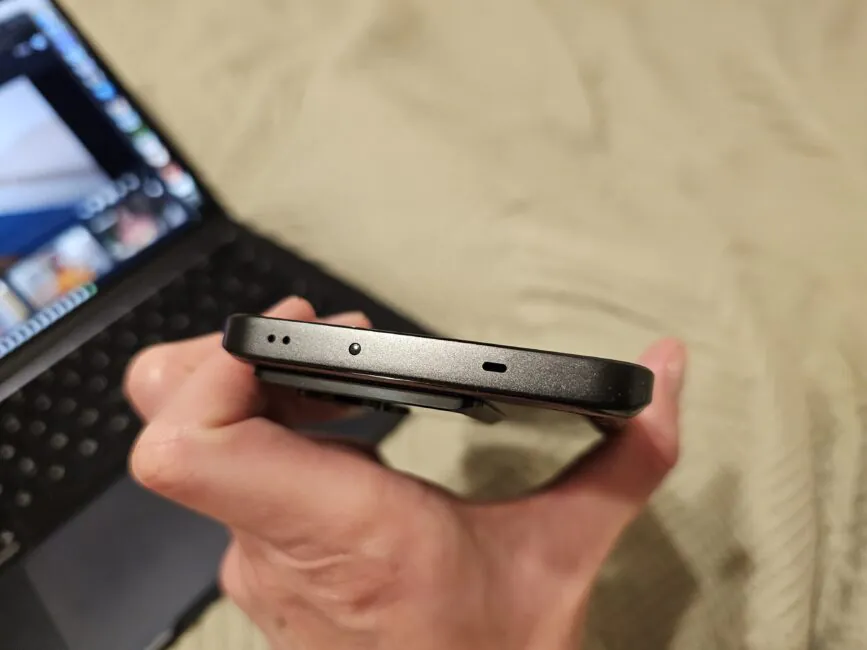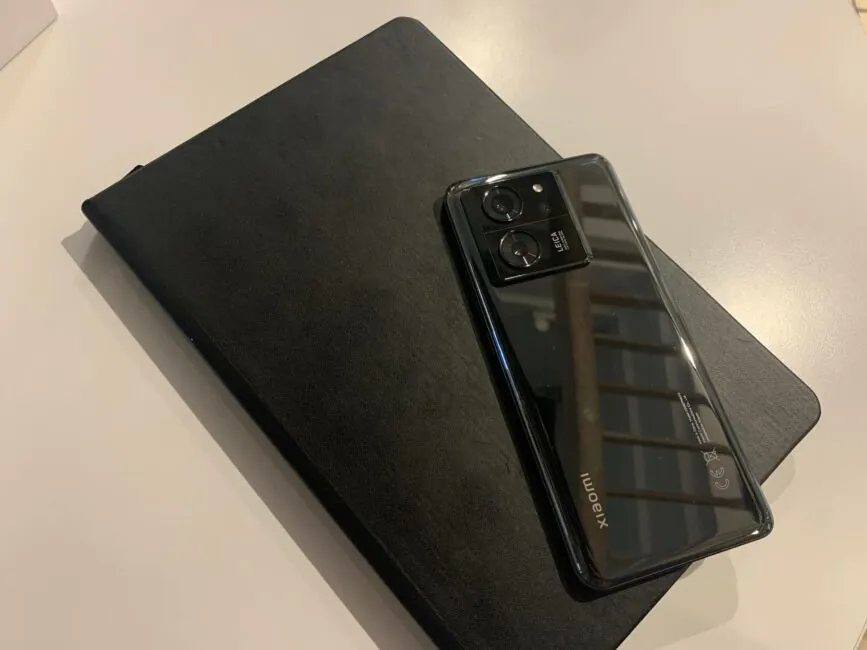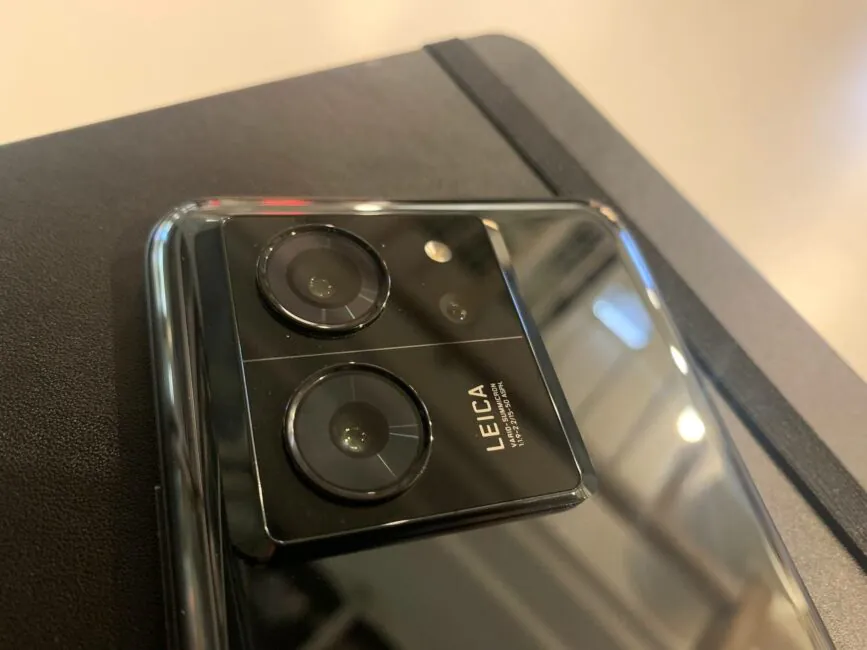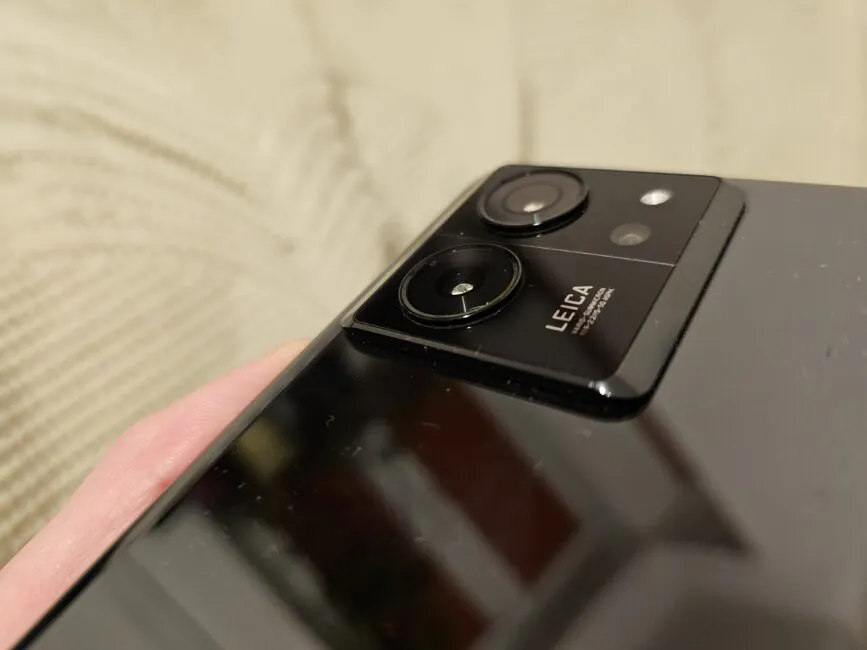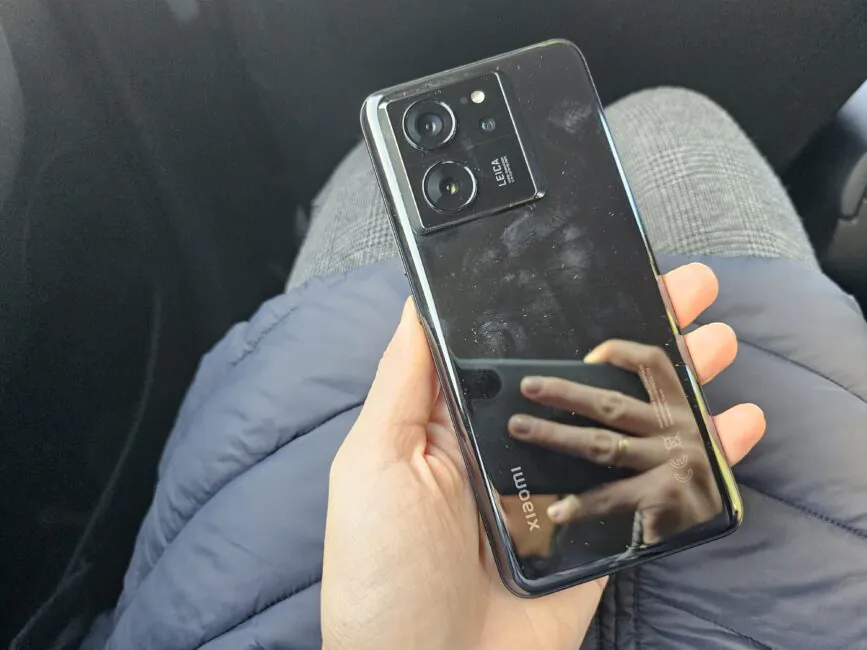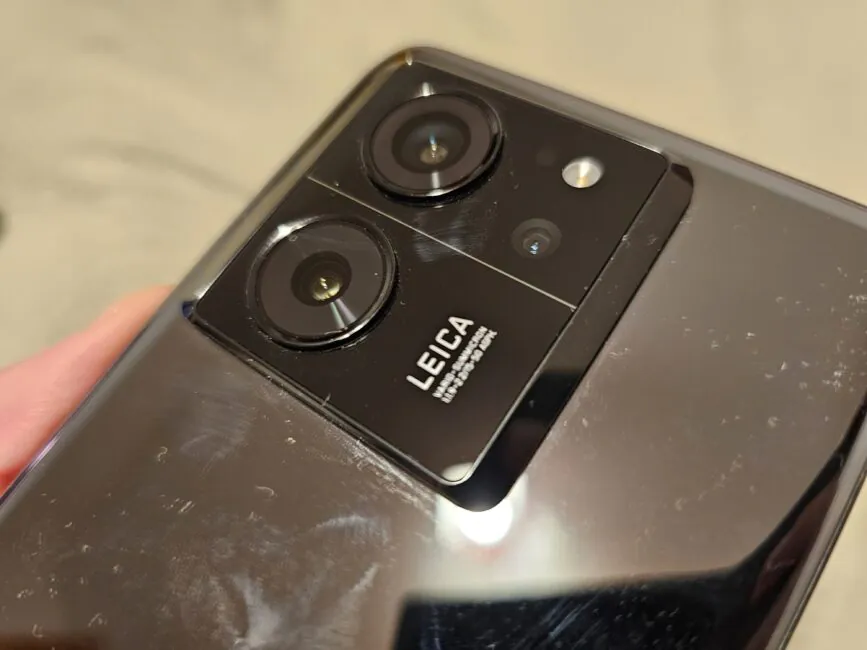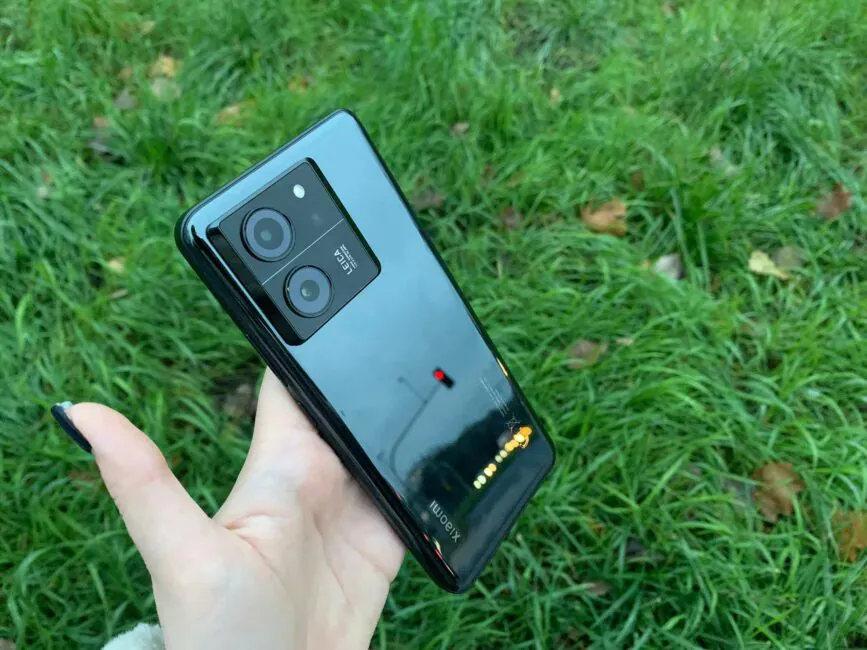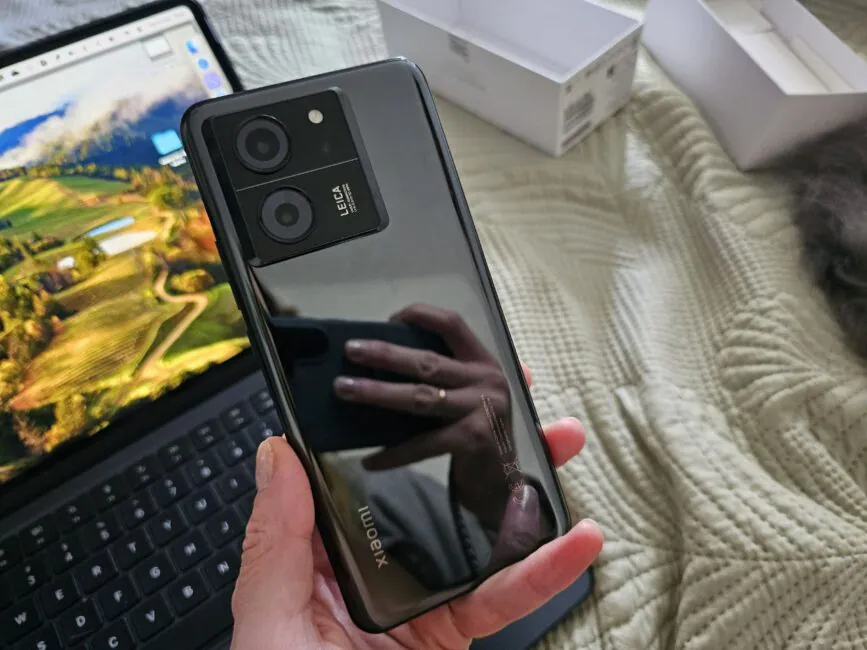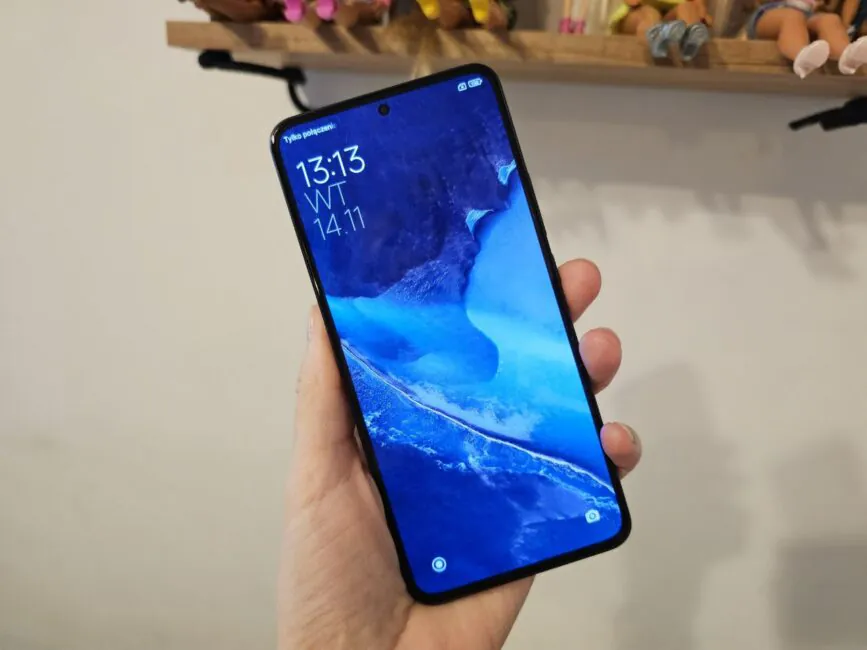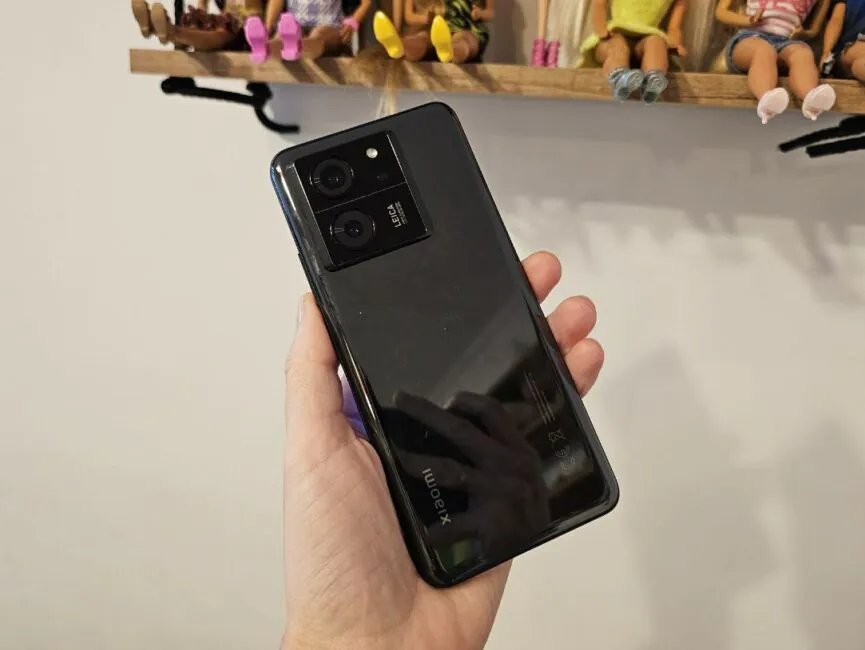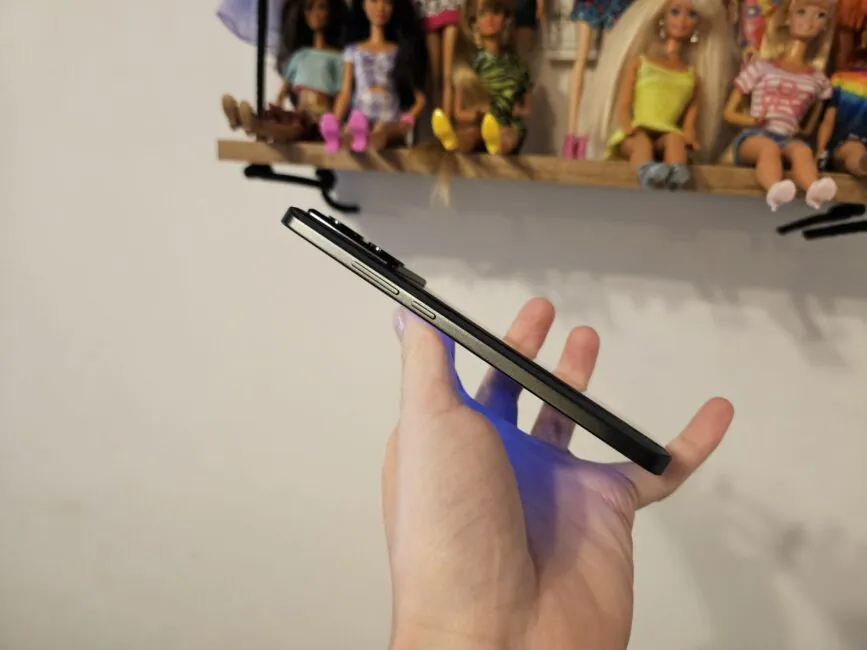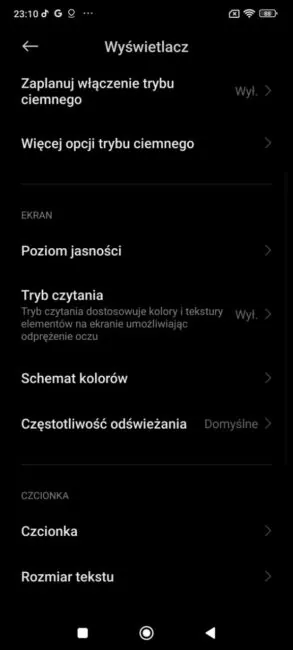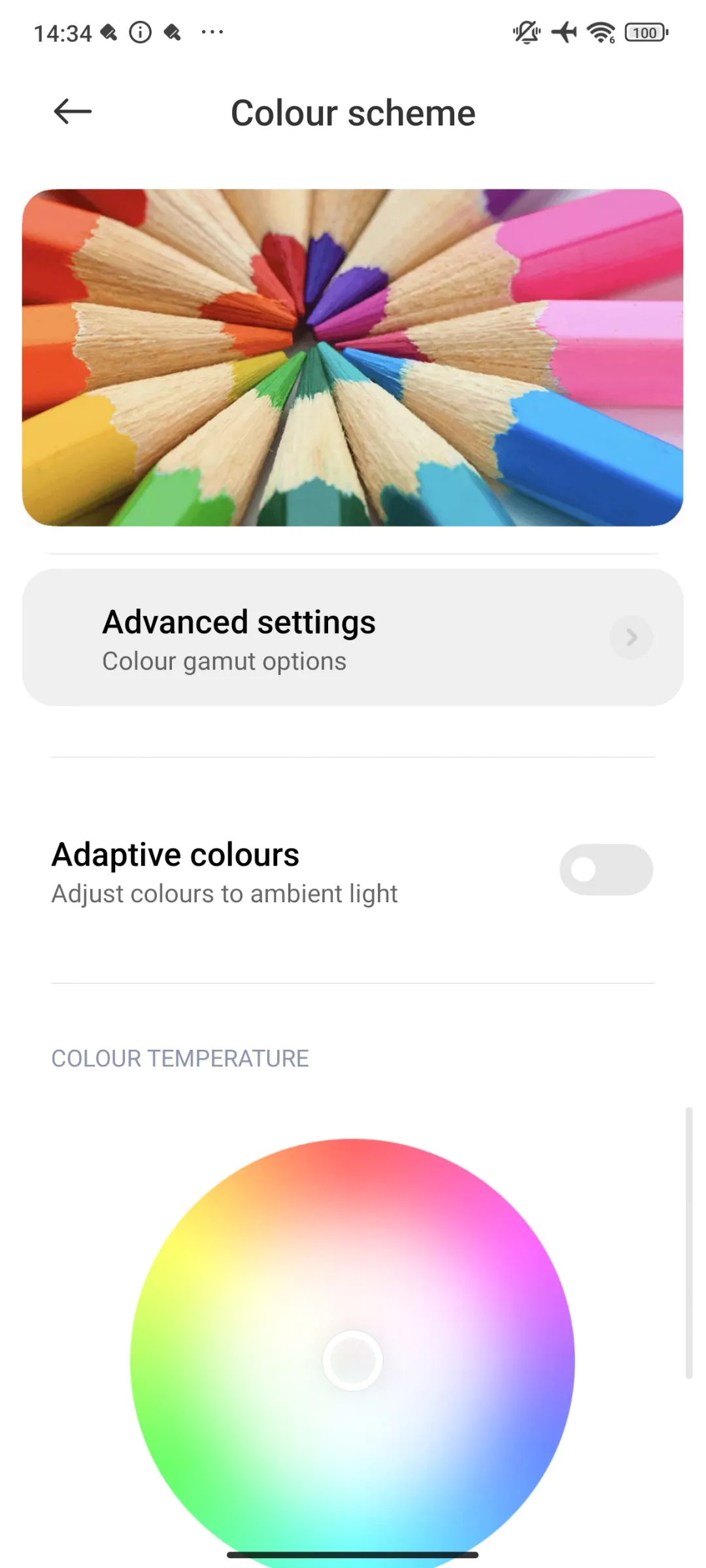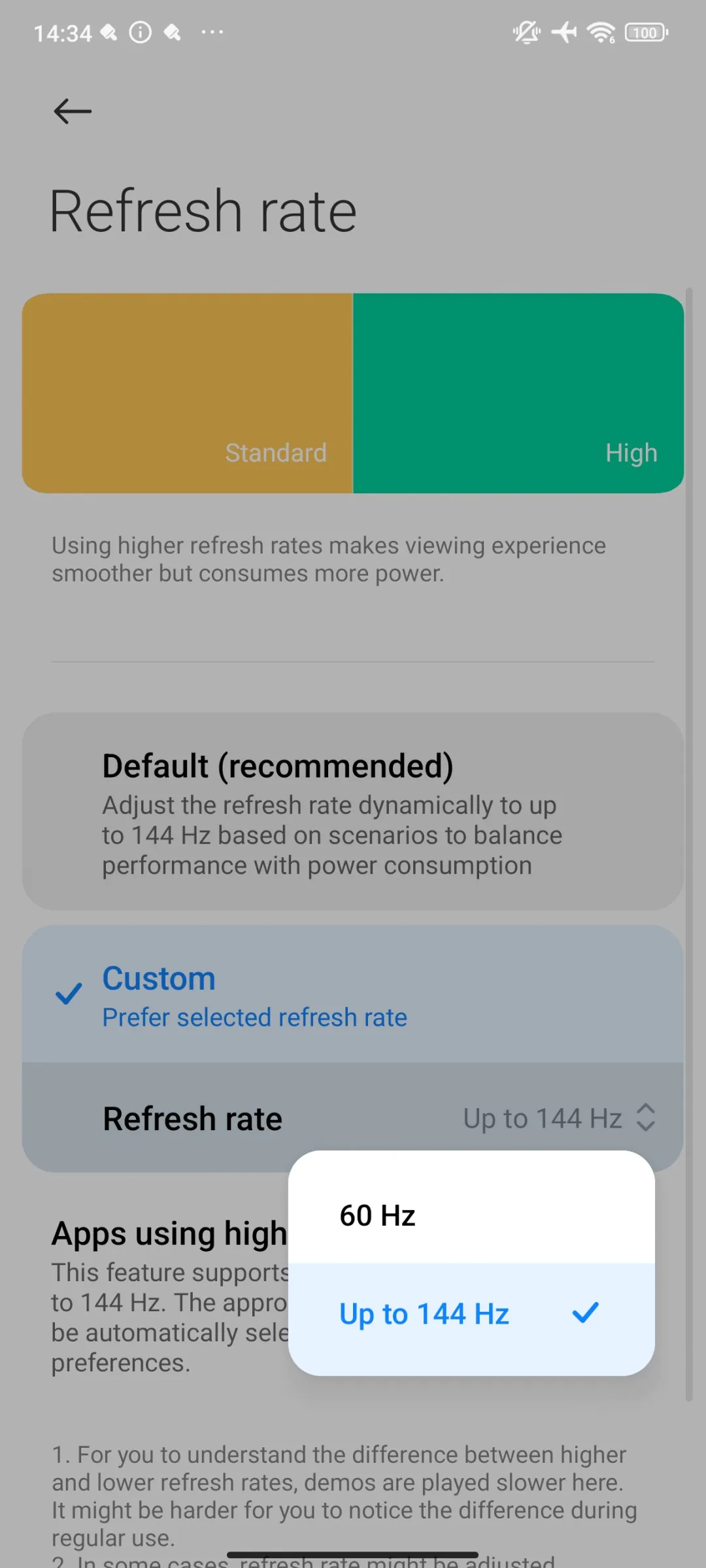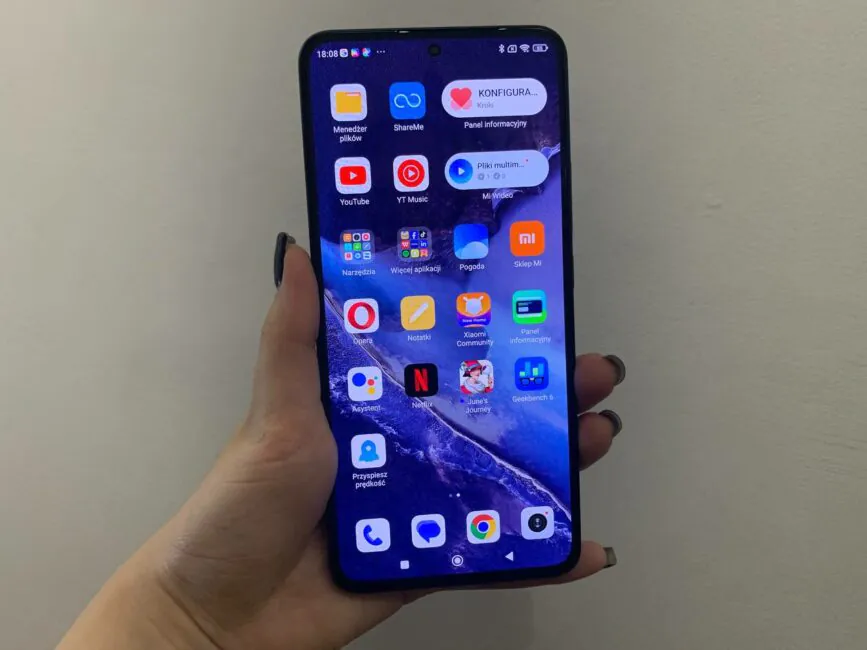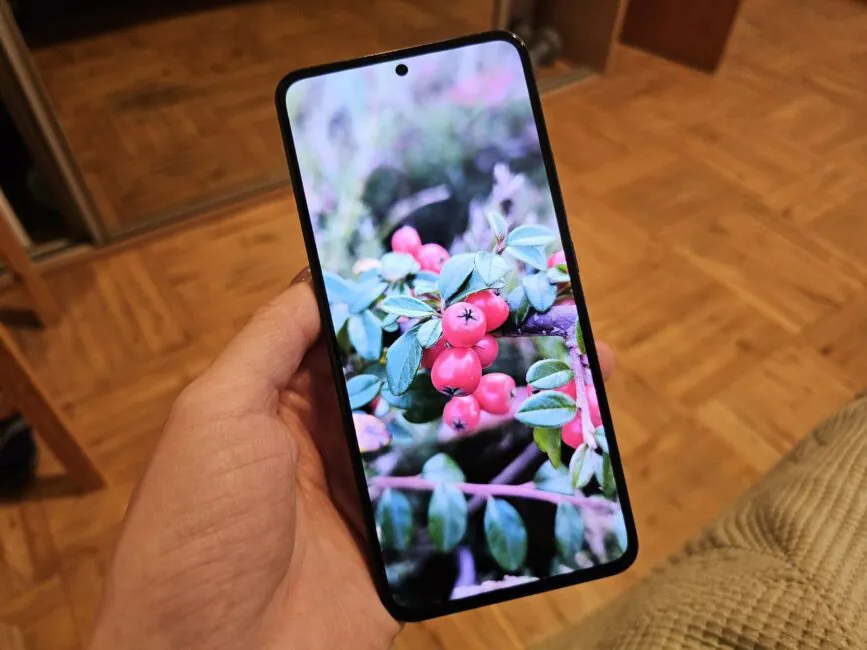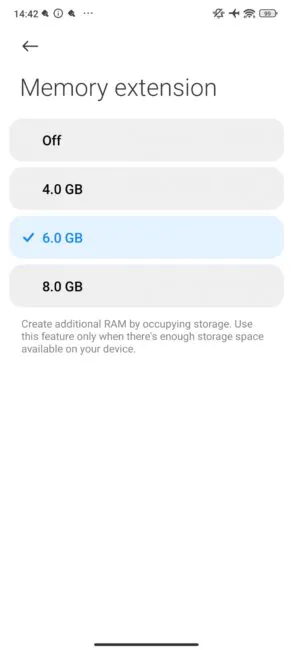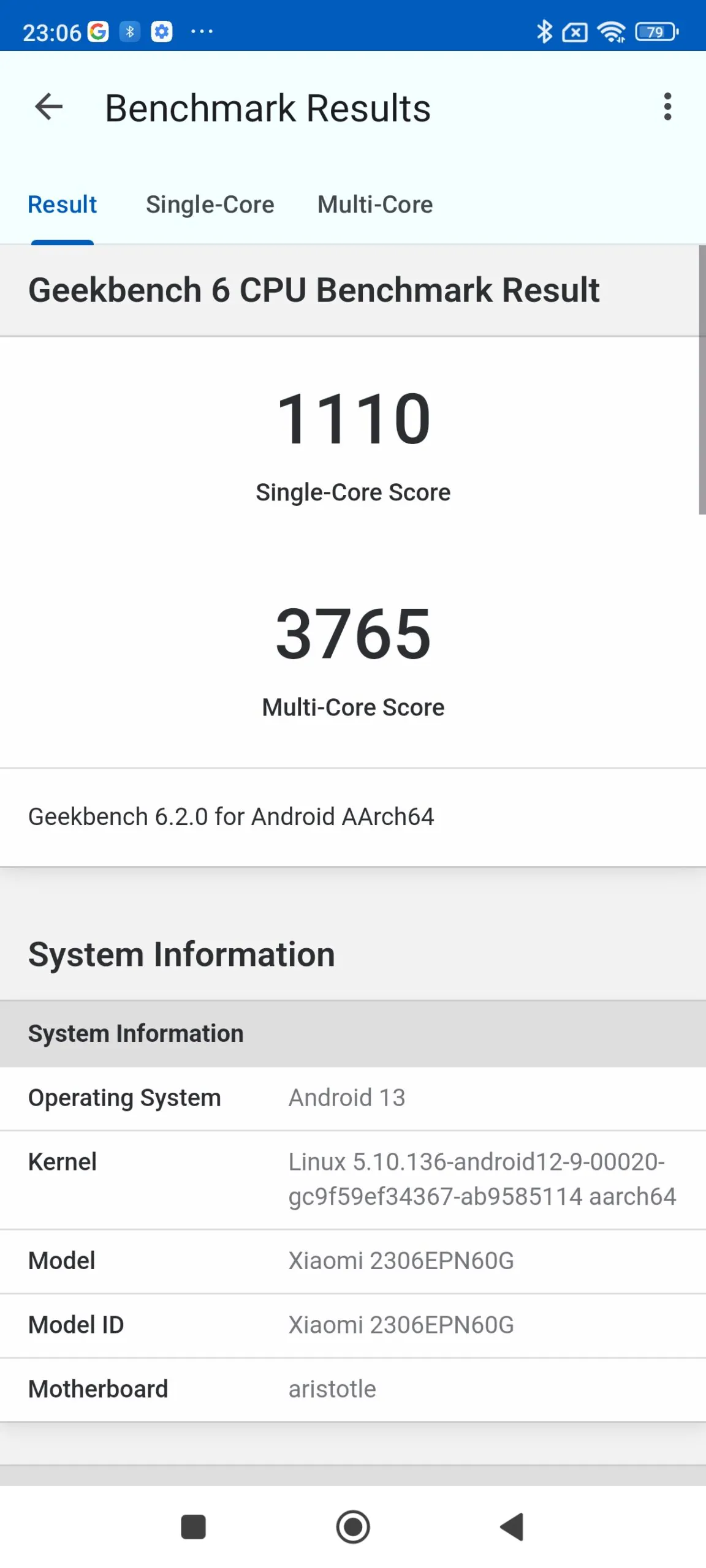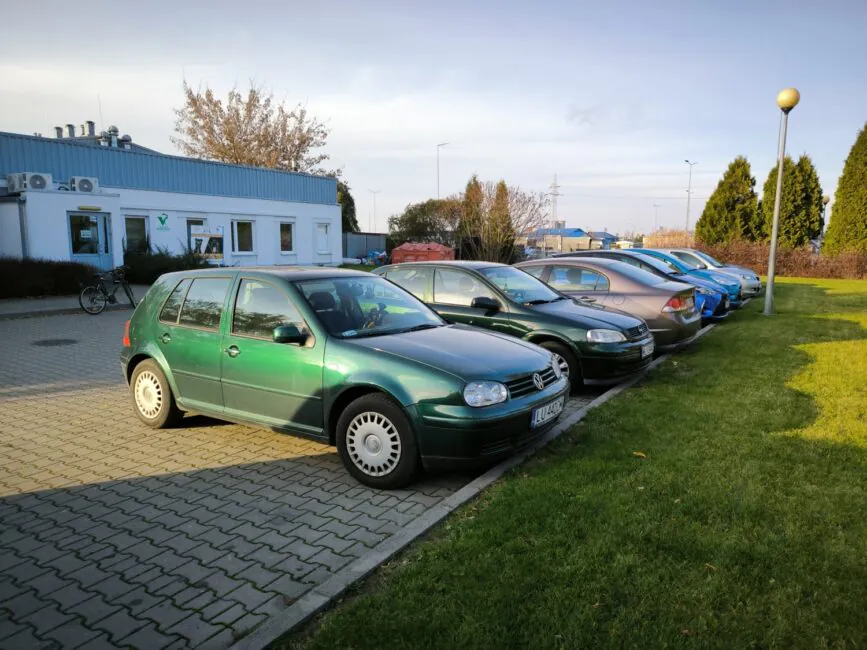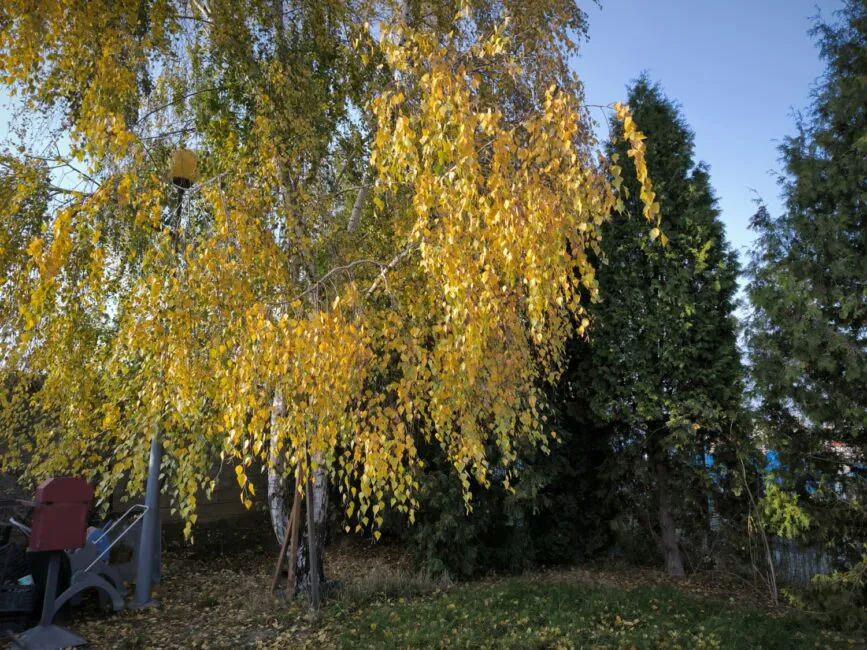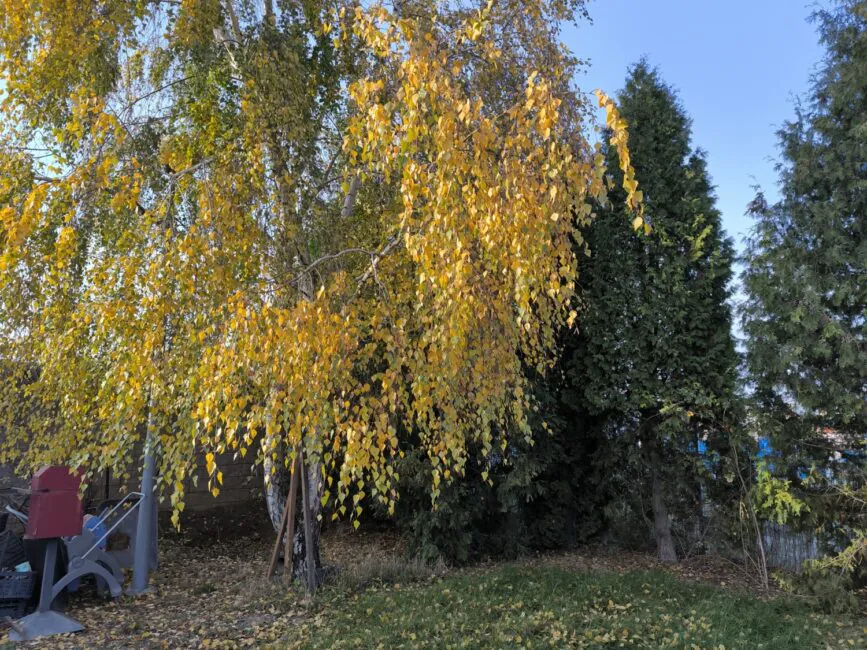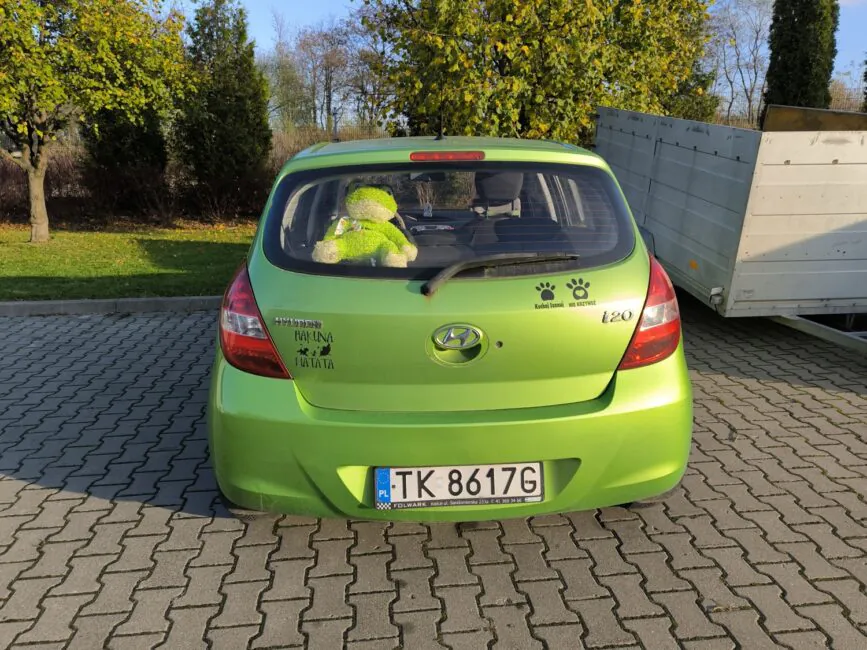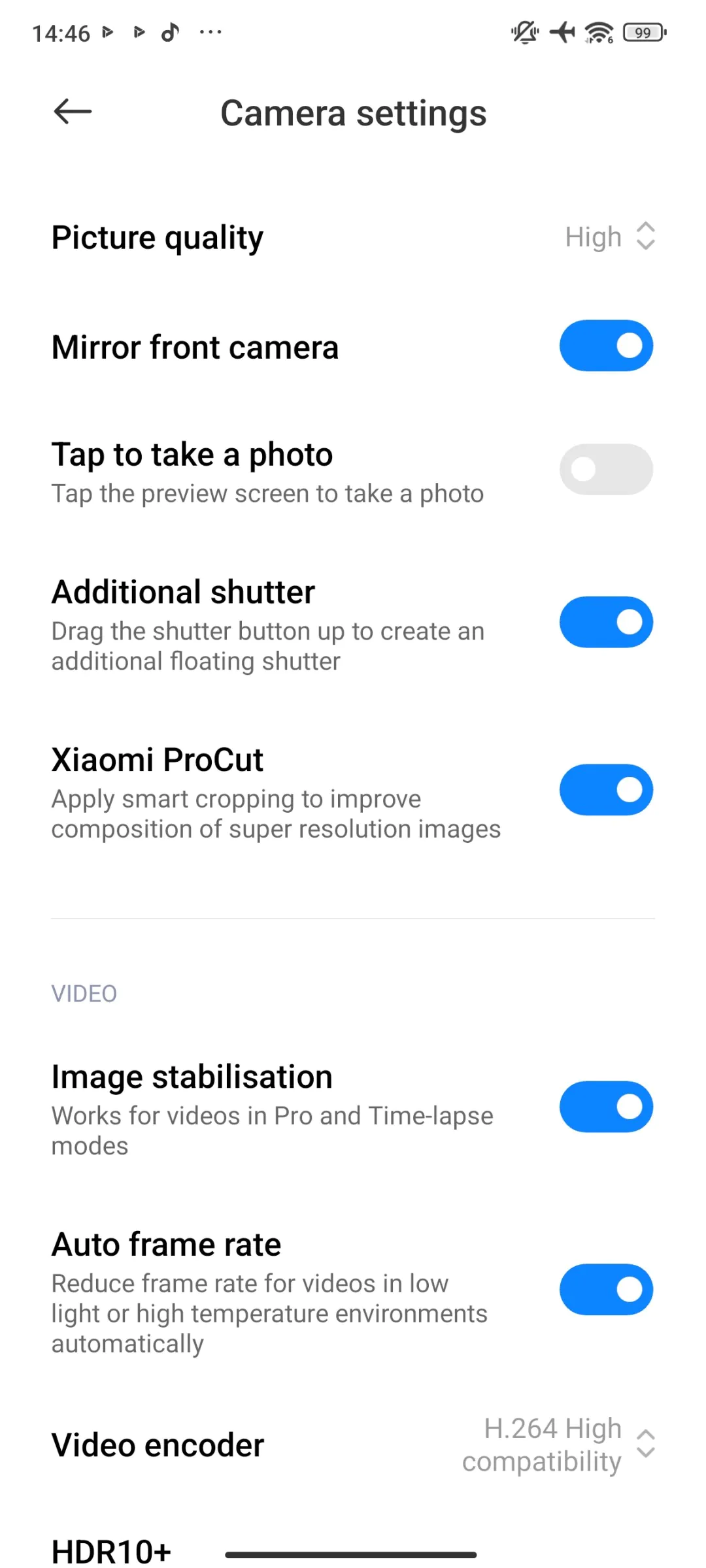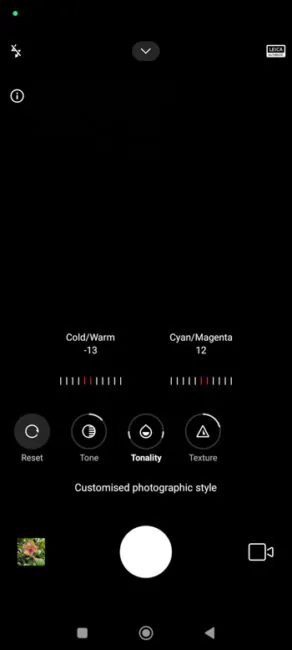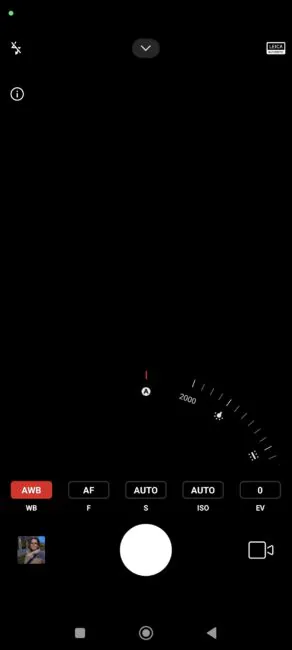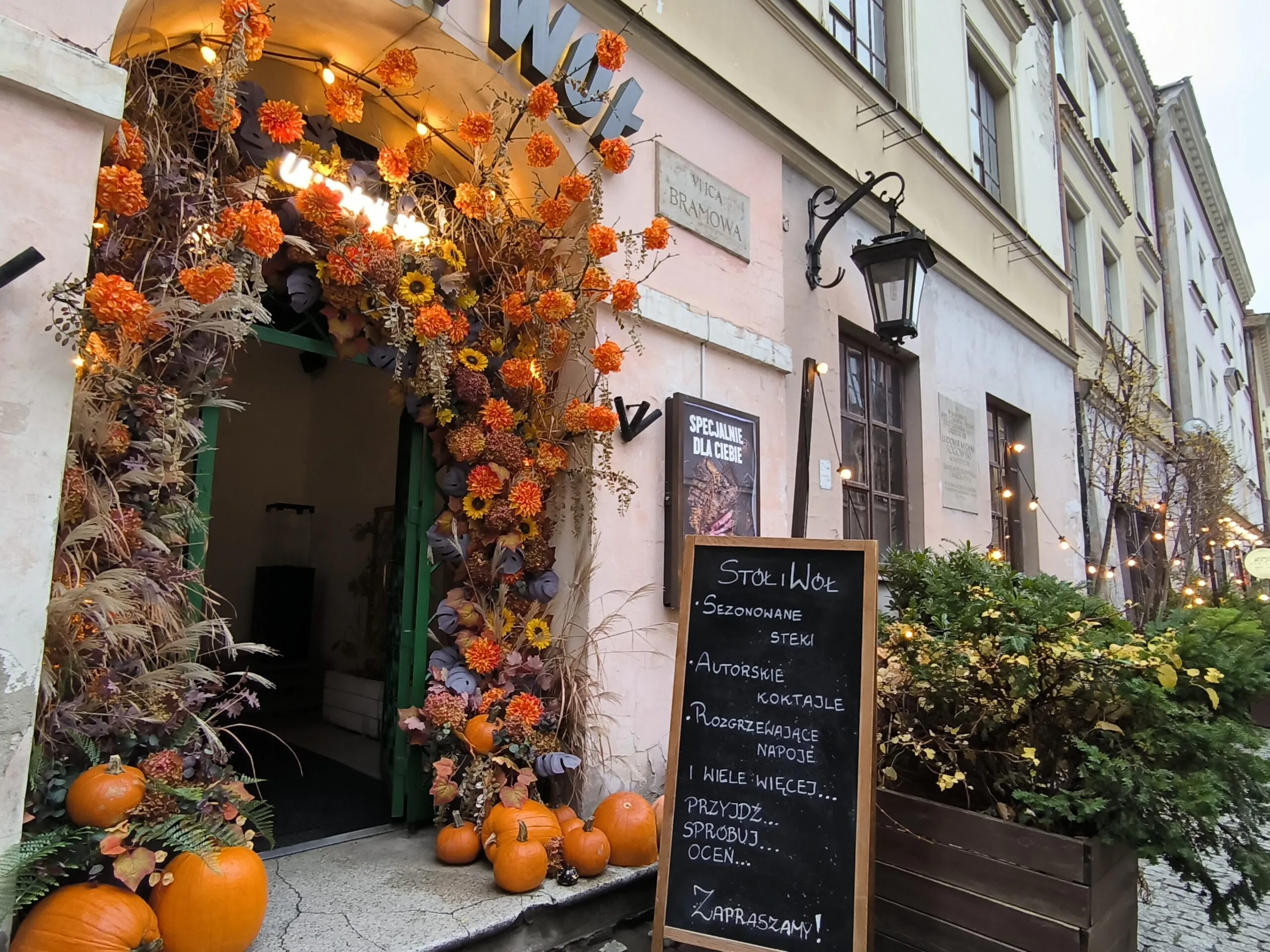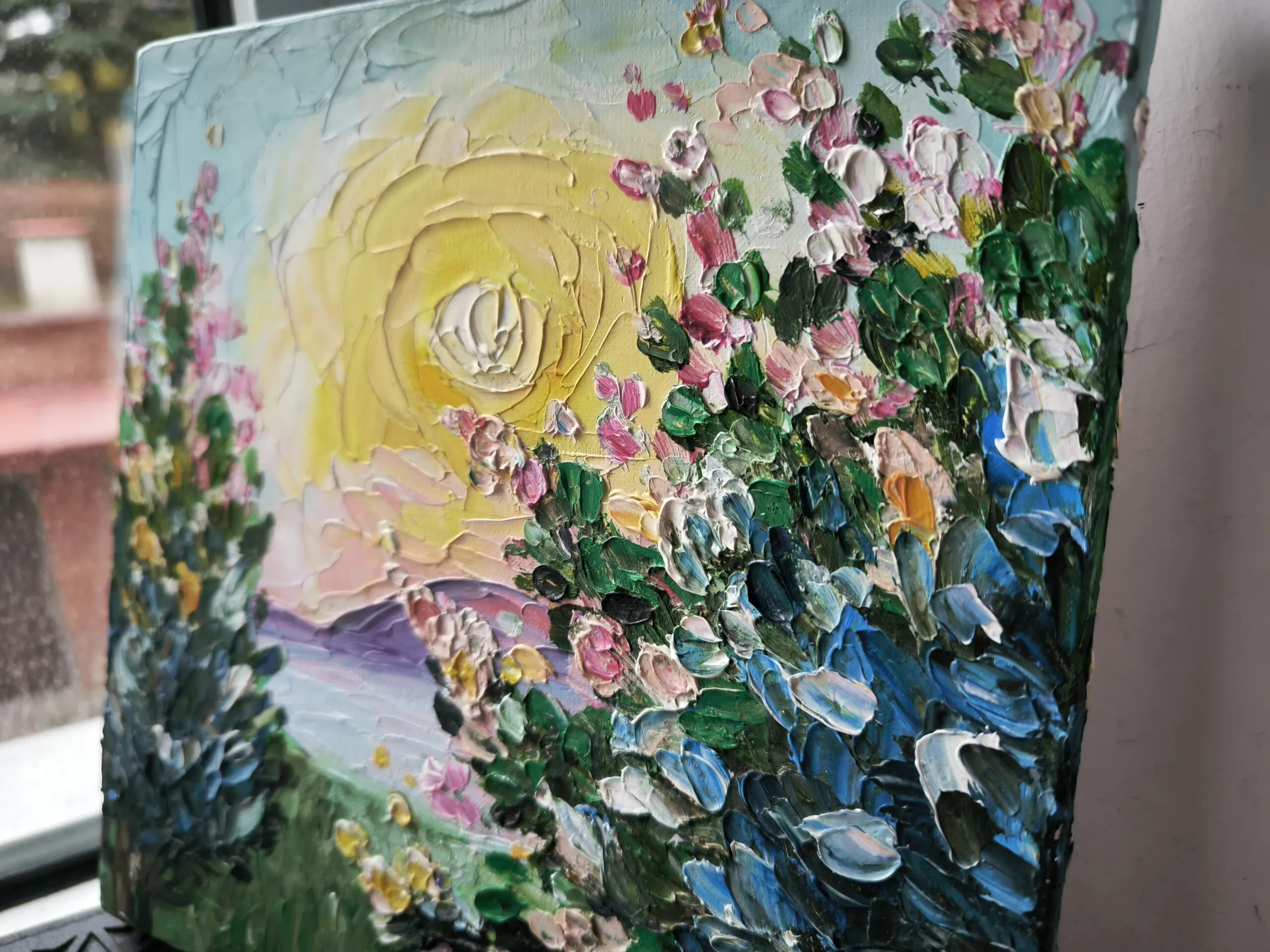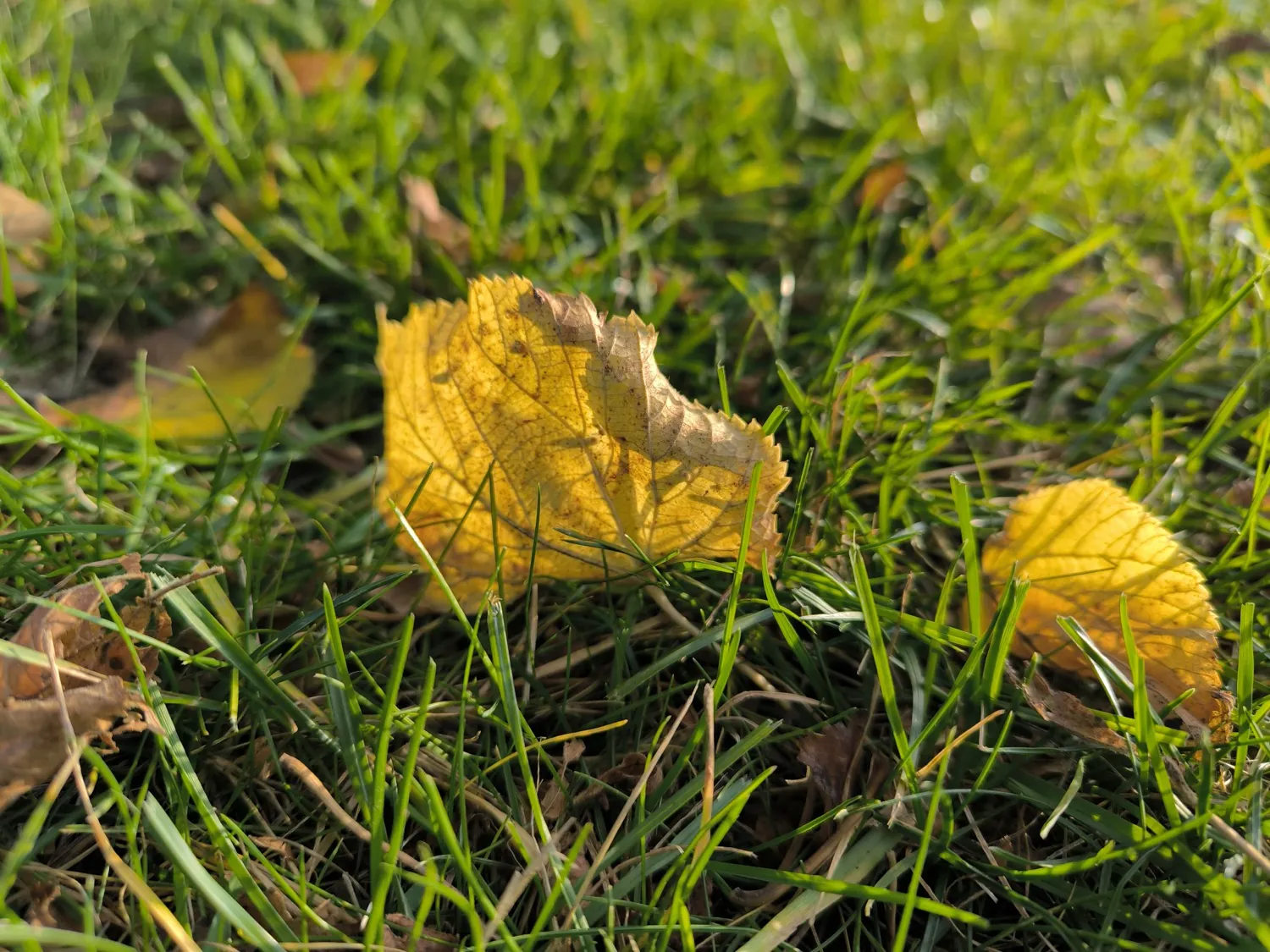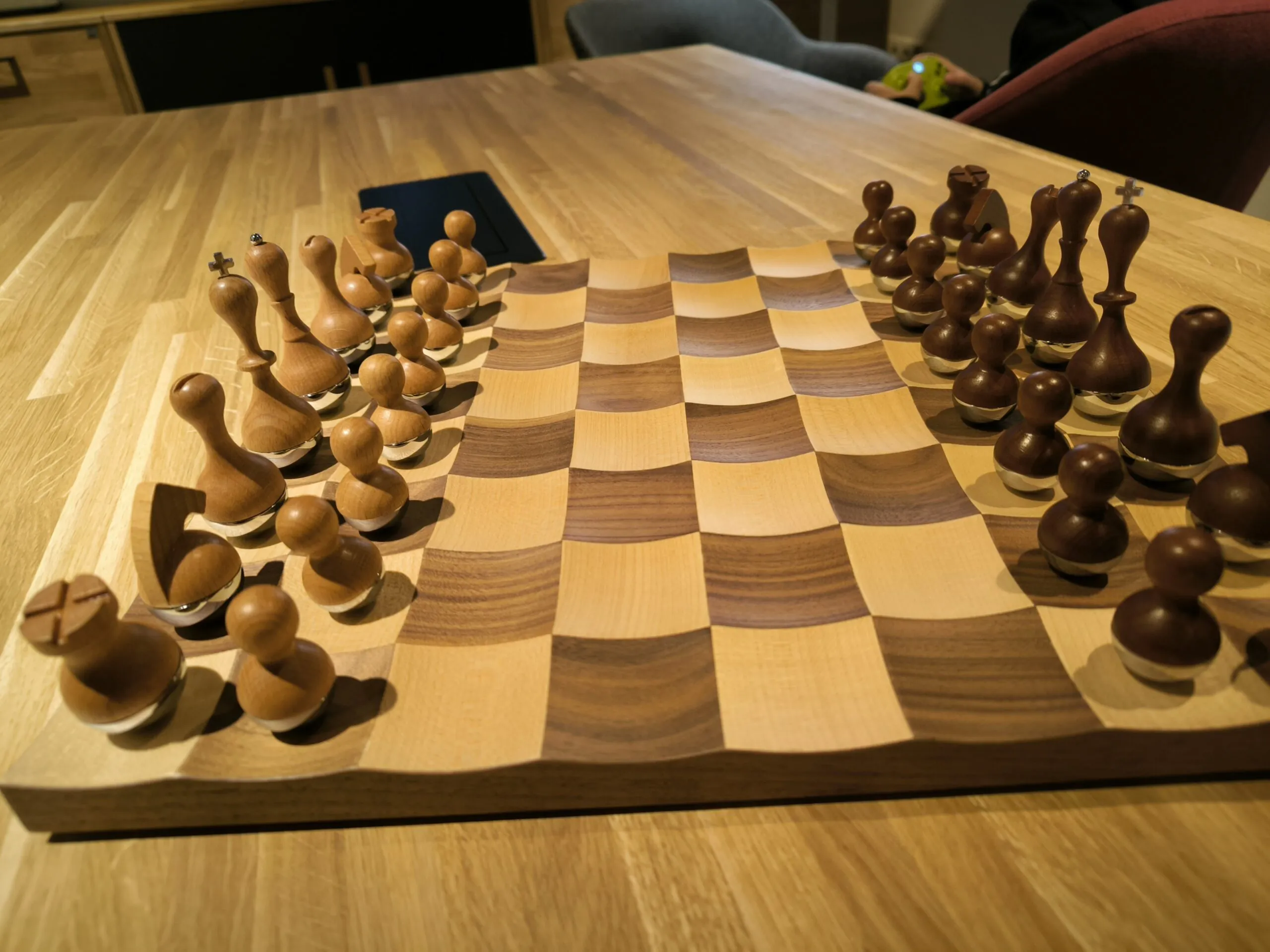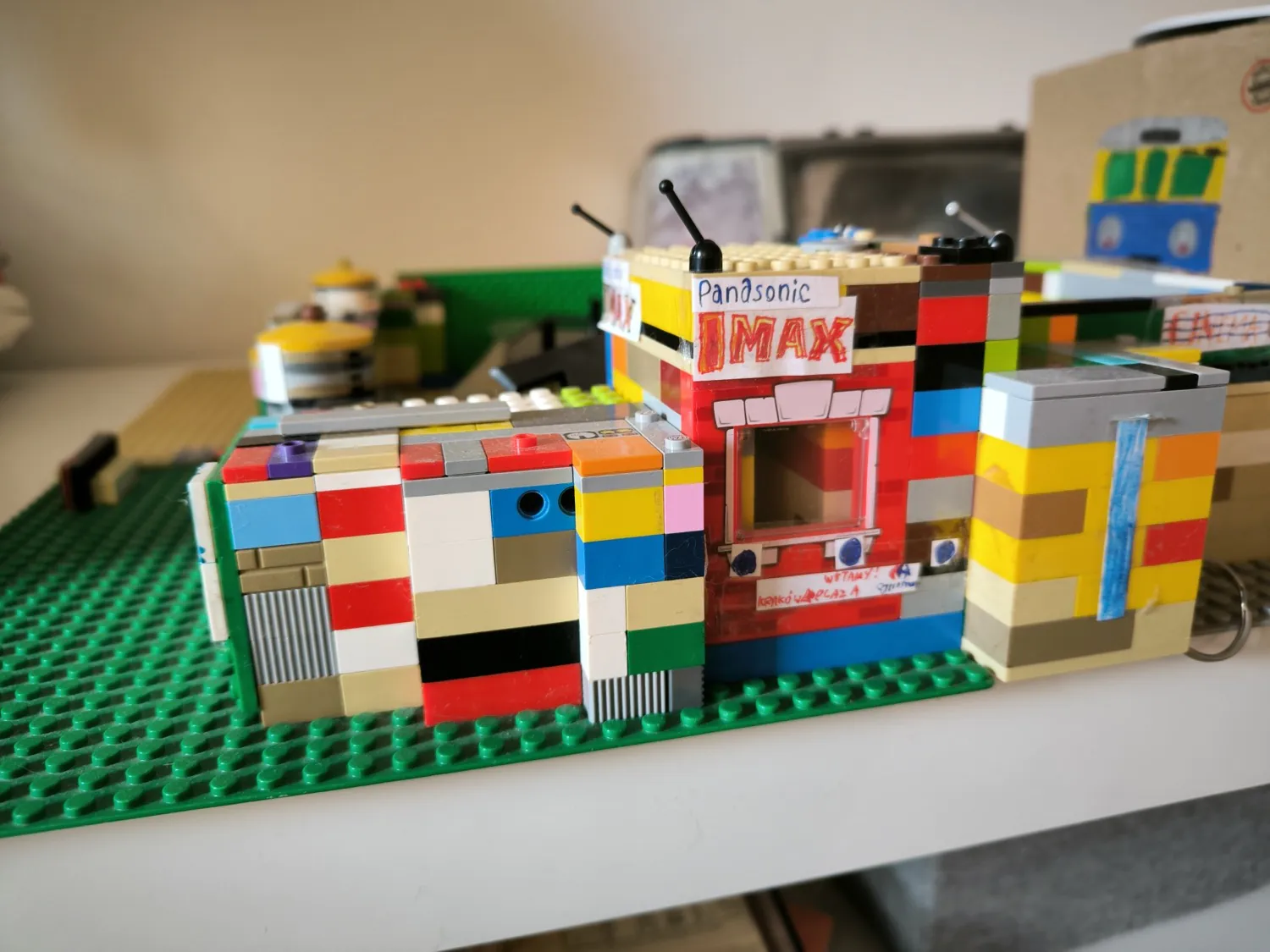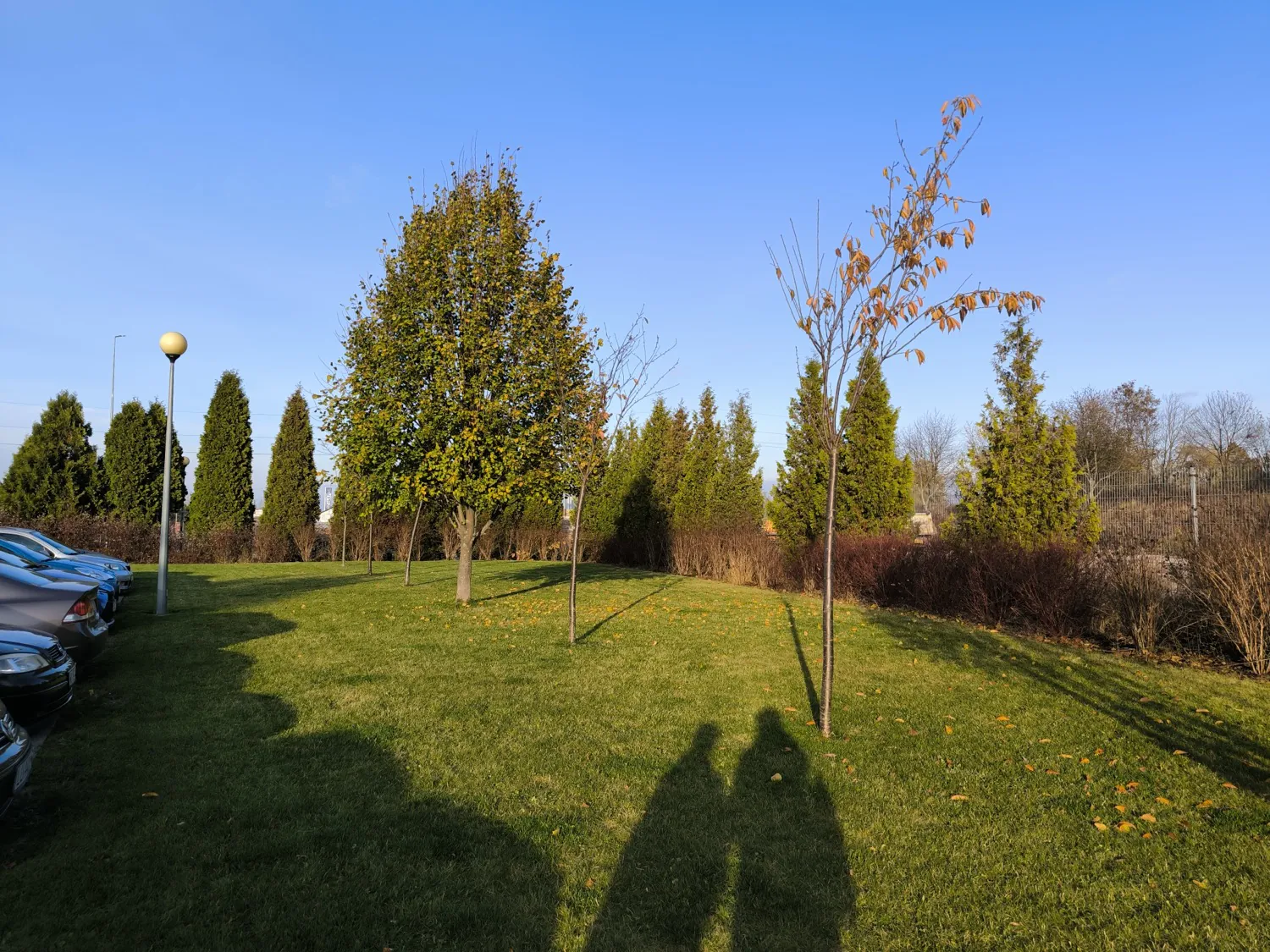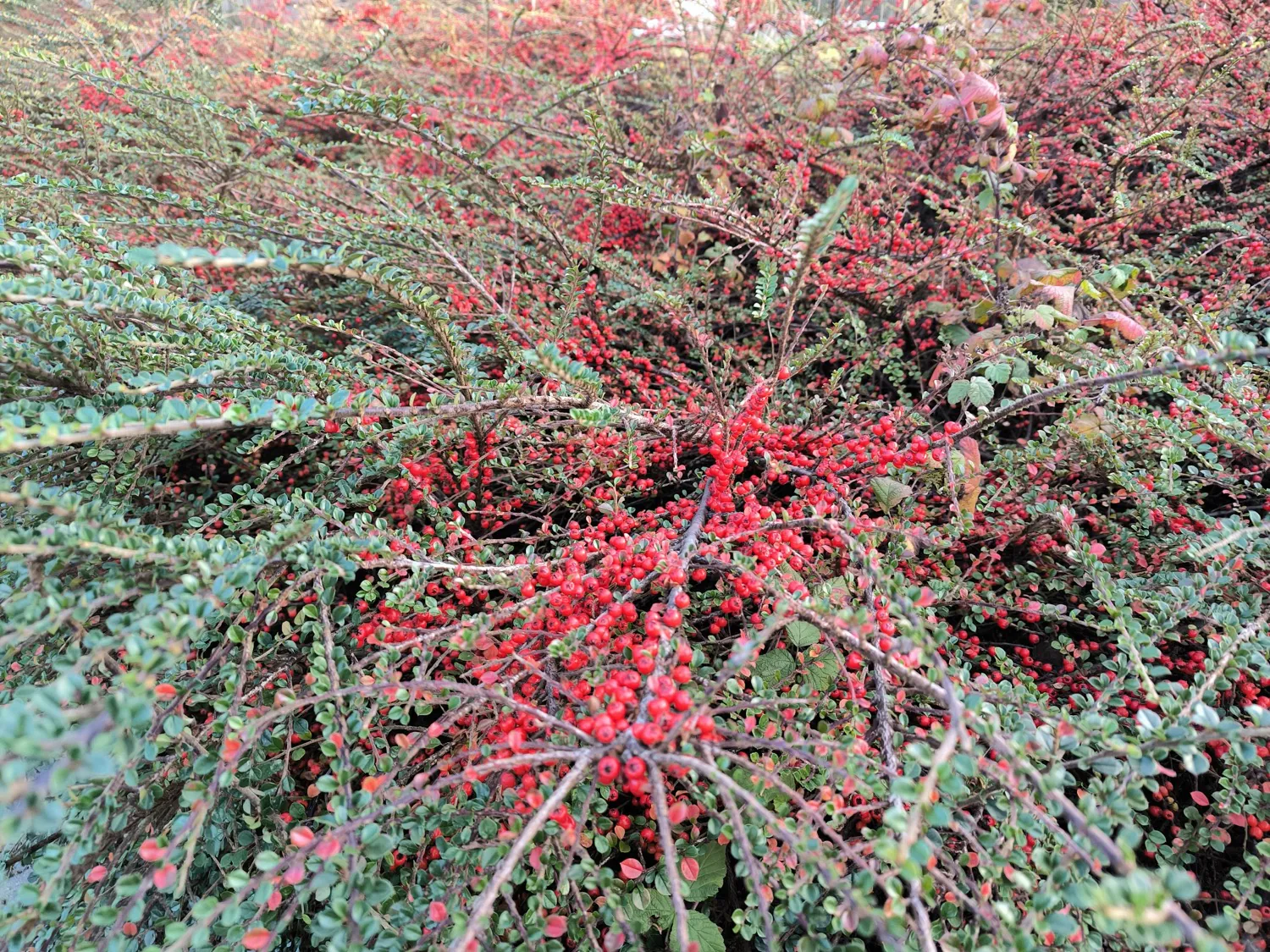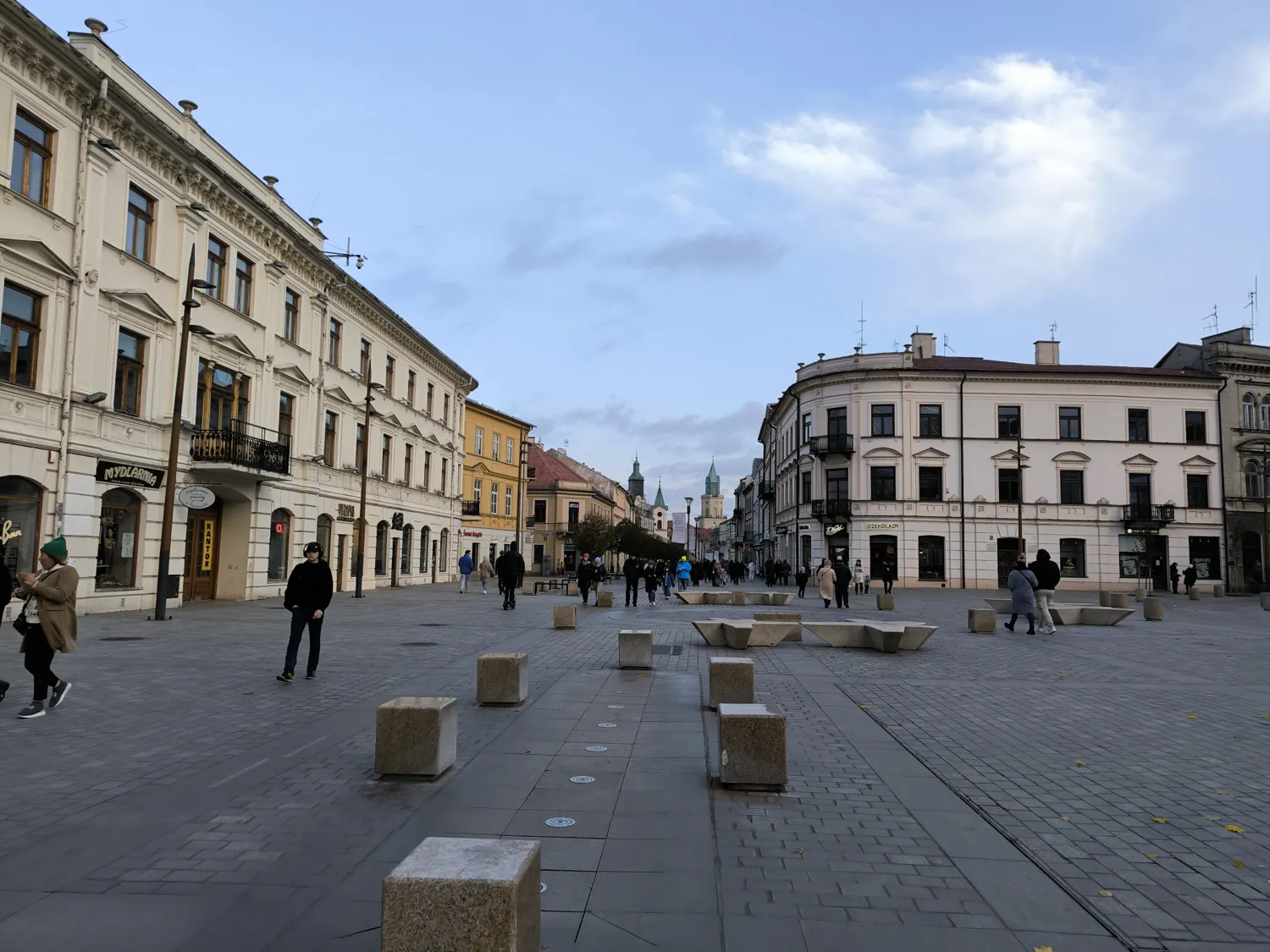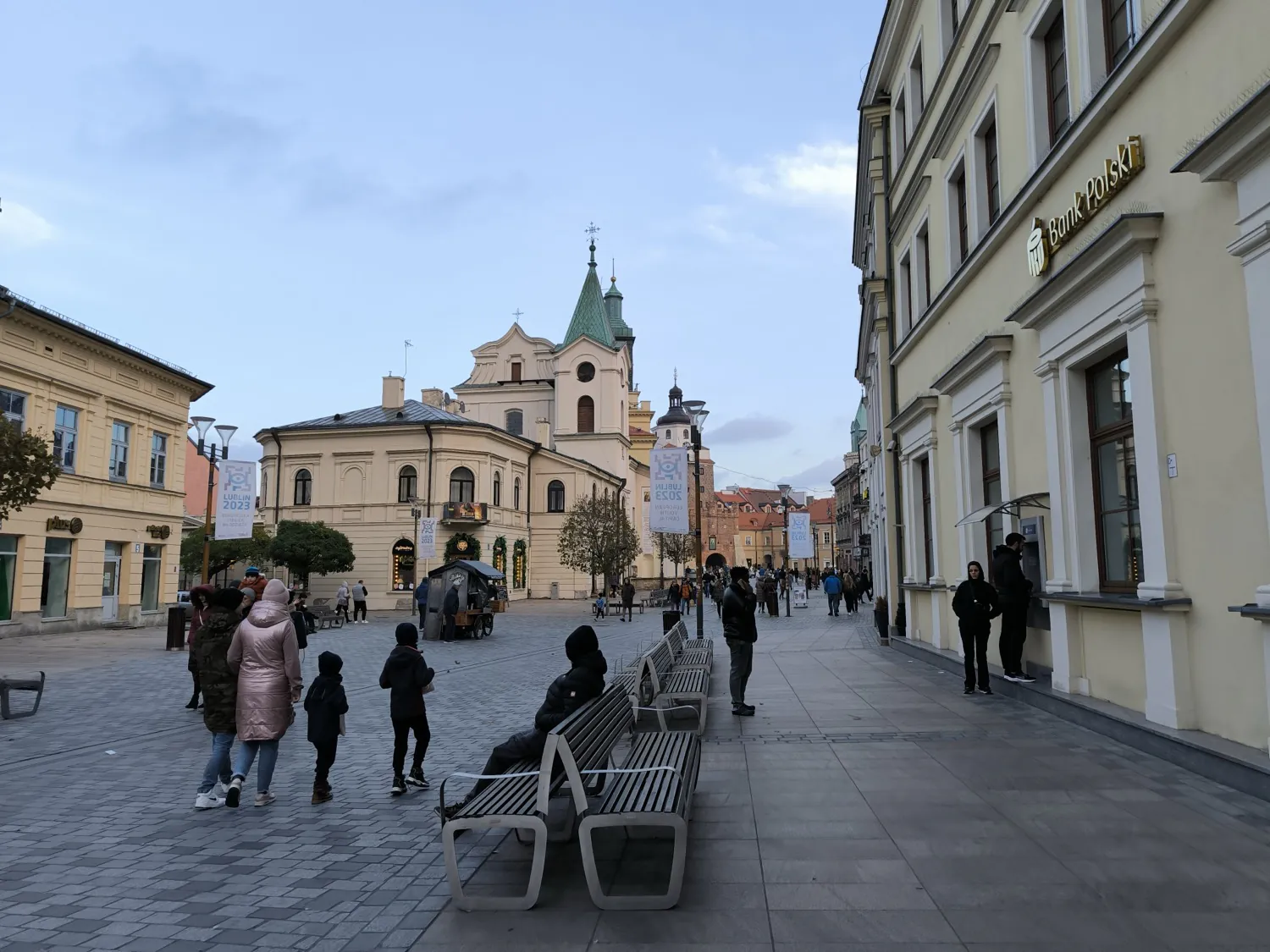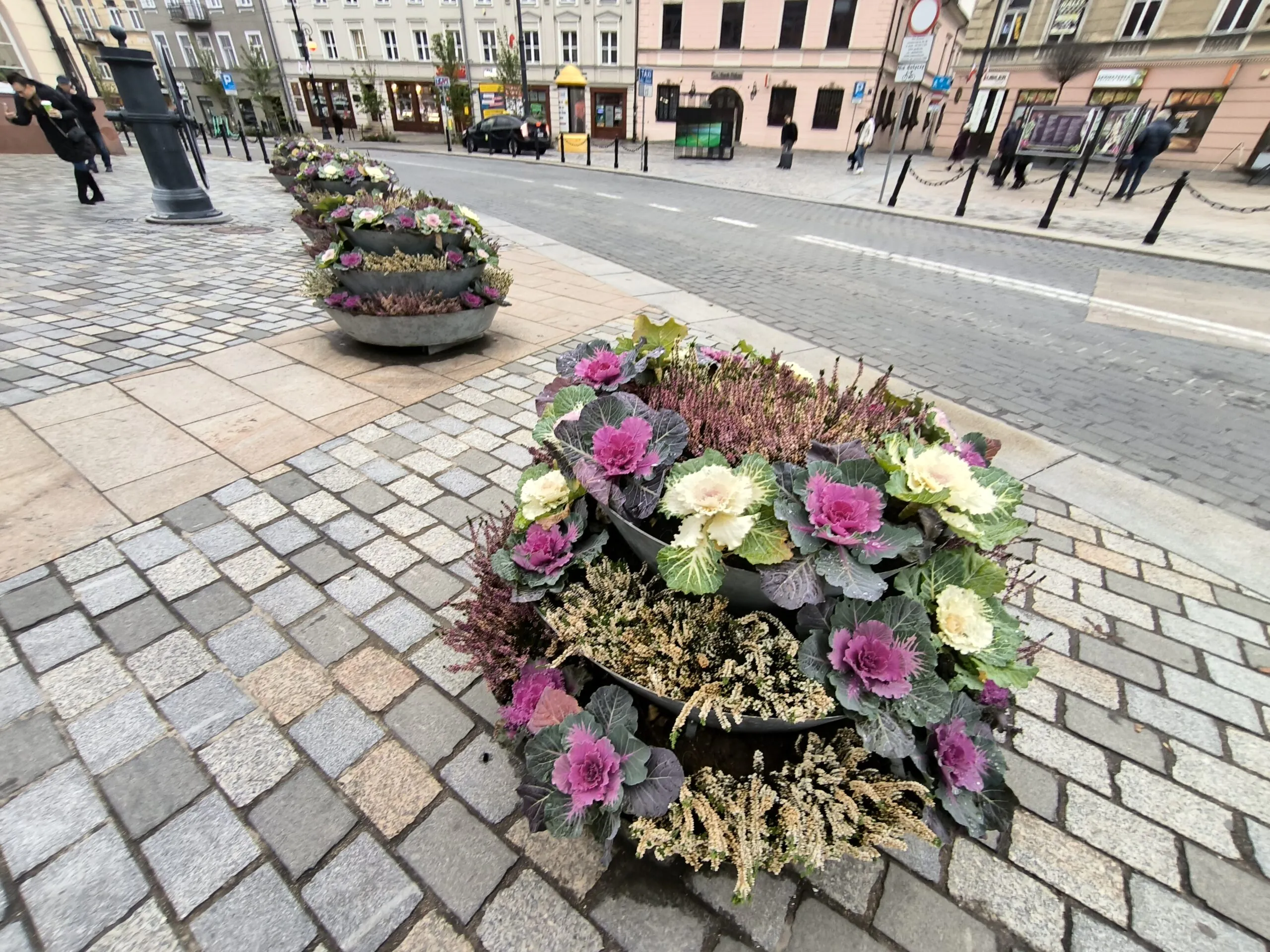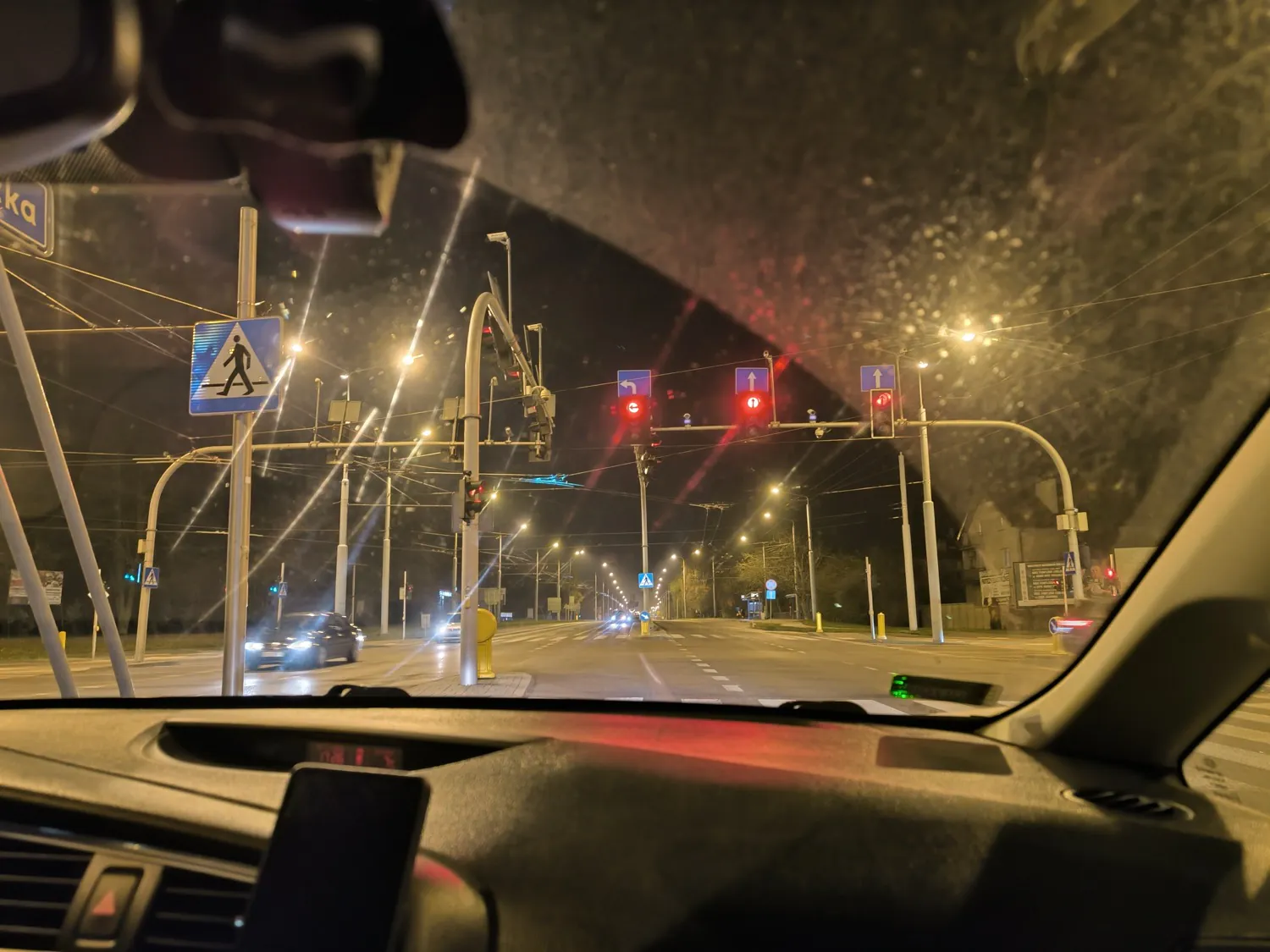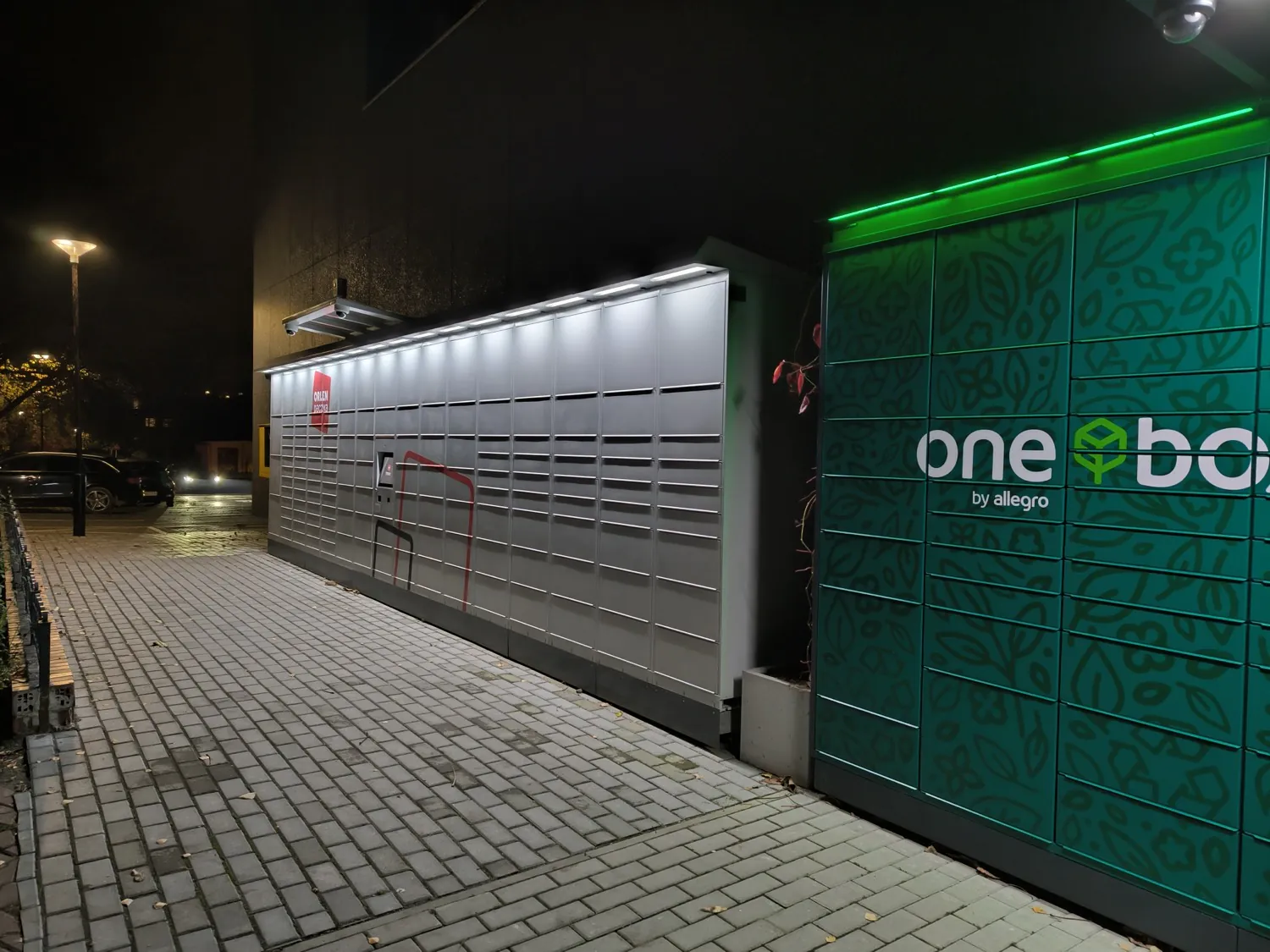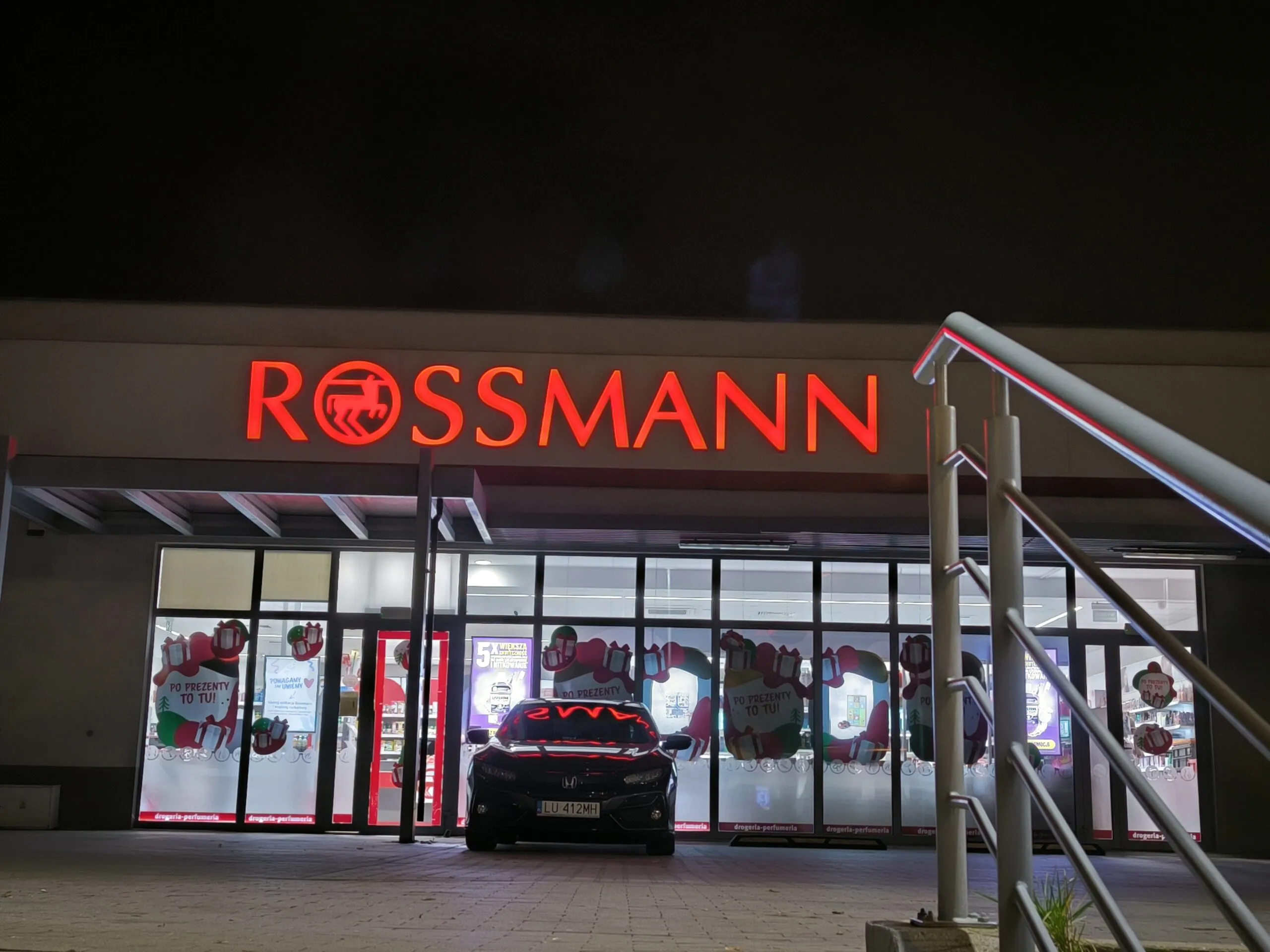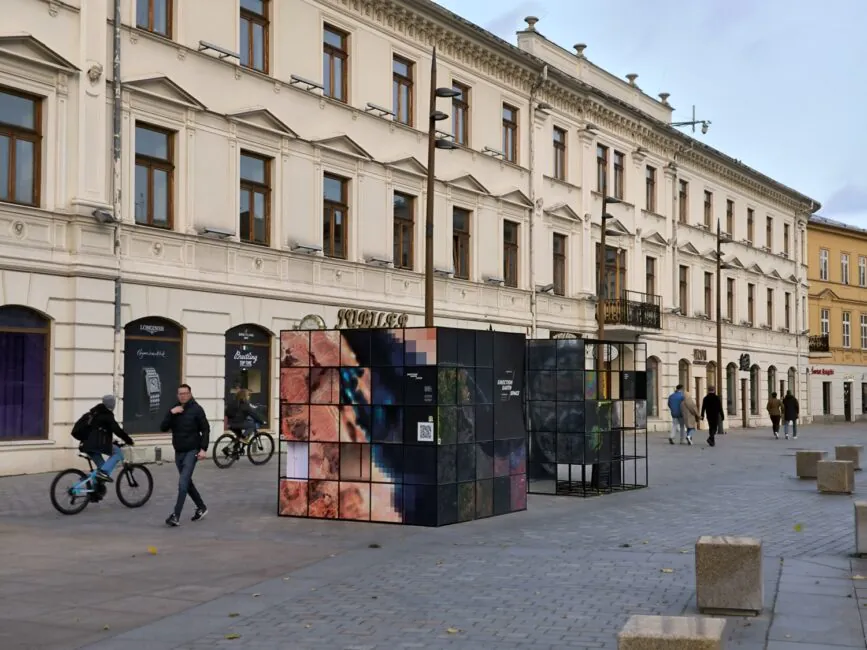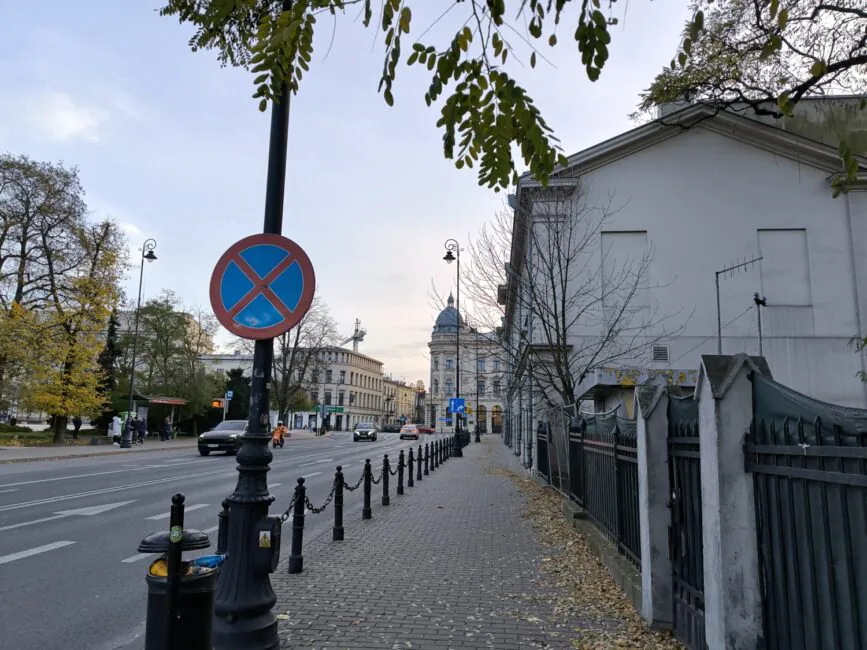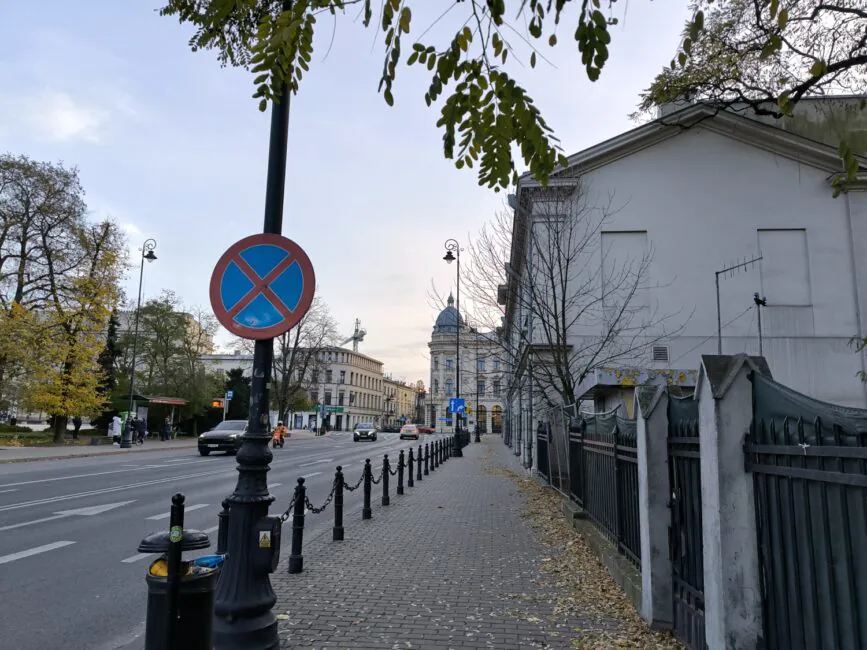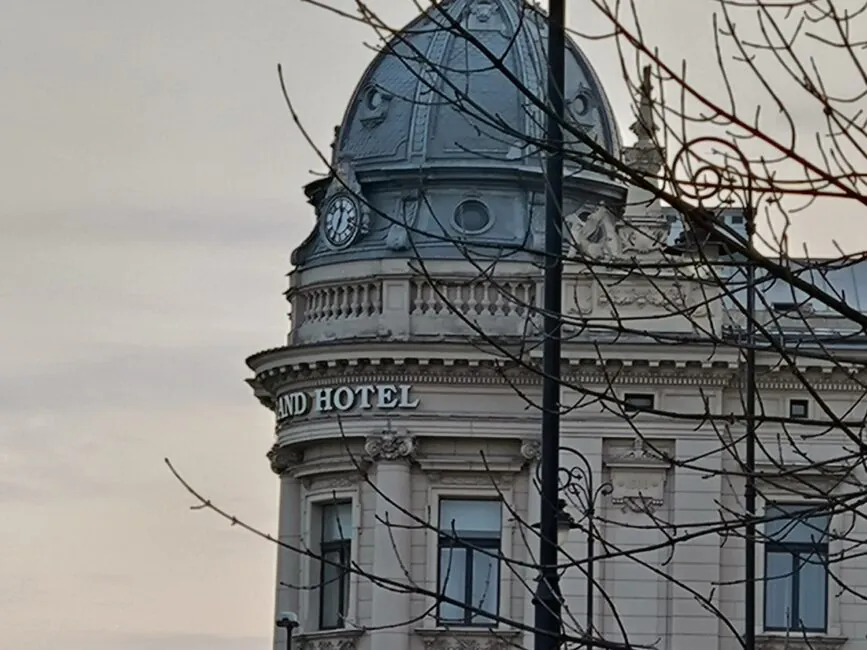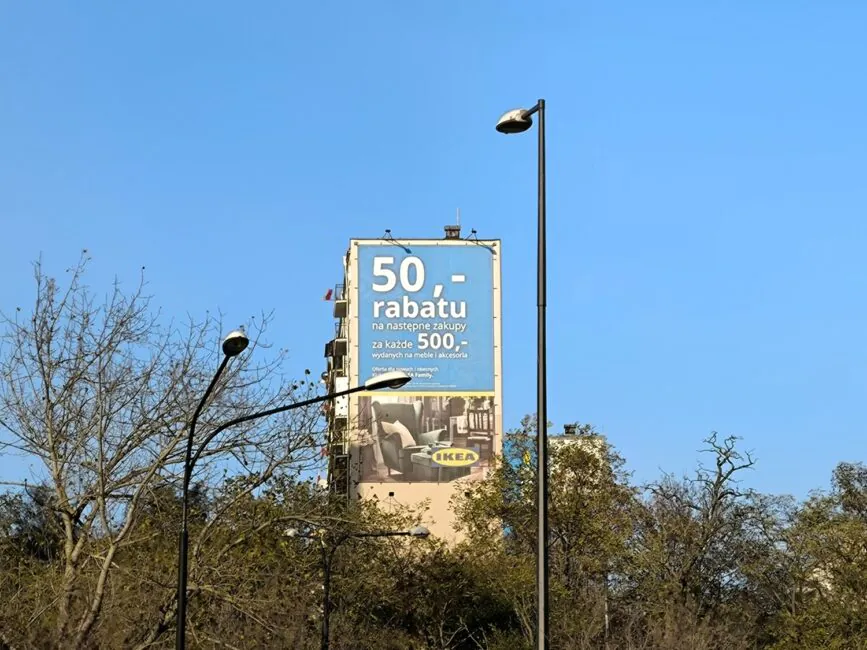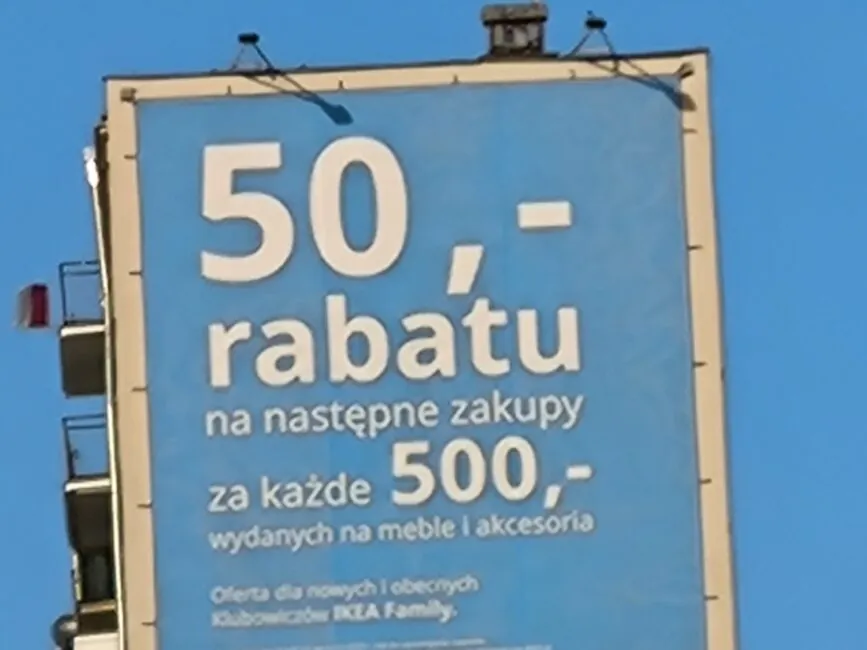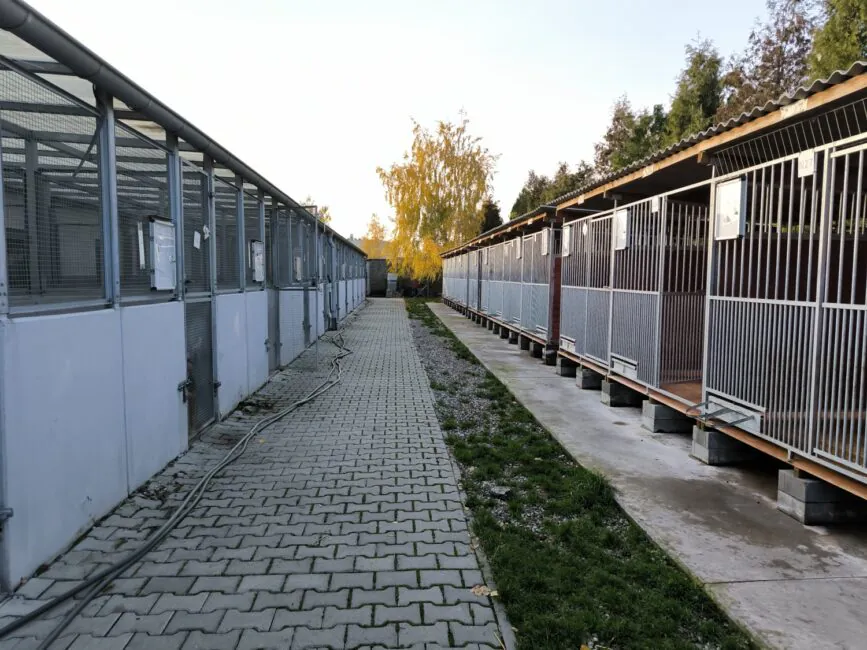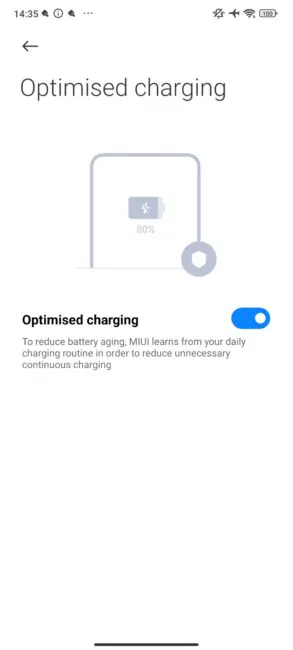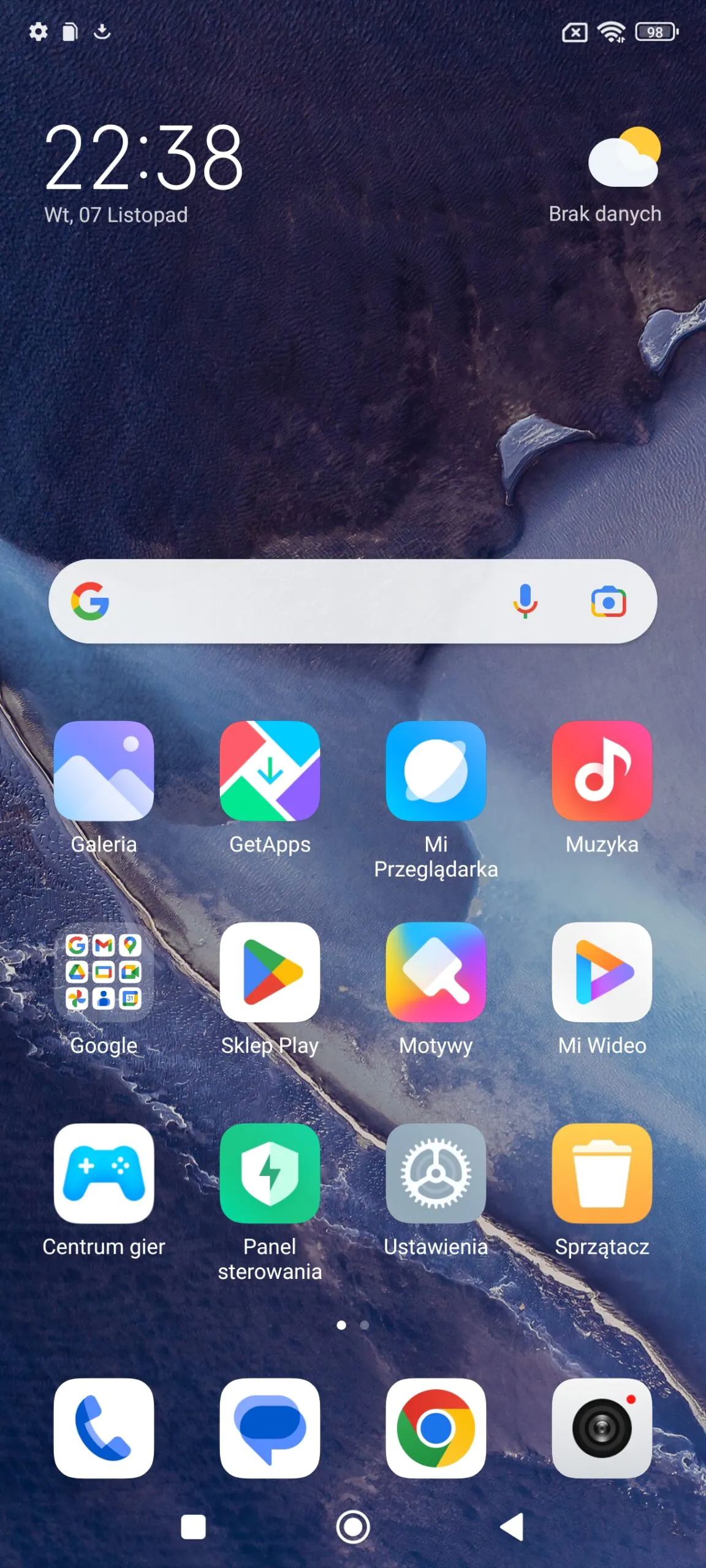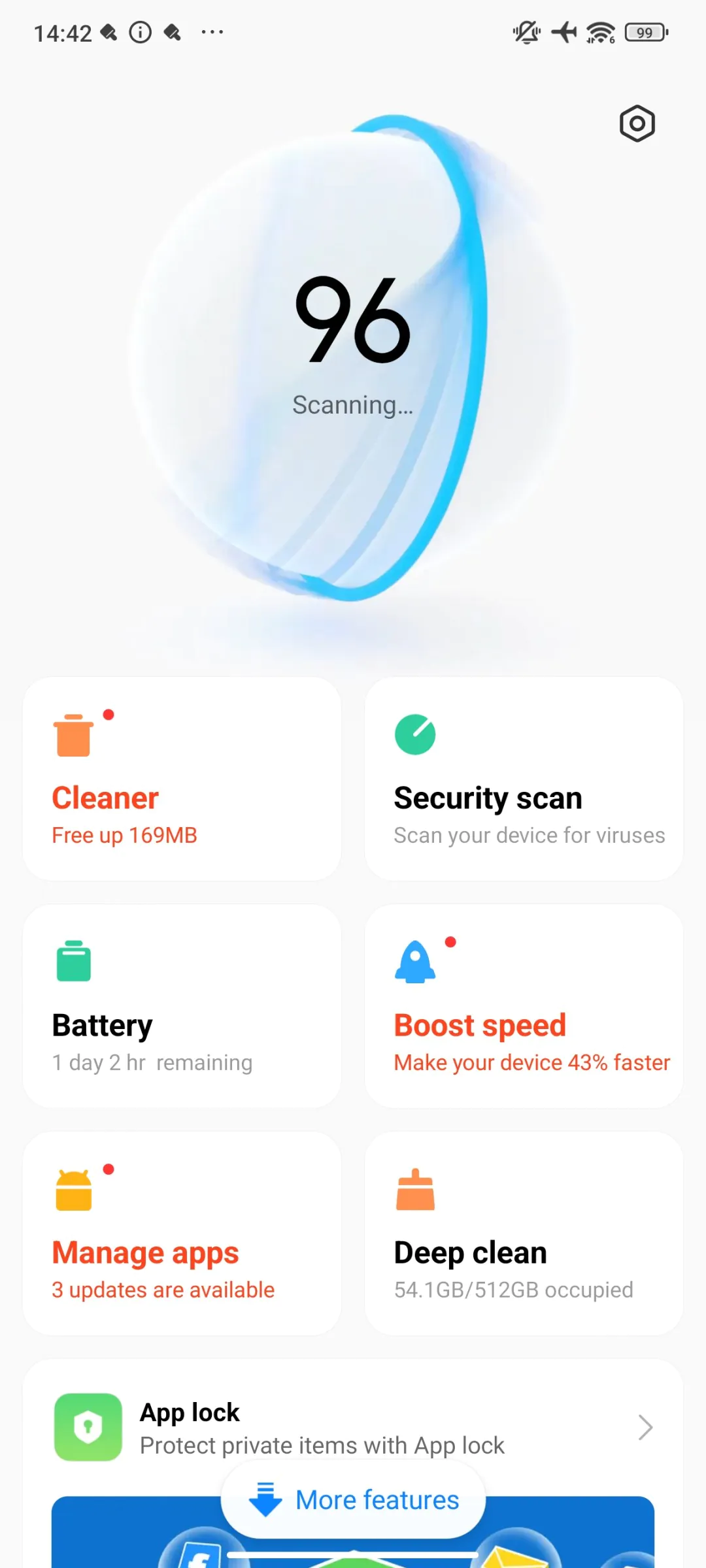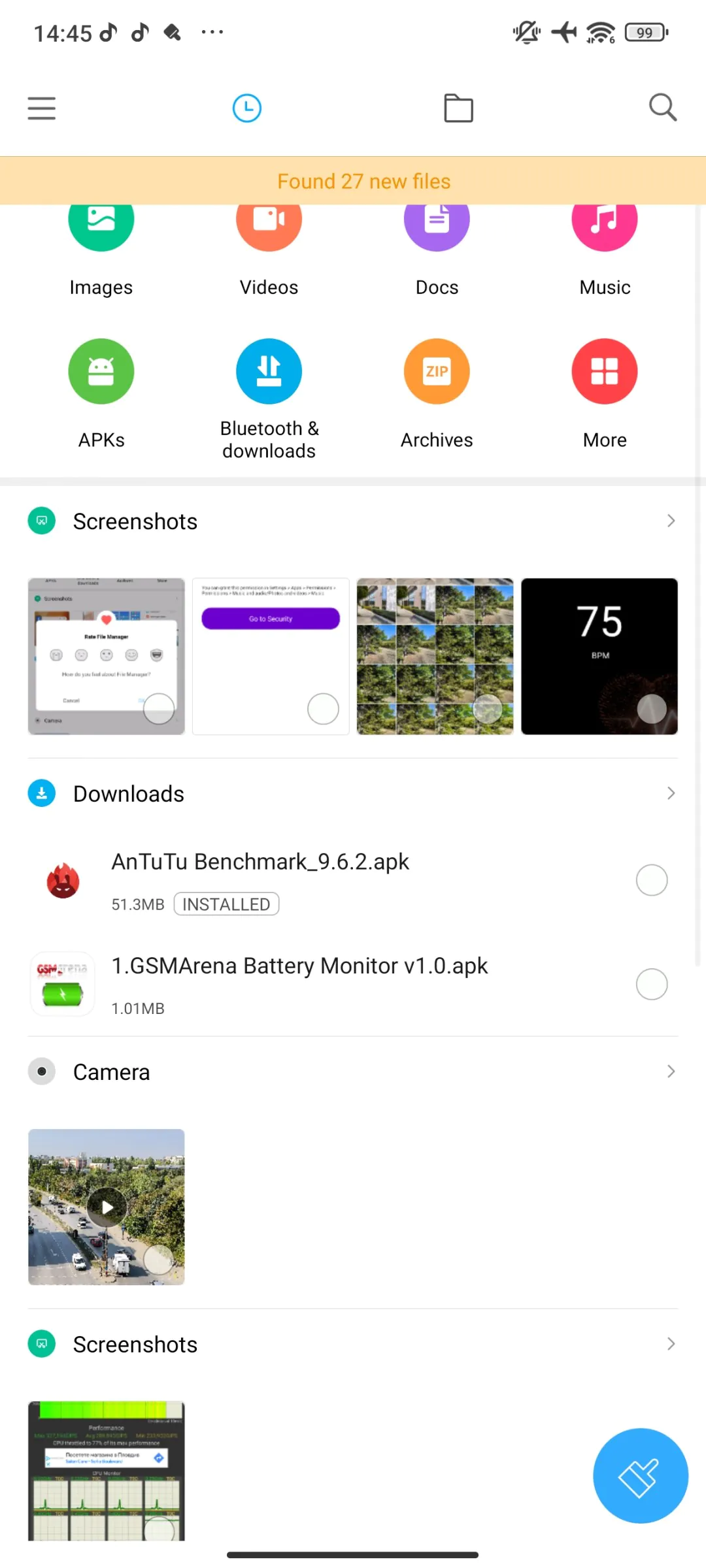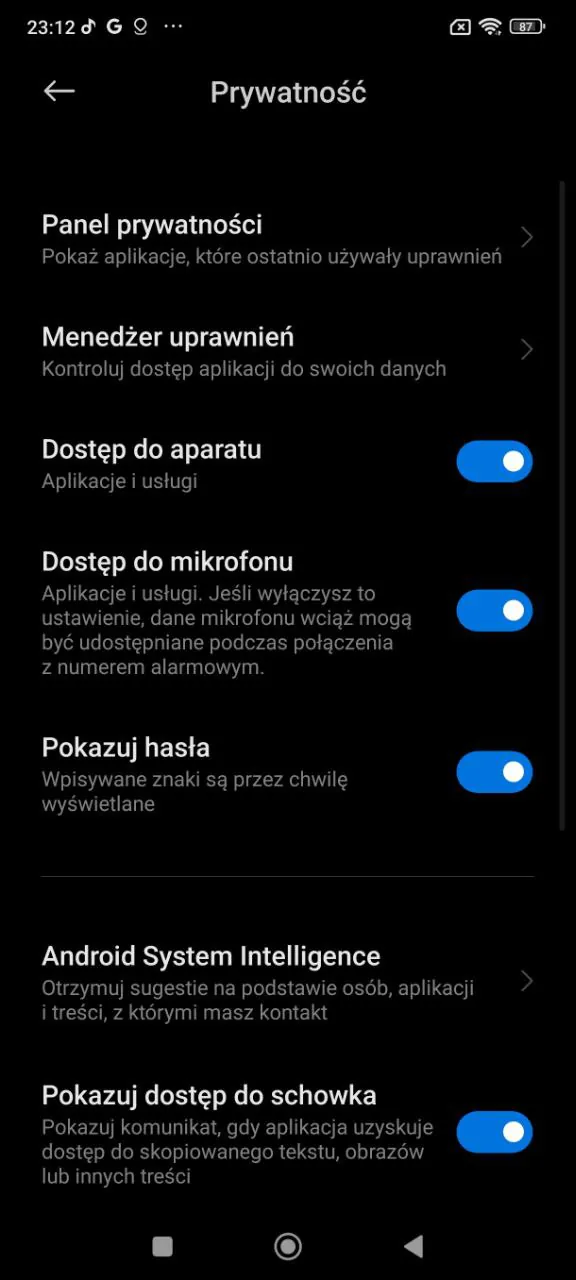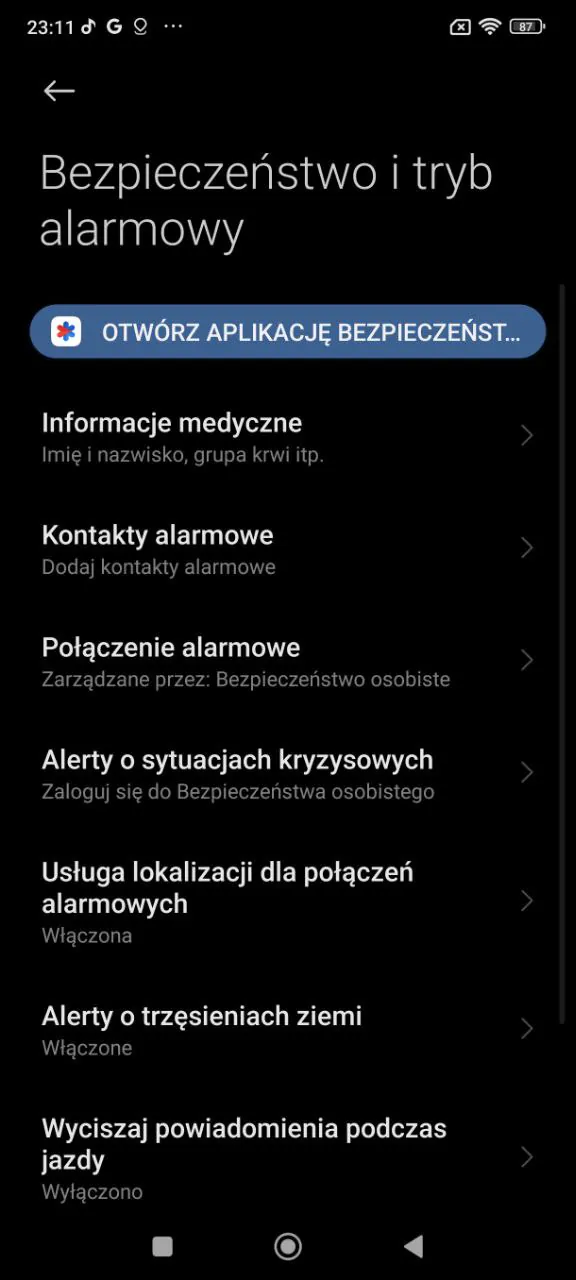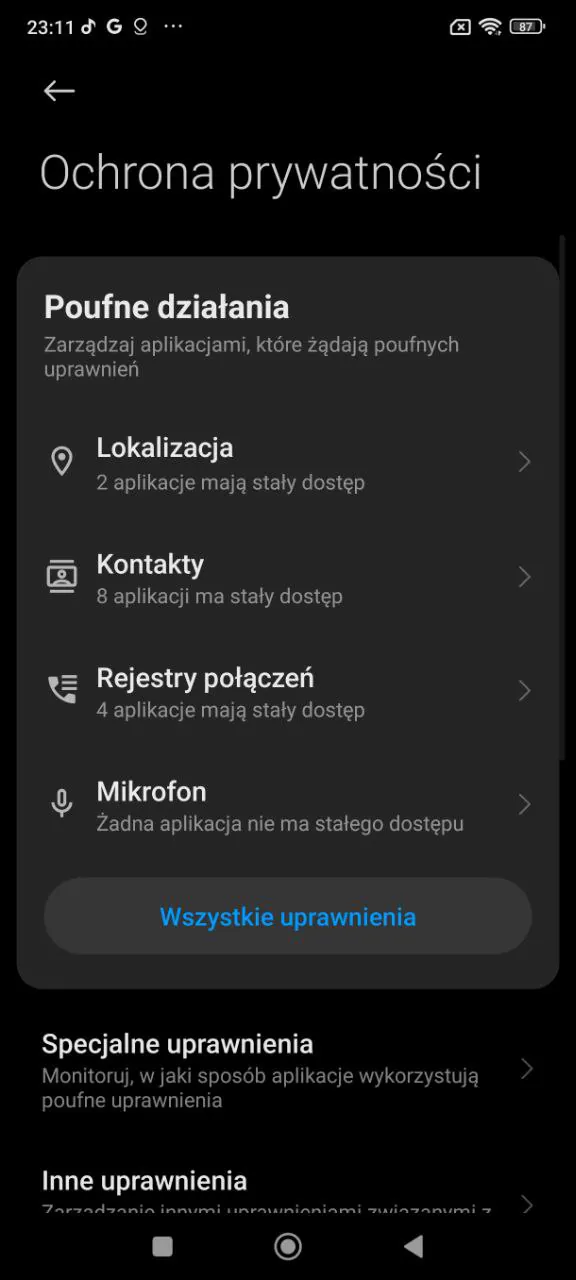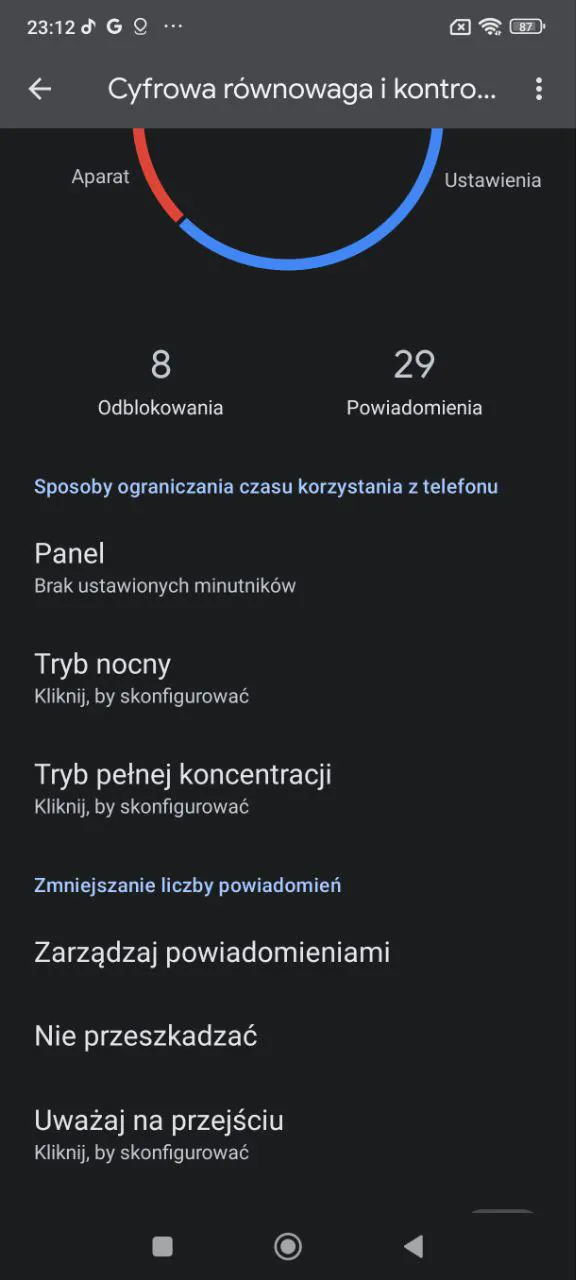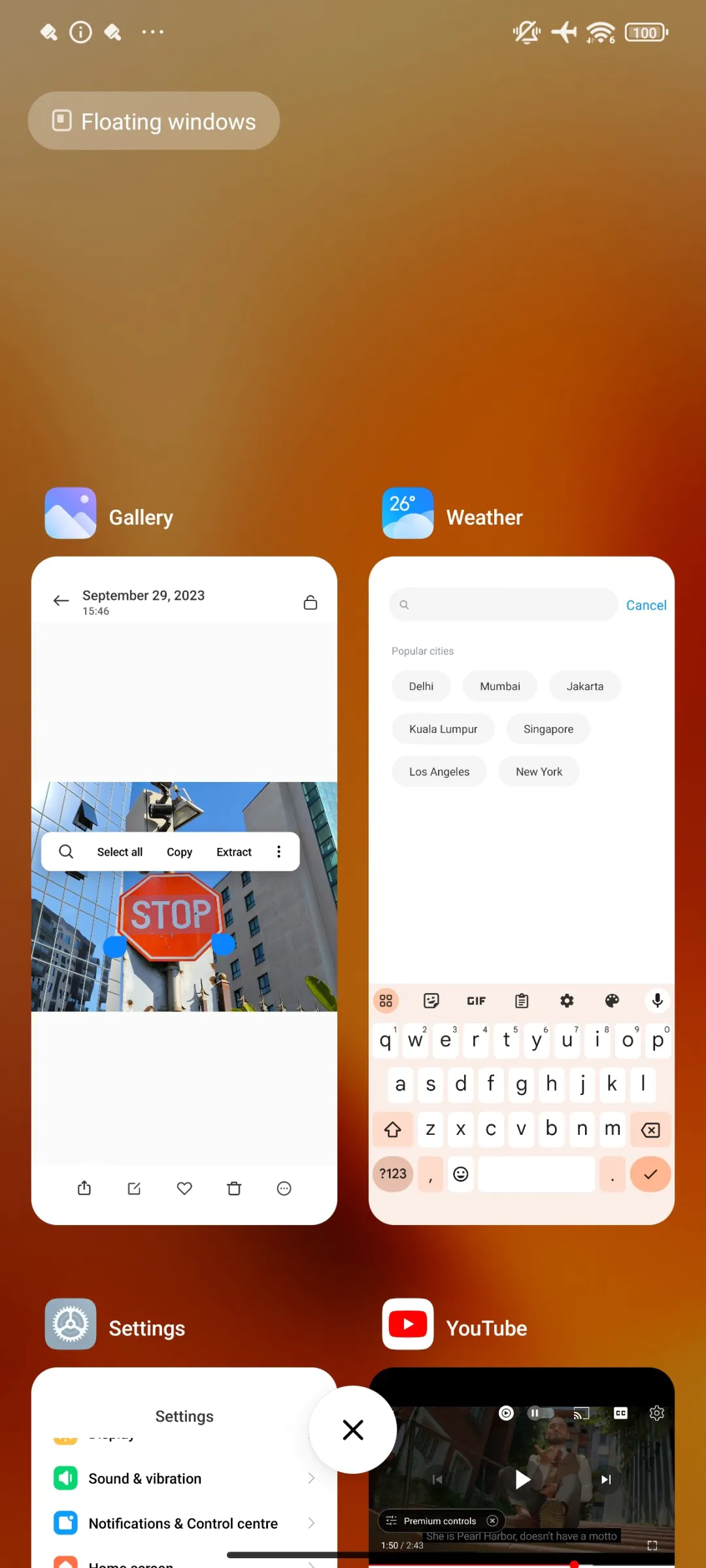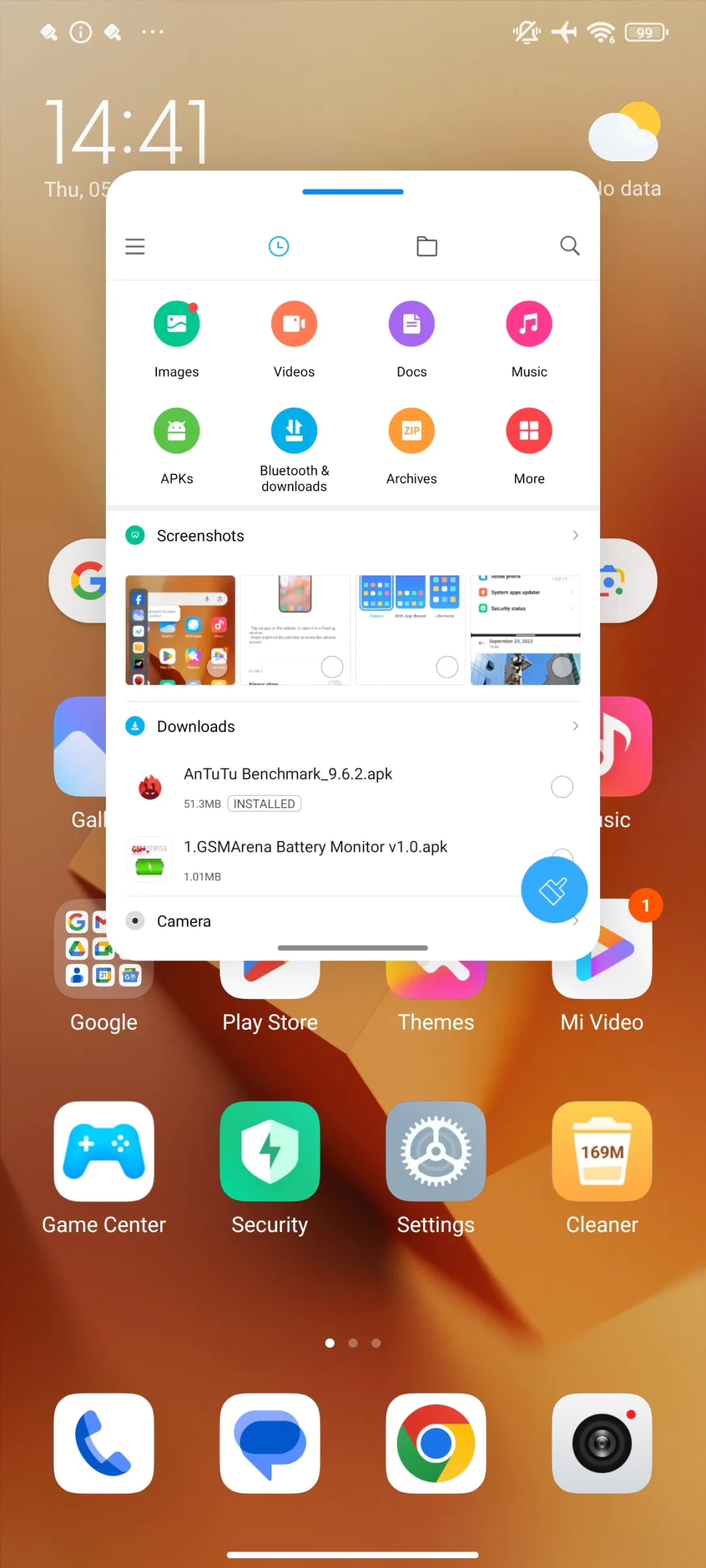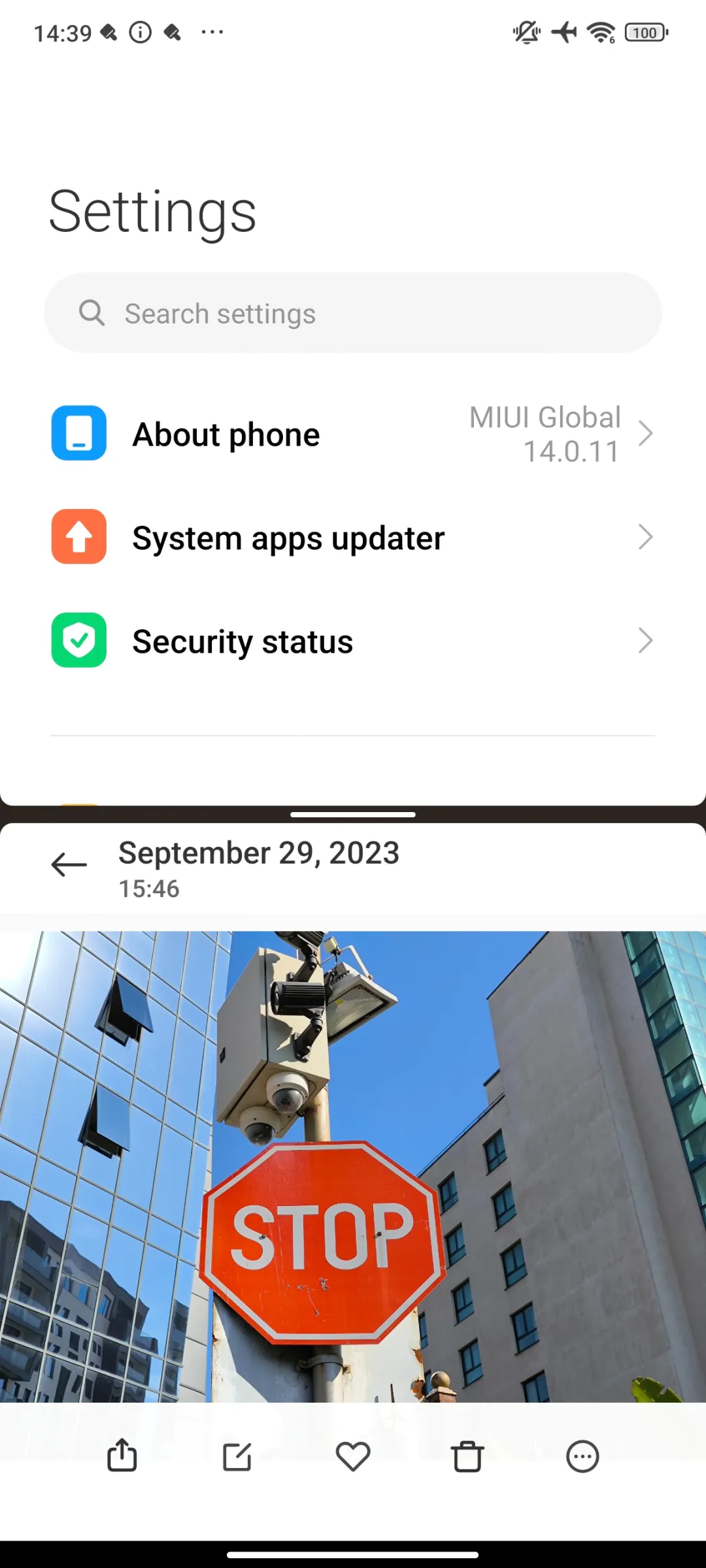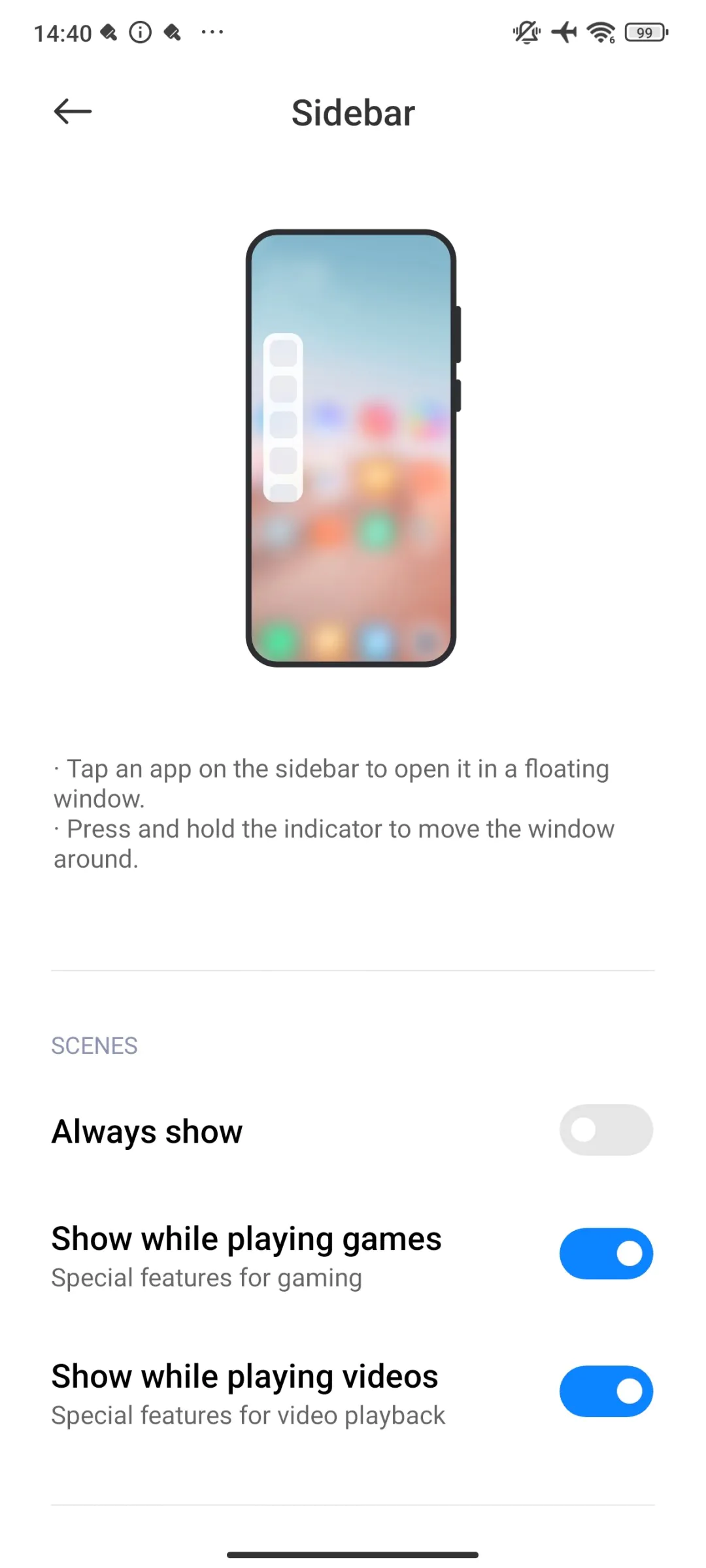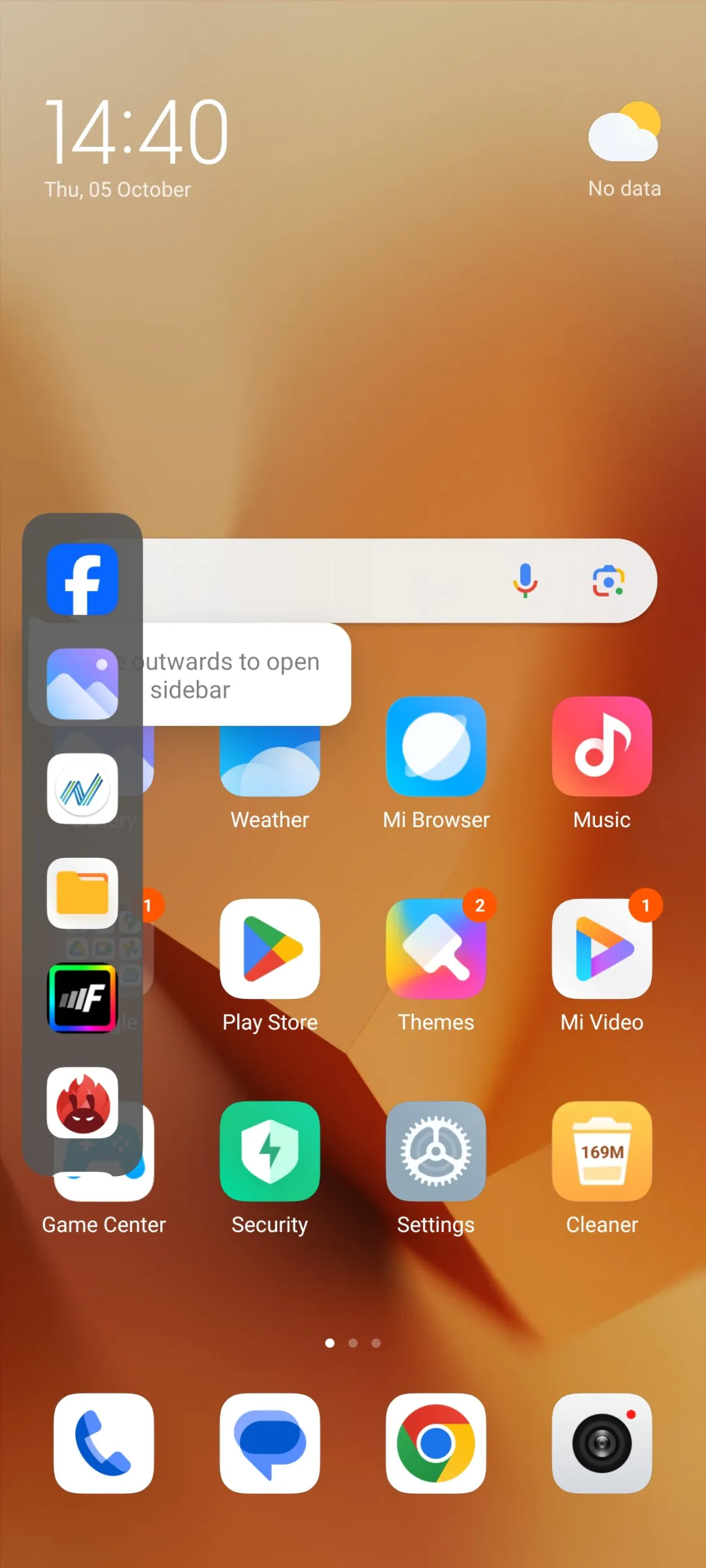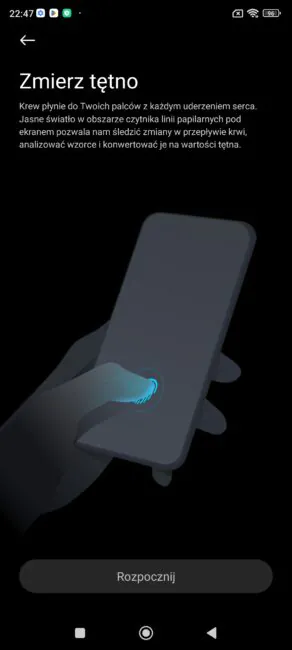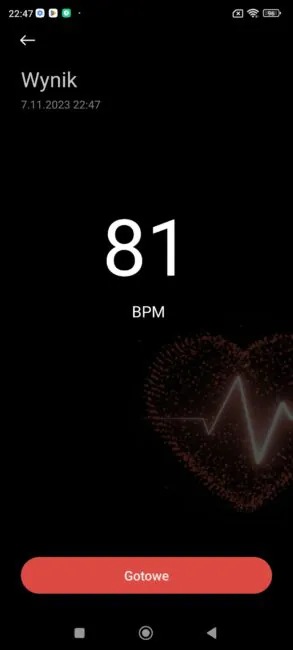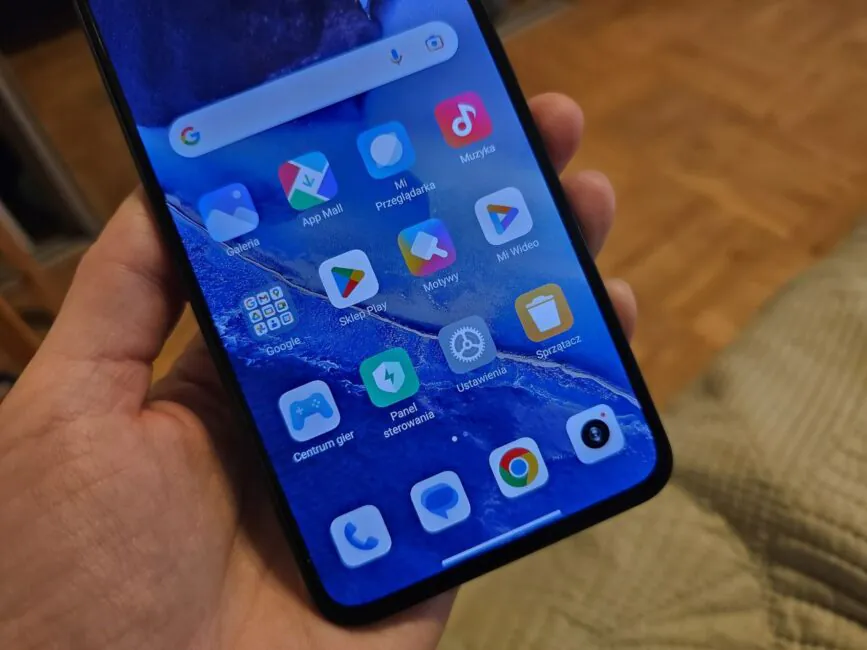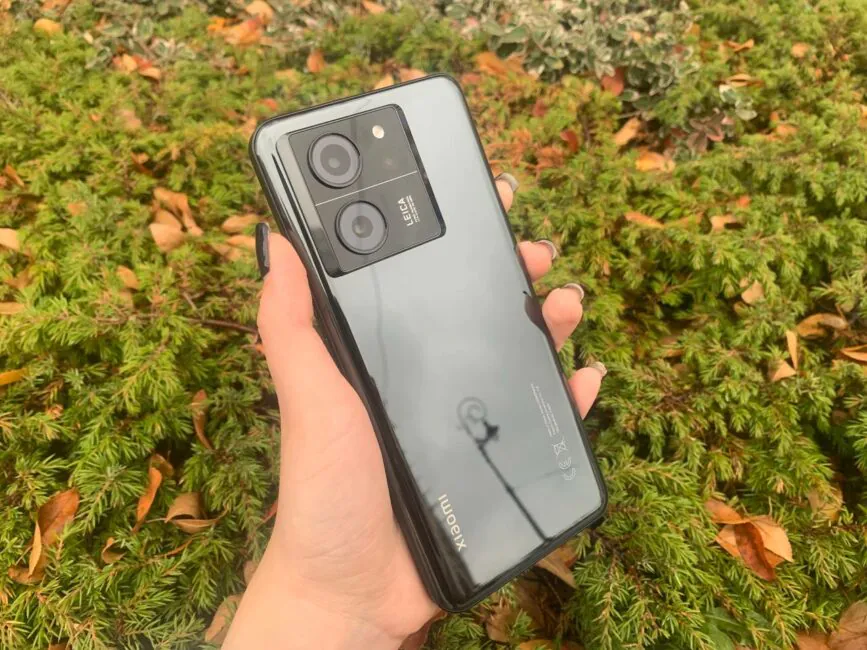© ROOT-NATION.com - Use of content is permitted with a backlink.
Astute readers noticed that we recently reviewed the Xiaomi 13T Pro smartphone. Now, it’s time for its “younger brother” – the Xiaomi 13T. Will the absence of “Pro” in the name significantly impact the user experience, and how much will things simplify? This is what we need to find out. I’m curious myself to see how different the models are, but I suspect the nuances will be very minor. Nevertheless, let’s start from the beginning.
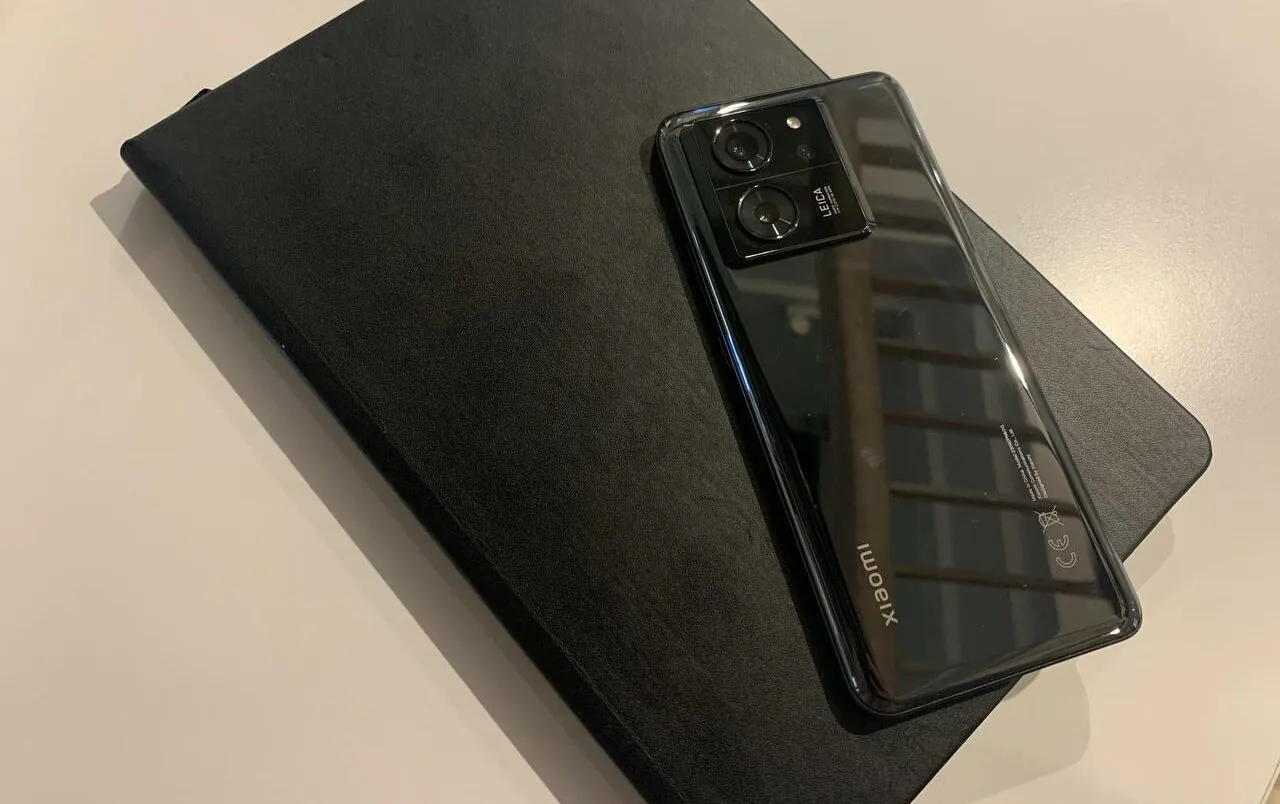
We’re dealing with far from the cheapest option on the market. However, it comes at a significantly lower cost than the Pro model. To be precise, around $600 for the 8/256 GB configuration compared to approximately $800 for the 12/256 GB Xiaomi 13T Pro. In online stores, you can find the 13T for a much more pleasant price – starting from $460.
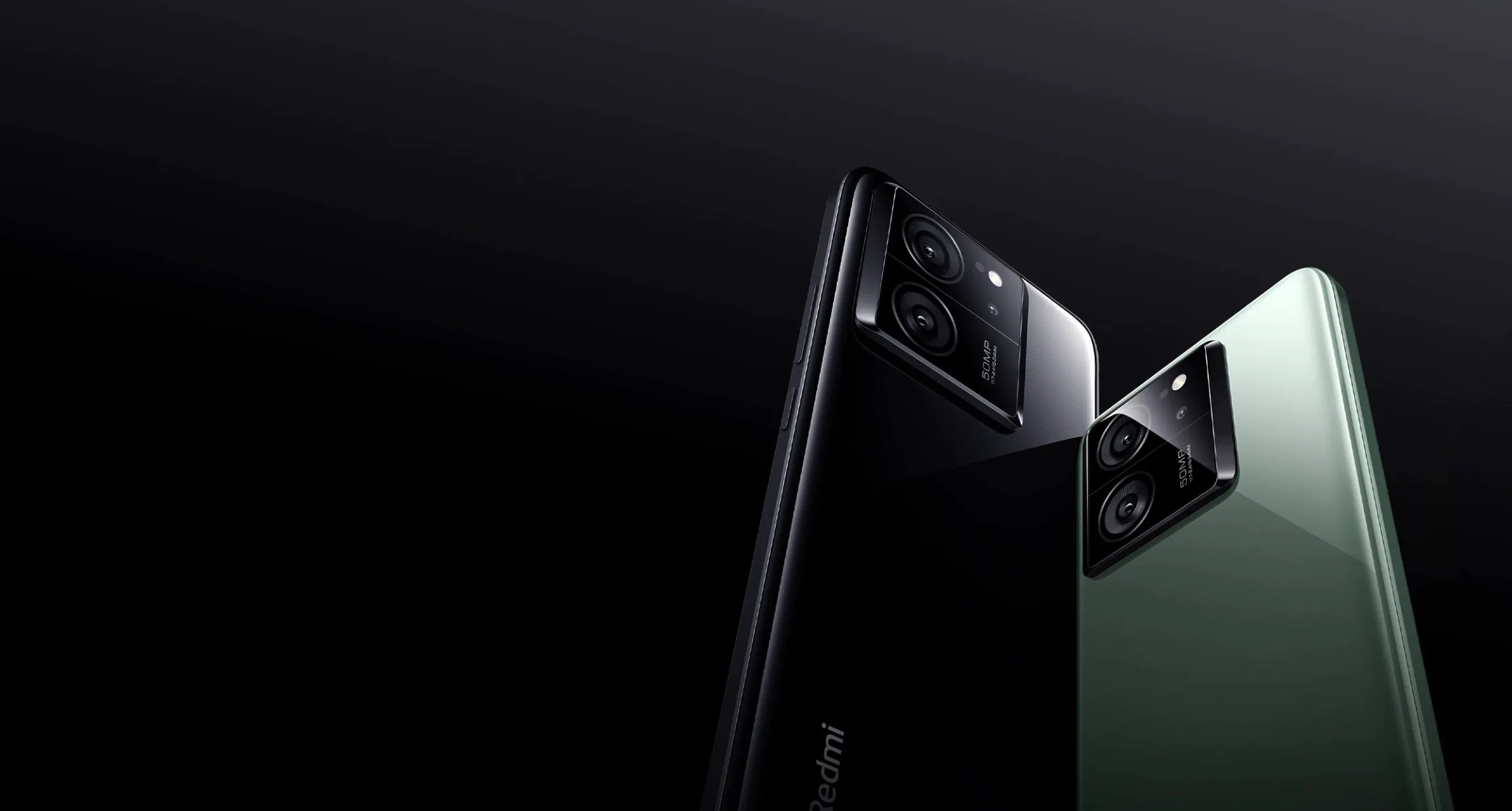
You can compare the regular 13T and Pro here. They look identical. The advanced version has a more powerful processor, more memory (faster too – UFS 4.0), newer Wi-Fi 7, and faster charging (120W compared to 67W). The battery capacity remains identical, as well as the camera setup (the only difference being that the 13T, due to its weaker processor, doesn’t support 8K video like the Pro). The screens are also identical and of high quality.
The model is available in three color options: Green, Blue, Black.

Read also: Xiaomi 13T Pro Smartphone Review
Xiaomi 13T specifications
- Processor: MediaTek Dimensity 8200 Ultra (4nm), Mali-G610 graphics
- RAM: 8 GB
- Storage: 256 GB, UFS 3.1
- Display: 6.67″, CrystalRes AMOLED, 144 Hz, 1220×2712 pixels, 12-bit color depth, Dolby Vision, HDR10+, average brightness 1200 nits, peak brightness 2600 nits, refresh rate – 144 Hz
- Cameras: Leica optics Main block 50 MP, f/1.9, equivalent to 24 mm, 1/1.28″, 1.22 µm, PDAF, OIST lens 50 MP, f/1.9, equivalent to 50 mm, 1/2.88″, 0.61 µm, PDAF, 2x optical zoom
- Cameras: Leica optics Main block 50 MP, f/1.9, equivalent to 24 mm, 1/1.28″, 1.22 µm, PDAF, OIST lens 50 MP, f/1.9, equivalent to 50 mm, 1/2.88″, 0.61 µm, PDAF, 2x optical zoom
-
- Ultra-wide 12 megapixel, f/2.2, 15 mm equivalent, 1/3.06″, 1.12 μm, Selfie 20 megapixel, f/2.2, 0.8 μm
- Video recording: 8K@24 fps, 4K@24/30/60 fps, 4K/1080p@30 fps HDR10+, 1080p@30/60/120/240 fps; 10-bit LOG, gyro-EIS
- Battery: 5000 mAh, 67W charging
- Sound: Stereo, Dolby Atmos, Hi-Res Audio
- Operating System: Android 13 with MIUI 14
- Wireless Technologies: Wi-Fi 802.11 a/b/g/n/ac/6e/7 tri-band, Bluetooth 5.4, GPS (A-GPS L1+L5, GLONASS G1, QZSS, NavIC L5, BDS, Galileo E1+E5a), NFC, infrared port, Dual SIM (two Nano-SIM or Nano-SIM + eSIM)
- Sensors: 360° ambient light, color temperature, sunlight mode, accelerometer, flicker sensor, infrared port, proximity sensor, under-display fingerprint scanner, digital compass, gyroscope
- Dimensions and weight: 162.20×75.70×8.49 mm, 198 g
- Protection certification: IP68, dust and water-resistant (can withstand immersion up to 1.5 meters for 30 minutes)
Package contents
The phone arrived for review in a white cardboard box. It’s worth noting that everything needed for comfortable use is included in the package – the Xiaomi 13T itself, of course, a full-fledged 67W charger (and this is good news, no need to search for old cables or chargers), a SIM tray ejector tool, and documentation.
There’s also a transparent case included, which will protect the cameras from scratches since both the camera bump and the cameras themselves protrude above the body, which can be risky. However, all included cases tend to yellow and become unusable. So, I think you’ll need such a case until you buy a new one.
A protective film is already applied to the screen. It’s not of the best quality as it collects fingerprints and scratches easily.
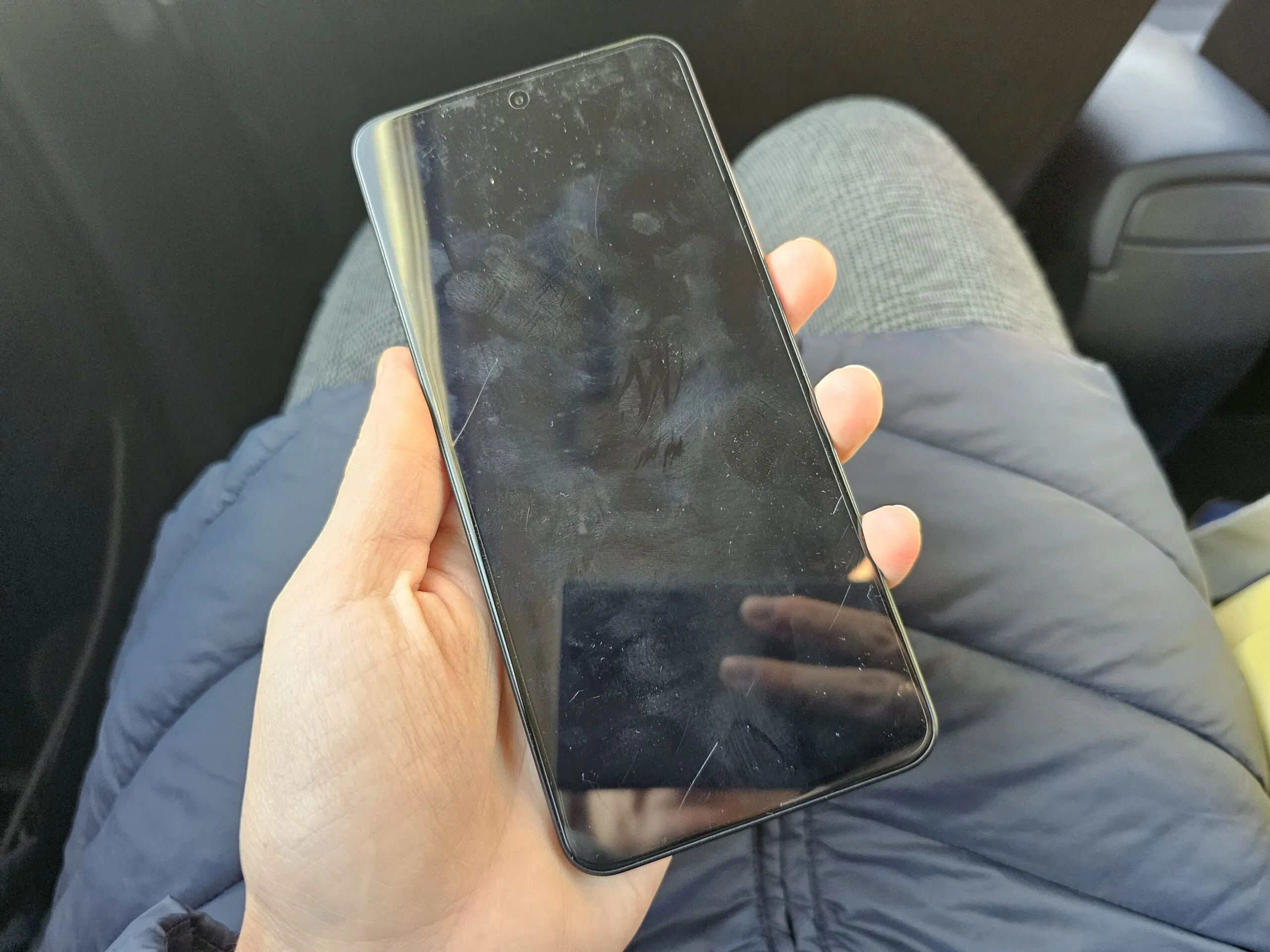
Read also: Xiaomi 13 smartphone review: almost perfect
Design and layout of elements
As mentioned earlier, we can purchase the gadget in different colors, namely – green, blue, black. For me, the black option is the best because it’s not entirely black – more on that later, but it looks the most elegant and classic.
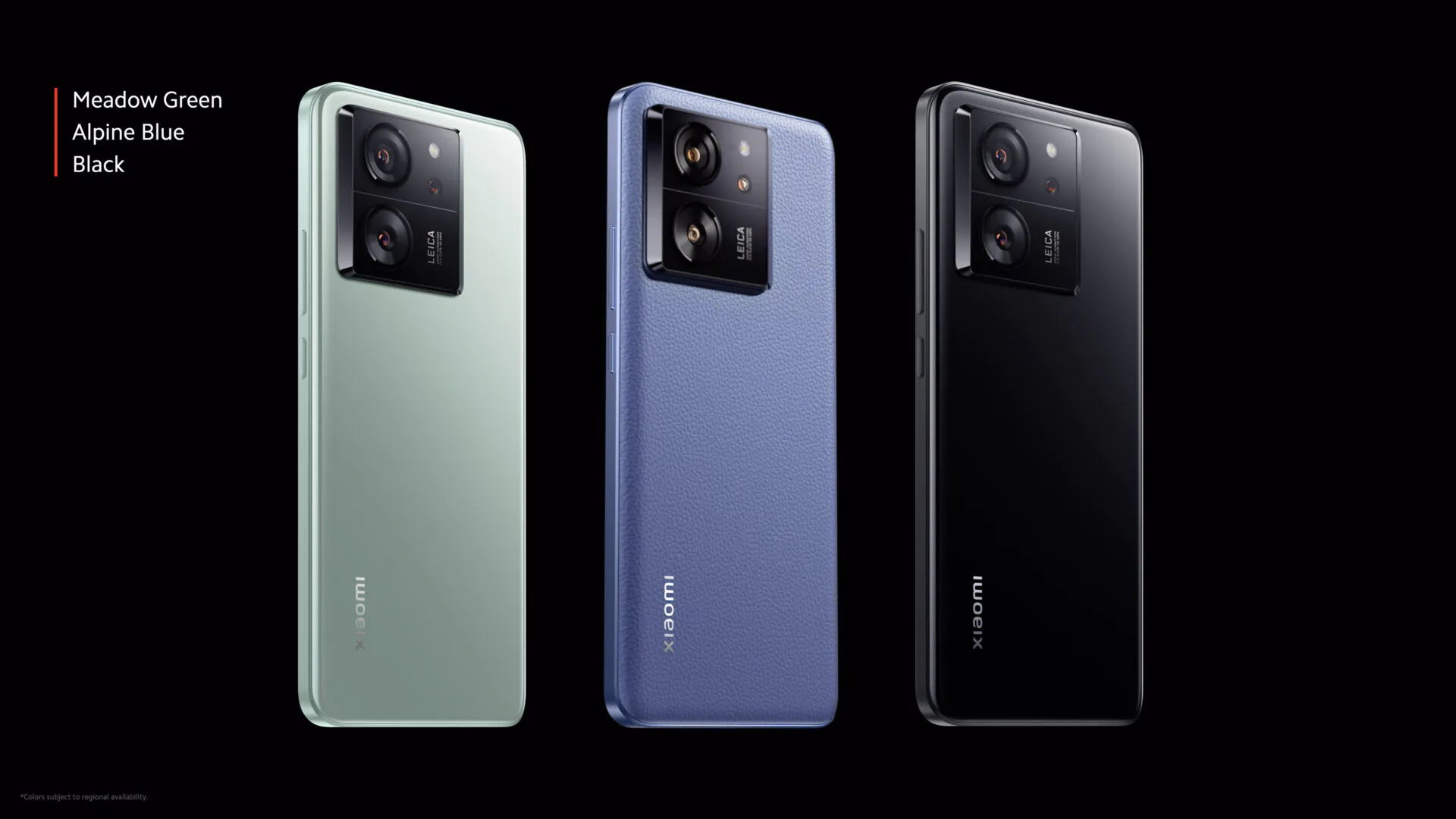
The design and colors of the device are the same as in the 13T Pro version. In the blue version, the “back” is also made of eco-leather. It’s a beautiful and practical option; we tested the “leather” 13T Pro not so long ago. One nuance: the leather 13T is not available in all stores.
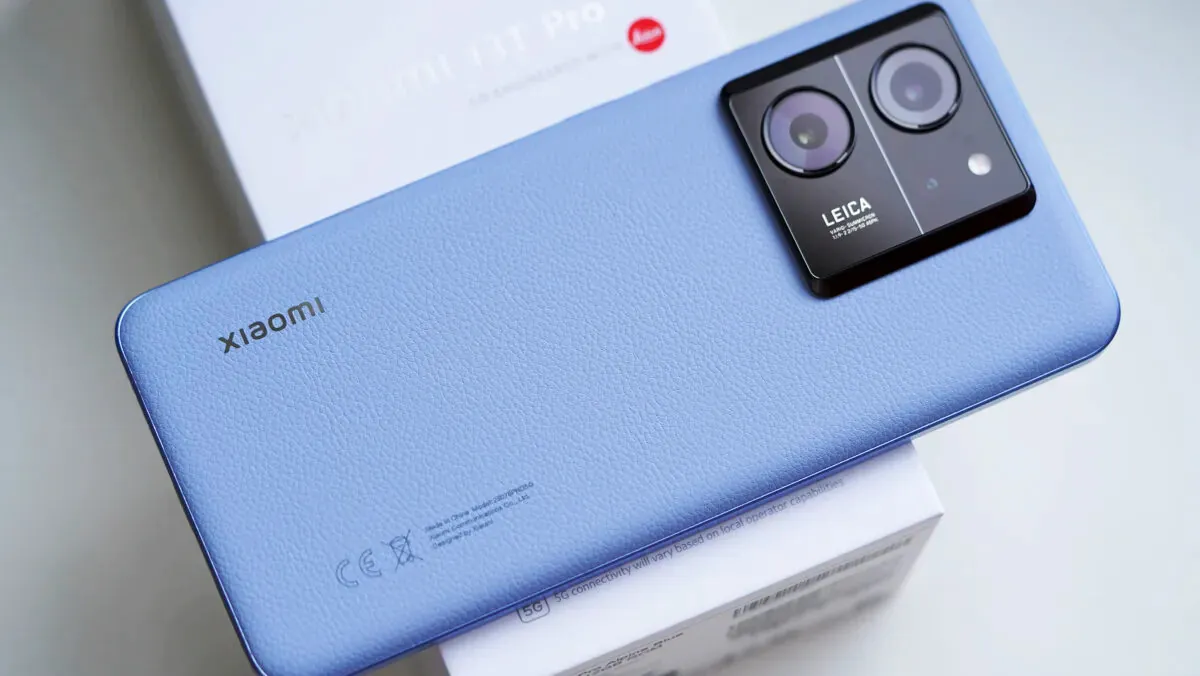
But let’s get back to the regular 13T. On the front panel, more precisely on the screen, you can see the selfie camera as well as the fingerprint scanner located at the bottom of the display.
The borders around the perimeter are plastic (which is not surprising, they were the same on the 13T Pro), also flat, adhering to modern design trends. On the right side, there are functional buttons – power and volume control. The left side, on the other hand, is empty.
The USB Type-C port and the SIM card tray are located at the bottom – a design choice we’ve already seen in the Xiaomi 13T Pro.
However, the coolest part is the back panel. On it, we find a square camera bump housing three lenses – the main, telephoto, and wide-angle lenses. To the left, there is a large XIAOMI logo. The color is described as black, but it’s more of a metallic black color.
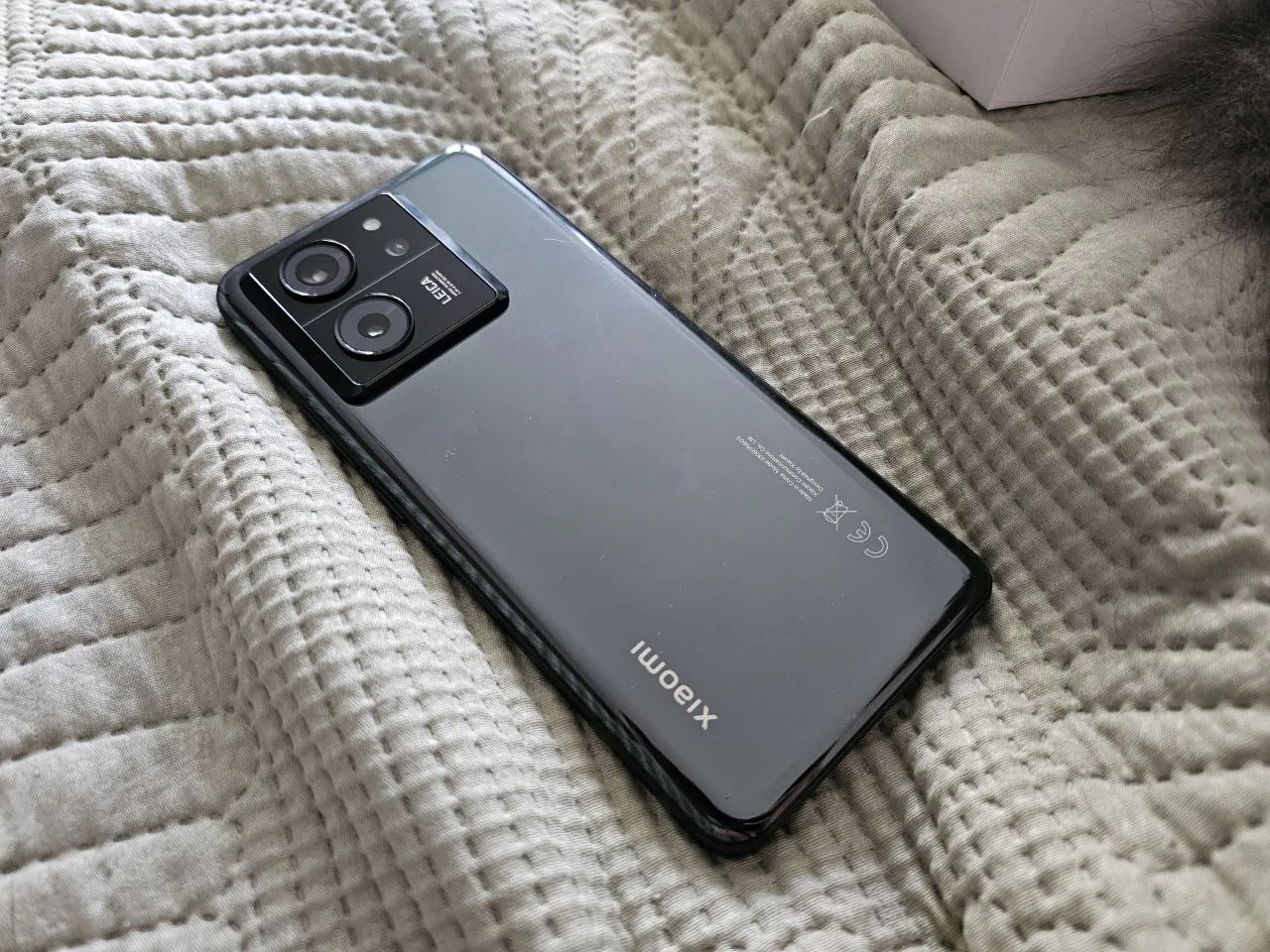 Returning to the camera bump, it’s worth noting that such a design is a bit inconvenient because if you place the model on a flat surface with the back down, there’s a chance of damaging the cameras or the entire bump. Therefore, I recommend using a case to protect the device, although it may make the smartphone look less stylish.
Returning to the camera bump, it’s worth noting that such a design is a bit inconvenient because if you place the model on a flat surface with the back down, there’s a chance of damaging the cameras or the entire bump. Therefore, I recommend using a case to protect the device, although it may make the smartphone look less stylish.
Interestingly, if you hold the Xiaomi 13T without a case, the index finger rests against the prominent camera bump, reducing the likelihood of the phone slipping out of your hand.
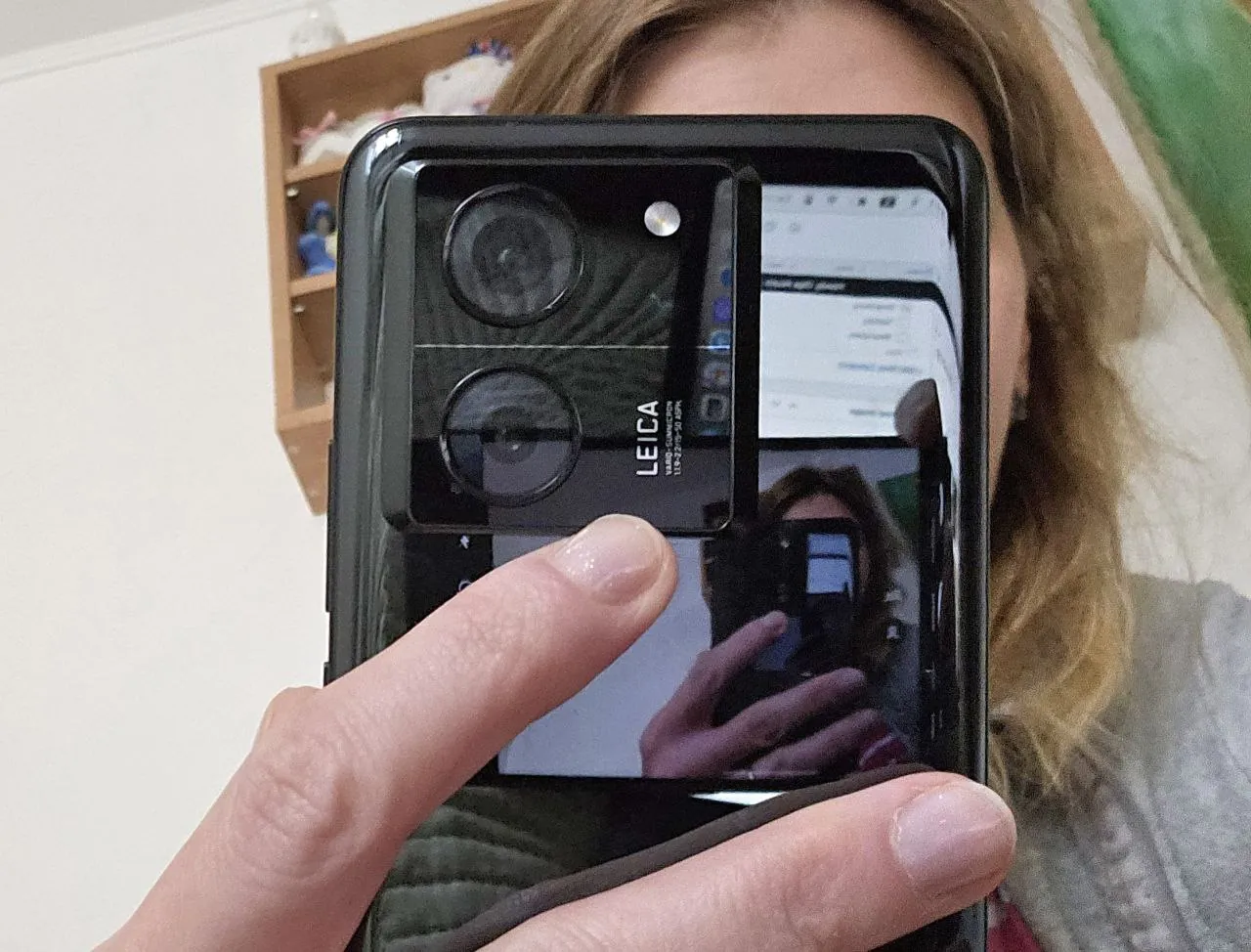
As for the back panel, it’s elegant, stylish, shines in the sunlight, and can essentially serve as a mirror.
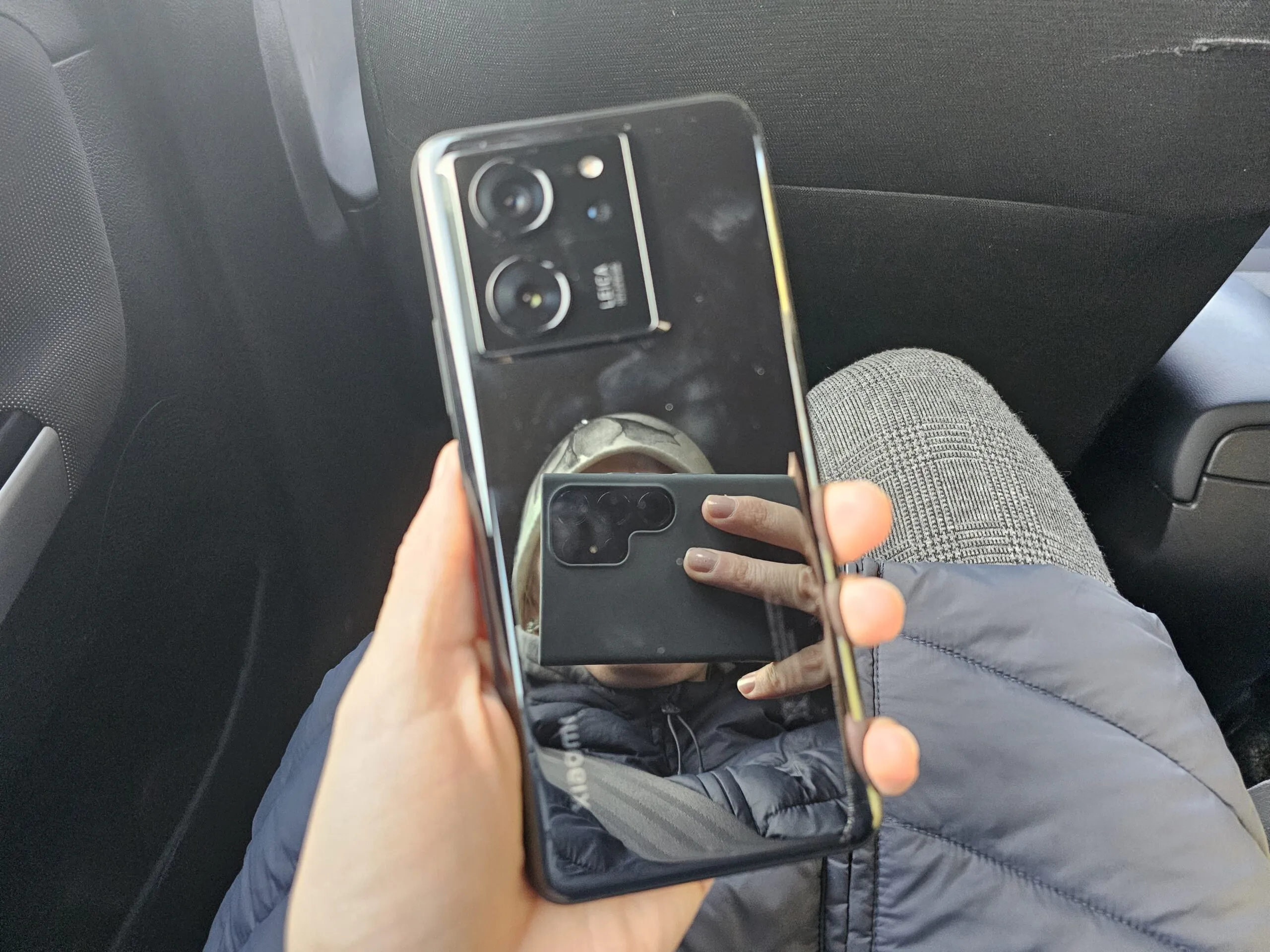
The material on the back looks like glass, although I wasn’t 100% sure about its composition. However, most tech portals assert that it’s a polymeric material that convincingly mimics glass. I tend to agree with them, but it doesn’t feel exactly like real glass to the touch.
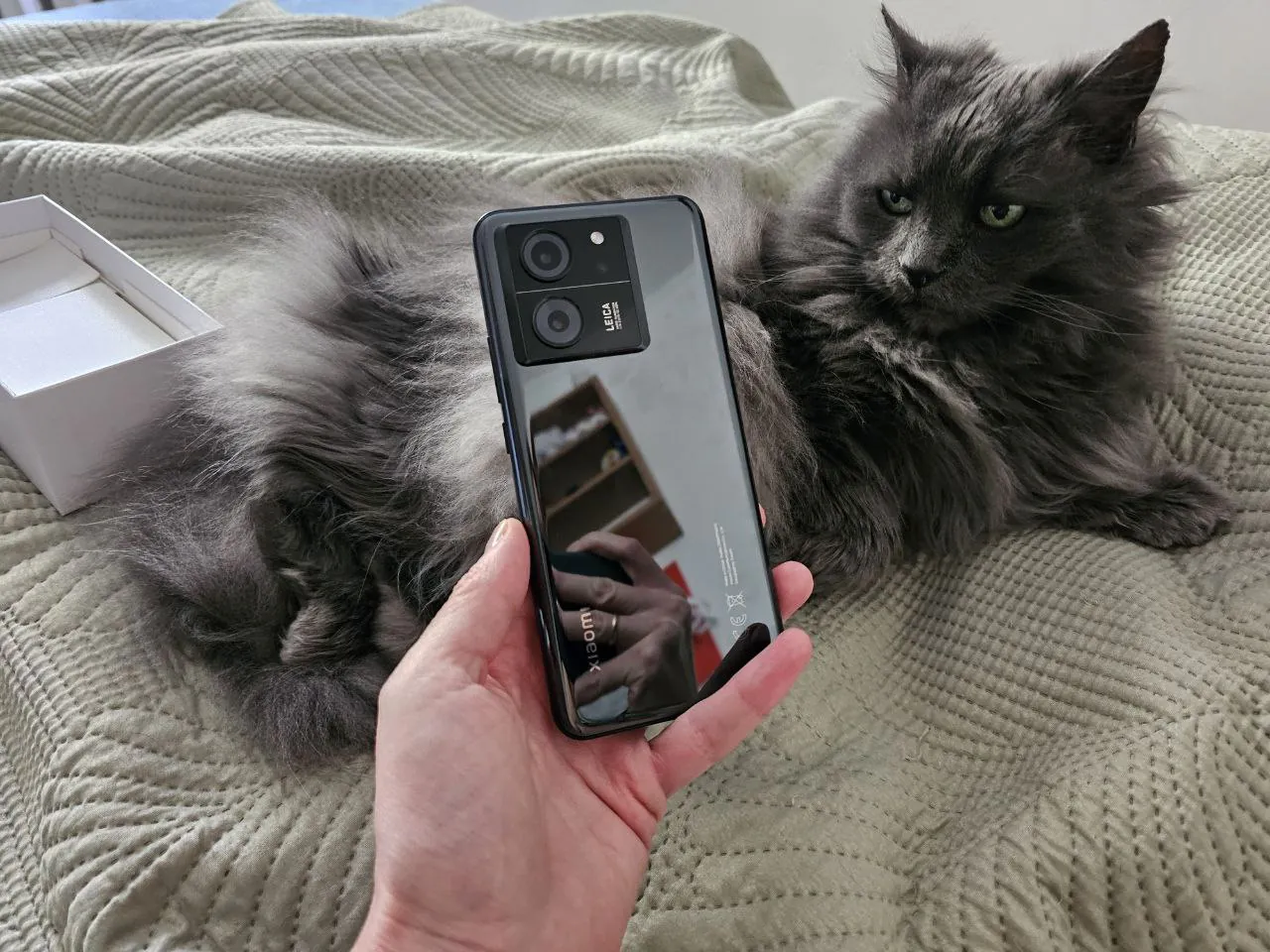 But the main issue is that this panel gets horribly, horribly (!) dirty. And that’s a downside because any touch of the hand on the back results in the phone accumulating fingerprints, dirt, dust, etc. Moreover, the area under the camera island is the most challenging to clean from usage traces. It looks very untidy.
But the main issue is that this panel gets horribly, horribly (!) dirty. And that’s a downside because any touch of the hand on the back results in the phone accumulating fingerprints, dirt, dust, etc. Moreover, the area under the camera island is the most challenging to clean from usage traces. It looks very untidy.
The photos also show how reflective the back panel is. It was impossible to take pictures without reflecting the surroundings, but there’s a certain charm to it.
Summary: Always carry a cloth with you and use a case. Or choose the blue version with a back panel made of eco-leather, although personally, I really like the black one (excluding the described drawbacks).
The Xiaomi 13T smartphone’s body is made decently, and the construction is reliable. Here, we also have an IP68 rating, meaning the phone is well-protected against dust and water (it can be submerged up to 1.5 meters for half an hour).
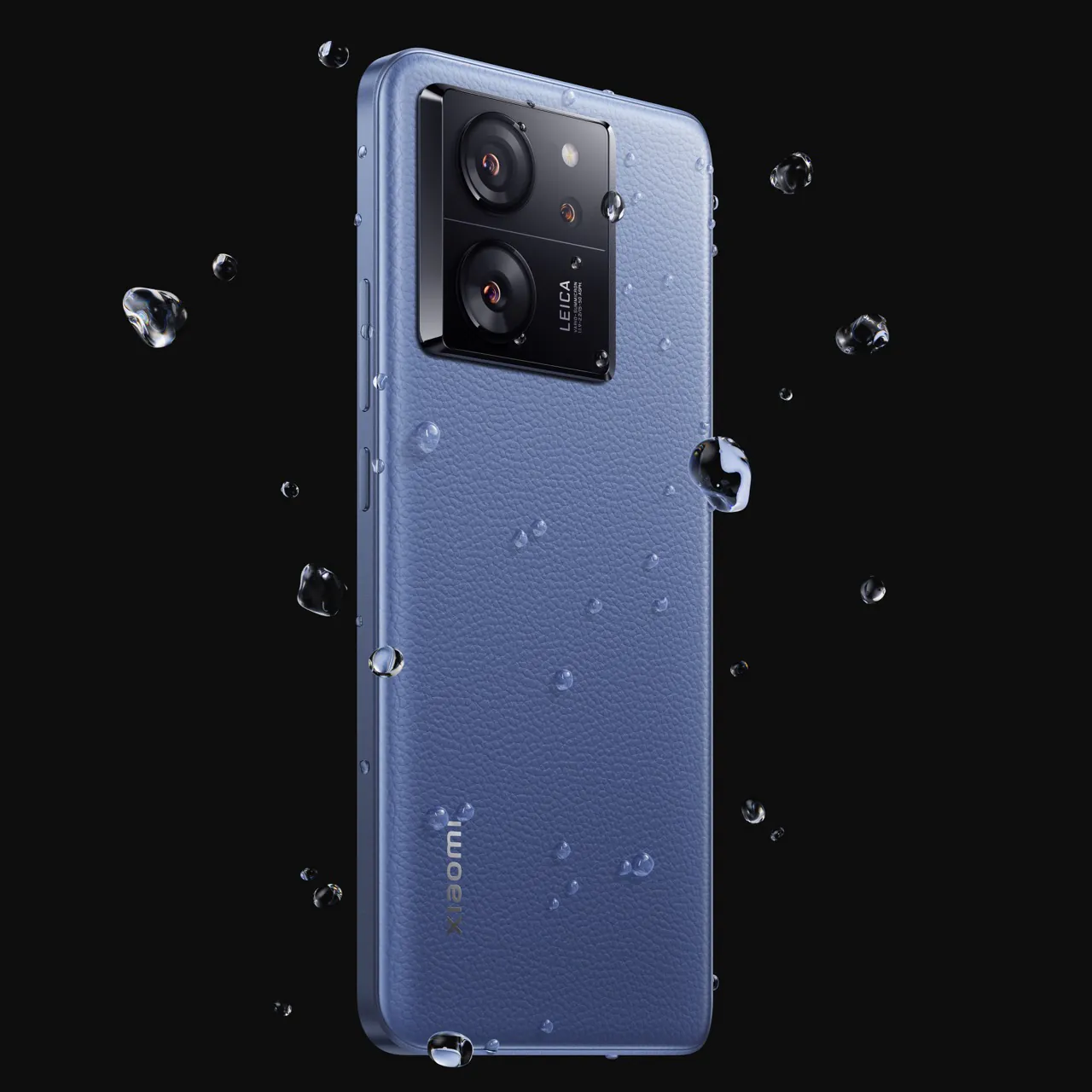
Ergonomics
The phone weighs slightly less than the Pro version – 198 g instead of 206 g; it can’t be called heavy. The 13T is a slim device with relatively thin bezels. The side edges are curved to enhance comfort during use. However, one-handed operation is still inconvenient or even impossible; the smartphone is not very compact.
The convenient placement of the fingerprint scanner enhances comfort during use. It works swiftly and, unlike the Xiaomi 13T Pro, doesn’t have any false presses. We’ll delve into this in more detail in another section of the review.

Read also: Xiaomi Smart Pet Fountain cat drinker review
Xiaomi 13T display
The screen is exactly the same as on the older Pro version – a 6.67-inch CrystalRes AMOLED. This is undoubtedly an advantage, as the display is sharp, vibrant, and high-contrast. The panel is truly premium, featuring a dynamic refresh rate of 144 Hz, a 12-bit color depth, a touch sampling rate of 480 Hz, PWM dimming at 2880 Hz (to prevent flickering), and support for HDR10+ and Dolby Vision. The bezels are moderately slim, including the bottom one..
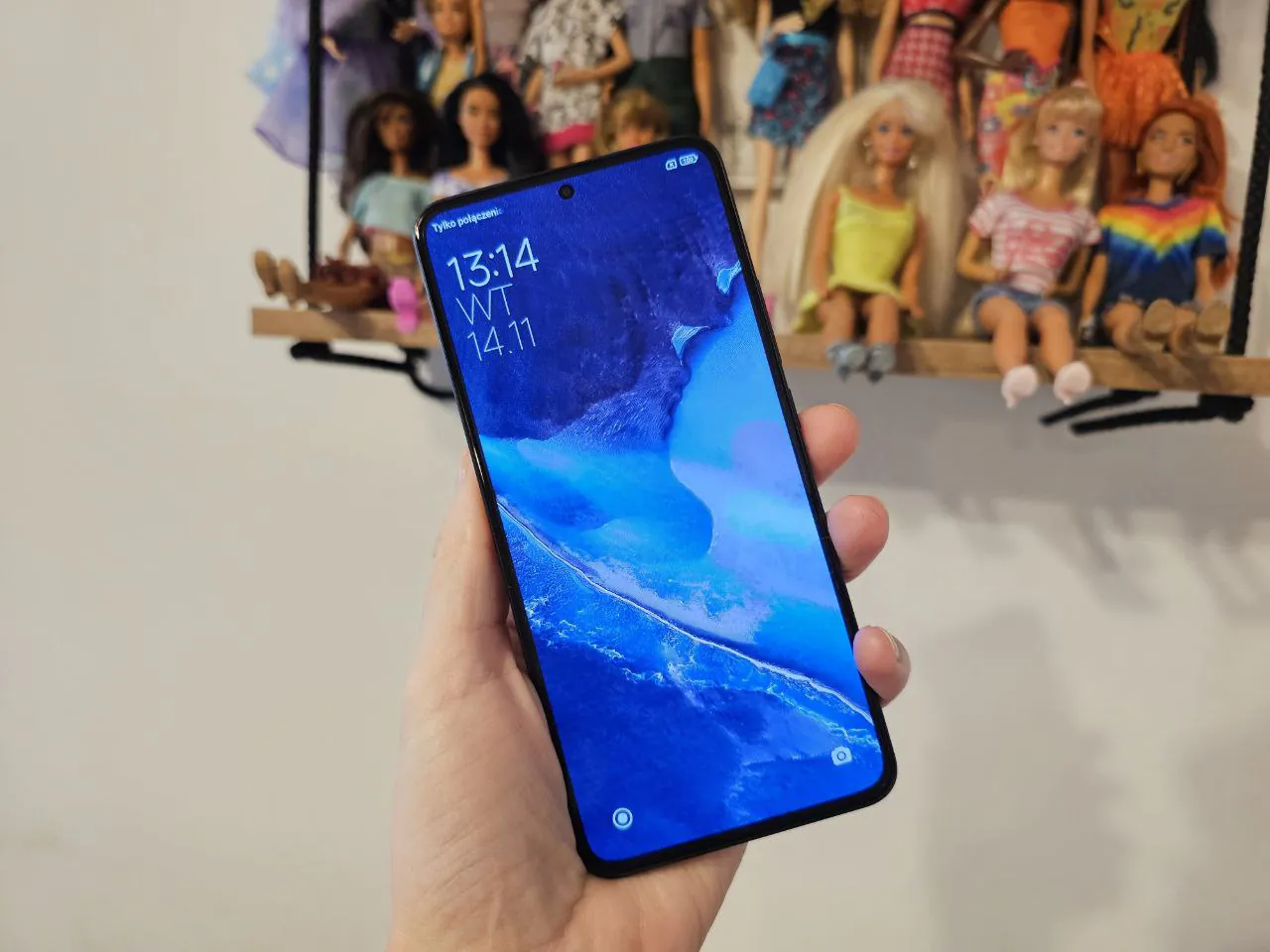 You can customize the screen settings to suit your needs/preferences: enable AoD, sleep mode, configure gaze recognition, set up corresponding gestures to turn off the screen. And, of course, there are more obvious display settings such as font brightness level, dark mode, color scheme, and flicker reduction.
You can customize the screen settings to suit your needs/preferences: enable AoD, sleep mode, configure gaze recognition, set up corresponding gestures to turn off the screen. And, of course, there are more obvious display settings such as font brightness level, dark mode, color scheme, and flicker reduction.
Xiaomi 13T supports a wide color gamut DCI-P3. In the display settings, three different color versions are available – vivid (default, DCI-P3), saturated (DCI-P3 with enhancement), and original sRGB. For each mode, you can precisely adjust the color temperature. There is also a dedicated section where you can choose the color space (original, P3, sRGB) and precisely adjust colors, saturation, hue, contrast, and gamma.
The display supports a refresh rate of up to 144 Hz. There are two refresh rate modes – custom (choice between 60 Hz and 144 Hz) and default (automatic switching between 30 Hz, 60 Hz, 90 Hz, 120 Hz, and 144 Hz). Adaptive refresh rate works as expected – it drops to 60 Hz when static content is displayed on the screen and increases to the maximum in various games, benchmarks, and compatible applications.
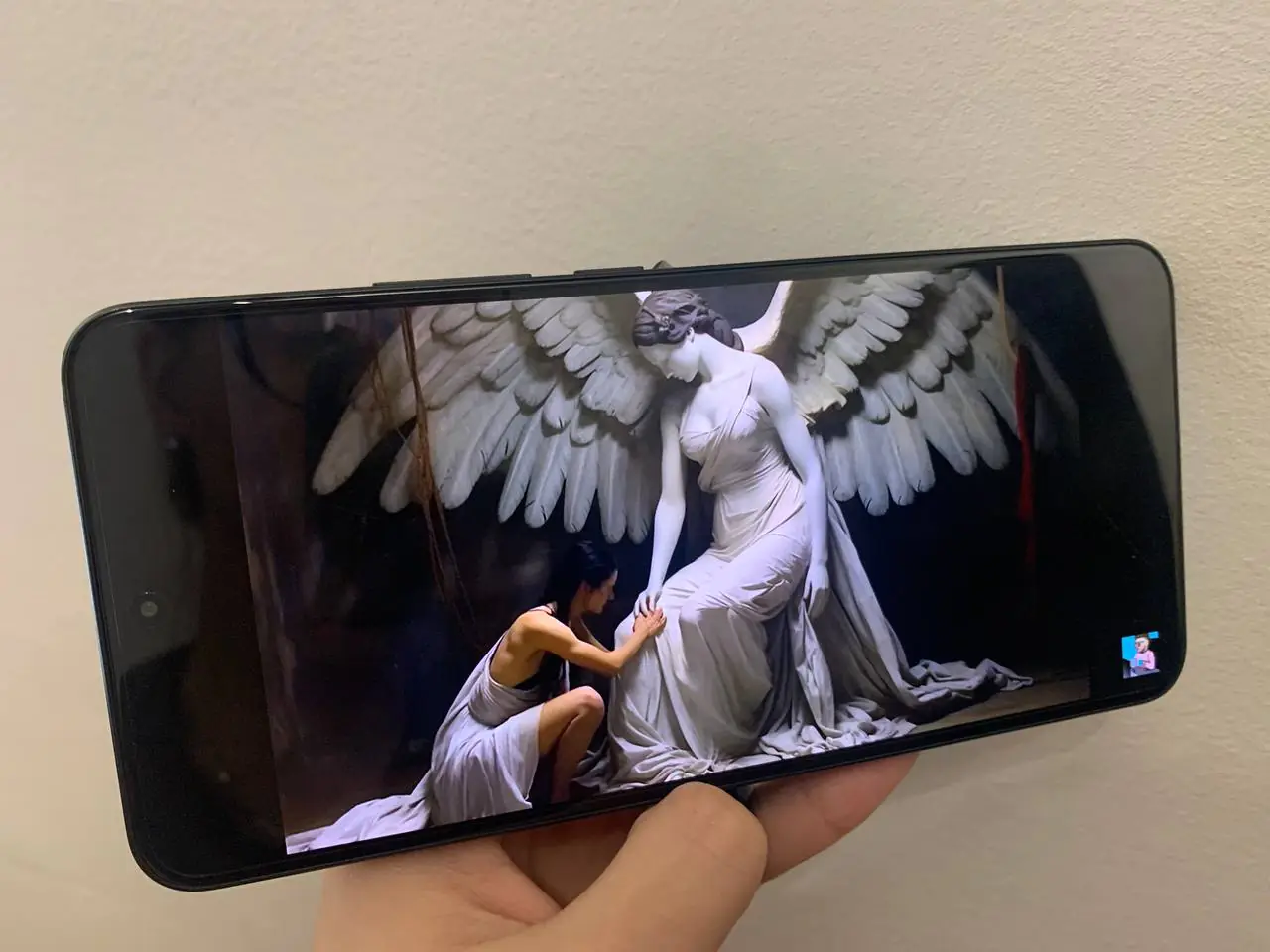 If we talk about my own experience, I would say that the screen and its performance completely satisfied me – the image is clear, the viewing angles are wide, and there is no loss of detail when changing positions. In both bright and dim lighting conditions, the screen remained readable, and I didn’t miss out on anything. According to the official specifications, the screen has a maximum brightness of 1200 nits (in Sunlight mode) and up to 2600 nits peak brightness – which is impressive!
If we talk about my own experience, I would say that the screen and its performance completely satisfied me – the image is clear, the viewing angles are wide, and there is no loss of detail when changing positions. In both bright and dim lighting conditions, the screen remained readable, and I didn’t miss out on anything. According to the official specifications, the screen has a maximum brightness of 1200 nits (in Sunlight mode) and up to 2600 nits peak brightness – which is impressive!
What slightly bothered me was that the film applied to the screen poorly protected the device, as scratches appeared within just 3 days, although I always carefully handle test models. However, this issue can be easily resolved – just replace the film, and you’re good to go. Although, it’s worth mentioning that using the film might not be necessary at all – Gorilla Glass 5 is quite durable.
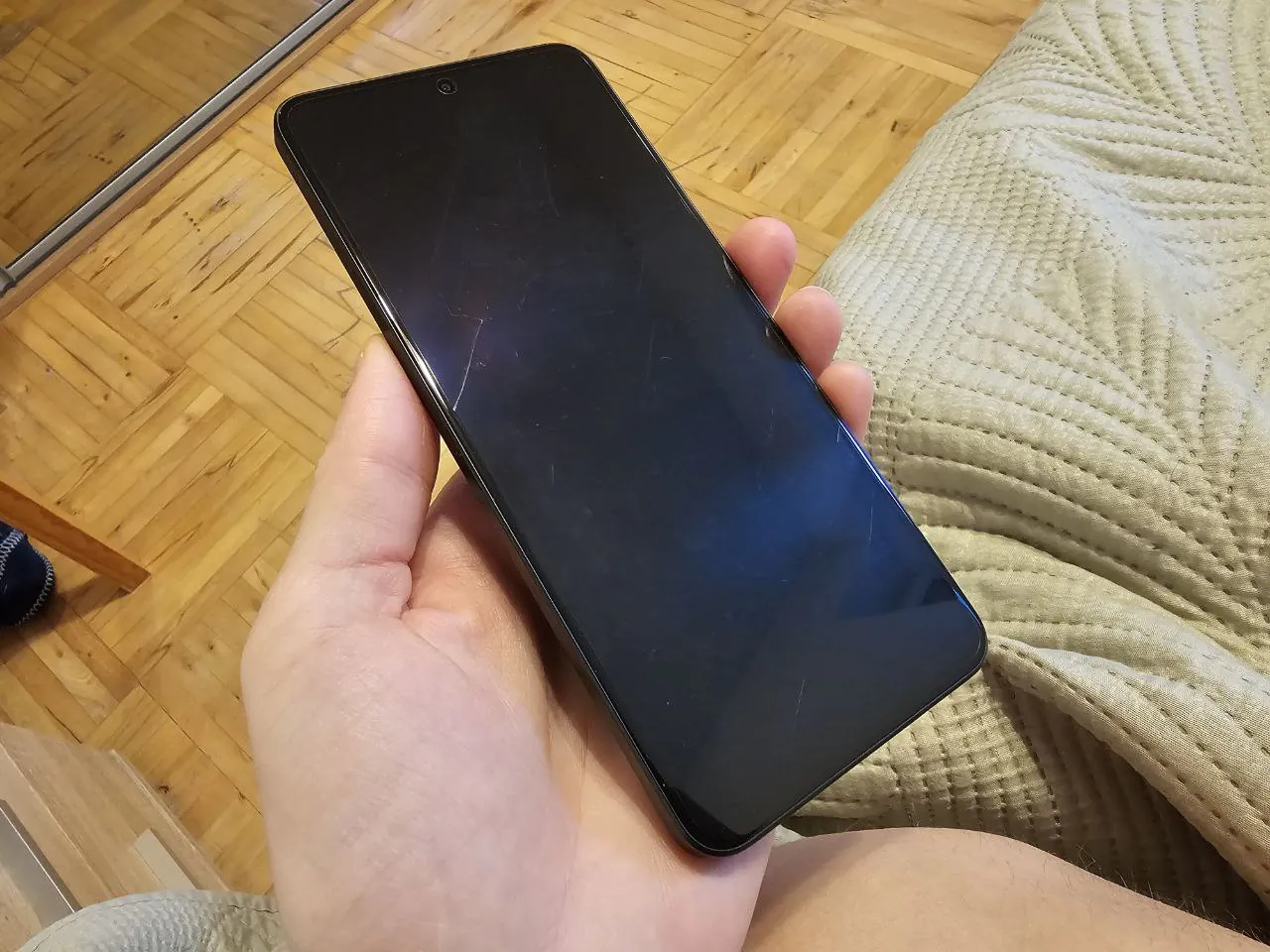
Read also: Xiaomi Smart Pet Feeder review
Equipment and performance
Xiaomi 13T runs on an octa-core MediaTek Dimensity 8200 Ultra processor with a Mali-G610 graphics card. The chipset is manufactured using the 4nm technological process. The smartphone comes with 8GB of RAM and 256GB of internal storage, featuring LPDDR5 and UFS 3.1, respectively..
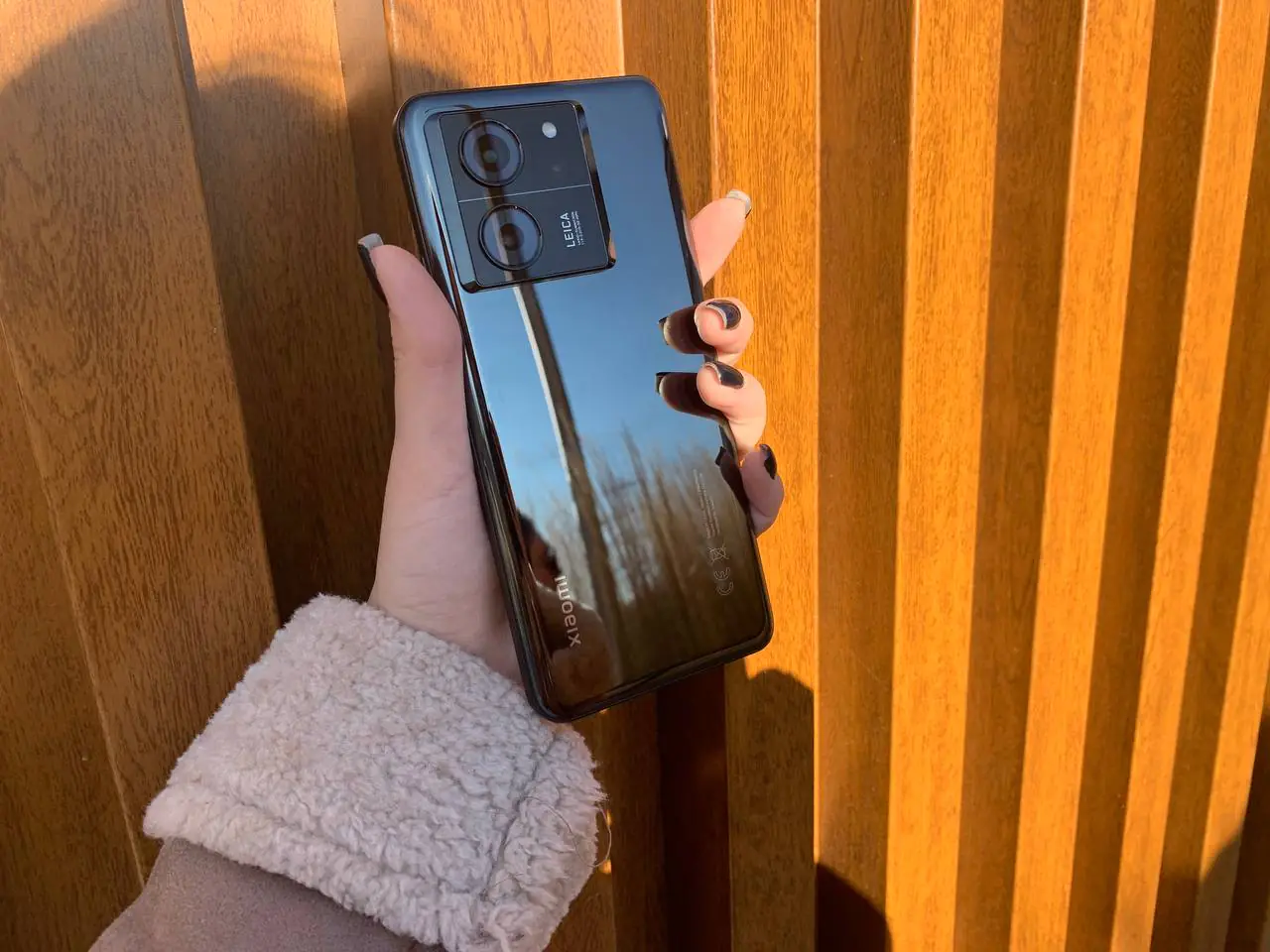 In the settings, you can add up to 8GB of virtual RAM, but even without this, the system runs smoothly.
In the settings, you can add up to 8GB of virtual RAM, but even without this, the system runs smoothly.
Yes, it’s not Snapdragon, but don’t worry – the current processor is far from the worst. In terms of benchmarks:
- Geekbench 5: multi-core 3 881, single-core 1 010
- Geekbench 6: multi-core 3 765, single-core 1 114
- GFXBench (onscreen): 37
- GFXBench (offscreen): 31
- 3DMark (offscreen 1440p): 1 728
- AnTuTu: 825 990
- PCMark Work 3.0: 13 698
The numbers are noticeably lower when compared to the 13T Pro, but does it have a significant impact? It’s better to talk about real performance rather than just dry figures. The phone is fast, nimble, and smooth; applications switch quickly. There’s practically no lag, and the phone doesn’t overheat. However, during prolonged and intensive work, I felt some warmth, but it’s not critical as we’re dealing with a slightly inferior processor compared to Snapdragon. In everyday routine tasks, I wouldn’t say that the regular 13T is slower than the 13T Pro, but you might notice the difference during heavier workloads and less demanding games. However, for the 13T, no games are problematic; perhaps, you might occasionally need to opt for medium graphics instead of the best.
Read also: Xiaomi 13 Pro review: a flagship with a clumsy design and a high price tag
Xiaomi 13T cameras
On paper, the camera setup is the same as in the Pro version, but I found a few differences. It’s not just about the numbers; it’s about how these cameras perform during shooting.
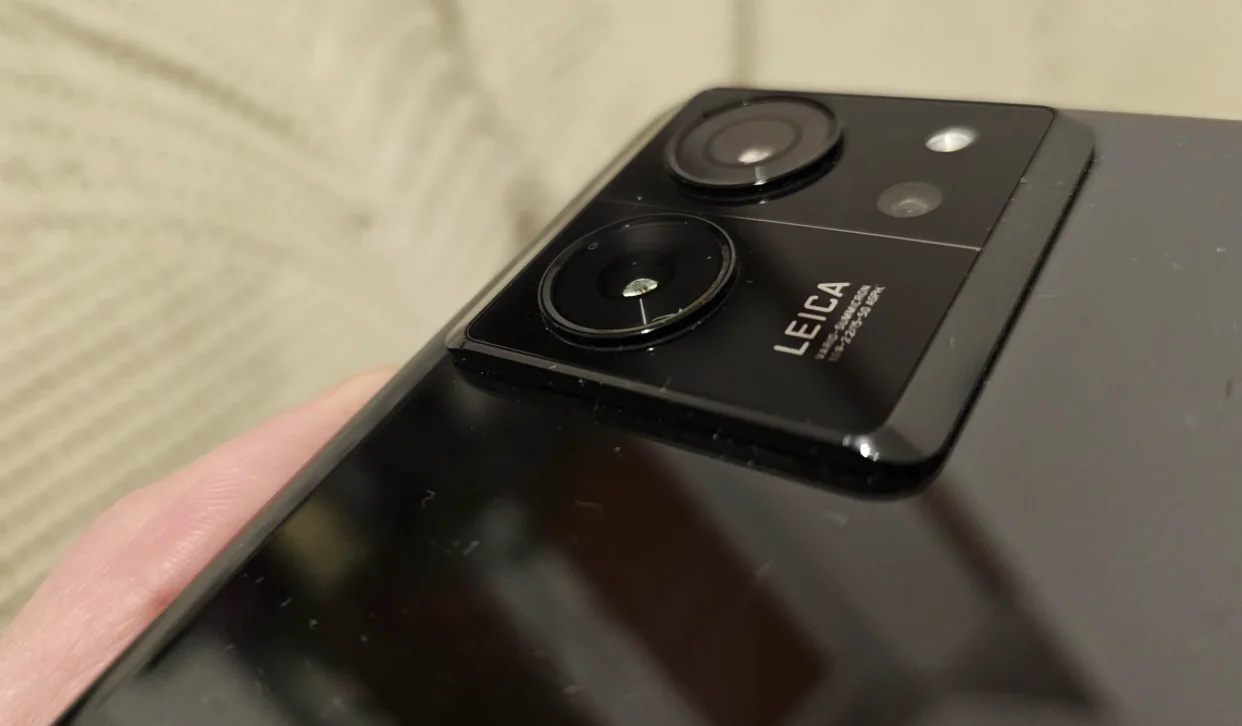
We have the following features for the camera:
- Main module: 50 MP, f/1.9, 24 mm, 1/1.28″, 1.22 µm, PDAF, OIS
- Telephoto lens: 50 MP, f/1.9, 50 mm, 1/2.88″, 0.61 µm, PDAF, 2x optical zoom
- Ultra-wide-angle lens: 12 MP, f/2.2, 15 mm, 1/3.06″, 1.12 µm
- Selfie camera: 20 MP, f/2.2, 0.8 µm
Firstly, a pleasant feature of the non-Pro model is that we have cameras without compromises (well, almost, it just lacks the ability to record in 8K, but that’s not critical). So, it’s almost a flagship level. The Chinese manufacturer has definitely improved its approach to cameras, and the partnership with Leica has resulted in the cameras of Xiaomi’s top models now standing out with excellent photo and video quality. Secondly, the presence of Leica’s signature modes (Vibrant and Authentic) means you get the best of both worlds – powerful post-processing like Samsung and a realistic approach like Apple.
Leica modes, camera app
Leica modes differ in color rendition: Authentic, as the name suggests, keeps the colors in the frame closer to reality and, overall, looks good. On the other hand, Vibrant adds brighter tones to these colors, resulting in brighter and more interesting frames. The difference was well noticeable in photos taken with the Xiaomi 13T Pro; with the regular 13T, I sometimes had to strain my eyes to see the distinction, not sure why. Below, I’ll add photos for comparison. Left – Authentic, right – Vibrant:
You need to choose the processing mode during the first camera launch, but after that, you can switch between them as much as you like (upper right corner of the camera app). There’s no need to stick to one specific mode – there’s no “universal” automatic mode, except for Leica. Additionally, there is an “AI” switch, which typically enhances contrast and saturation depending on the scene.
I also liked that the camera app offers not only additional features for photography but also for video shooting. For example, bokeh, a short film with suggested effects. There is also an option to enhance your own image. The dual recording option was cool – you can feel like an influencer.
If you want a bit more control over your photos, there’s a Pro mode located in the left part of the user interface. The Pro options allow you to adjust shutter speed, ISO, exposure, white balance, and even the manual focus function.
An interesting new feature is the Leica Custom Photographic Styles. It’s not standard presets; the option is oriented towards three specific adjustments – tone, hue, and texture. Tone adjusts the gamma curve, affecting contrast and dynamic range, while hue regulates the color temperature and blue/purple tones. Texture adjusts sharpness.
Technically, it works well and is hidden in the professional mode, meaning it’s designed for people who know what they’re doing. Unfortunately, you can’t save multiple presets, only one. So, you’ll have to tinker with the settings each time you want to make creative changes. Xiaomi and Leica could consider the possibility of a software update for this.
Main camera
I liked the main 50 MP module. Even in poor lighting conditions, the shots turn out decent. However, as always, the empirical rule applies – the more light, the better. Usually, photos capture a lot of details. But my personal advice to future buyers is to stand still and wait for the module to focus during shooting because photos taken on the move don’t always turn out high-quality, and some elements may blur.
Despite the absence of a dedicated macro lens, close-up shots turn out great!
Night shooting
Xiaomi 13T, like most other flagship smartphones, features an automatic night mode. It processes photos at its discretion. Night mode is enabled by default, and we recommend not turning it off. It’s rarely used on the main and telephoto modules (as they are already capable of capturing a lot of light), but it’s almost always active on the ultrawide lens – which is exactly what you need.
Night shots are decent; the result is still better than competitors, but it’s evident that the frames are far from perfect. Light sources in the photos (lamps, candles) were blurry, and I had to darken the exposure even more. However, overall, there’s not much to complain about. Shots in the dark are taken within 2-3 seconds (as there isn’t much light available).
Telephoto and zoom
The telephoto lens of the Xiaomi 13T features a 20x digital zoom and a 2x optical zoom. Regarding the 2x zoom, the photos exhibit sufficient detailing, vibrant colors, high contrast, and a good dynamic range. They may not be as detailed as those from the main camera since the sensor is significantly smaller, but it’s not critical..
There is a digital zoom of 5x, 10x, 20x, but the larger the zoom, the worse the image quality. Examples:
Ultra-wide-angle module
The wide-angle lens is the Achilles’ heel of this camera. Yes, the detailing was acceptable. However, for me, this module was unnecessary and took up too much space in the frame, which affected the contrast. Moreover, in lower light conditions, the shots turned out uninteresting and lost their natural colors.
But it all depends on the situation; sometimes, such a wide-angle mode comes in handy. A comparison between the regular and wide-angle modes:
Portrait mode
Xiaomi and Leica offer a powerful portrait mode with several options to choose from – default (50mm, no enhancements), 35mm (captured with the main camera and cropped), 50mm Swirly Bokeh, and 90mm Soft Focus. There is also a Full Body mode that allows capturing “tall” portraits using the main camera. By default, portraits are taken with the telephoto lens and turn out incredibly well. The subject is detailed, well-exposed, and free from noise, with natural reproduction and beautiful colors. The bokeh effect is superb.
Video recording
Xiaomi 13T achieves a maximum resolution of 4K@30fps. Unlike the 13T Pro, the regular 13T does not support video recording in 8K format, but this is not surprising and not a significant drawback. Recording HDR video remains possible, and EIS image stabilization is available in all modes. Super Stable mode, telephoto option, and HDR10+ mode for the main camera are also accessible. The option of focus tracking is available as well.
The test videos exhibit excellent detail, sharpness, a wide dynamic range, and quite accurate color reproduction. Contrast could be better, and the white balance too, but nothing critical—overall, the video looks good.





Front camera
The selfies turn out well. I didn’t use enhancement features, but the module still handled its task well, and I inserted some of these shots into the review — I have no complaints about this camera.
Conclusions and Comparison with Xiaomi 13T Pro
As I mentioned earlier, the smartphones share the same camera setup. Does this mean that the 13T and 13T Pro take photos in the same way? Overall, yes, photos from both models may not quite reach flagship status, but they are very good. There are slight differences in photo processing, as it depends on the processor. However, I can’t say that the 13T is noticeably worse than the Pro in terms of photography. Perhaps only shooting with the wide-angle lens is a bit weaker.
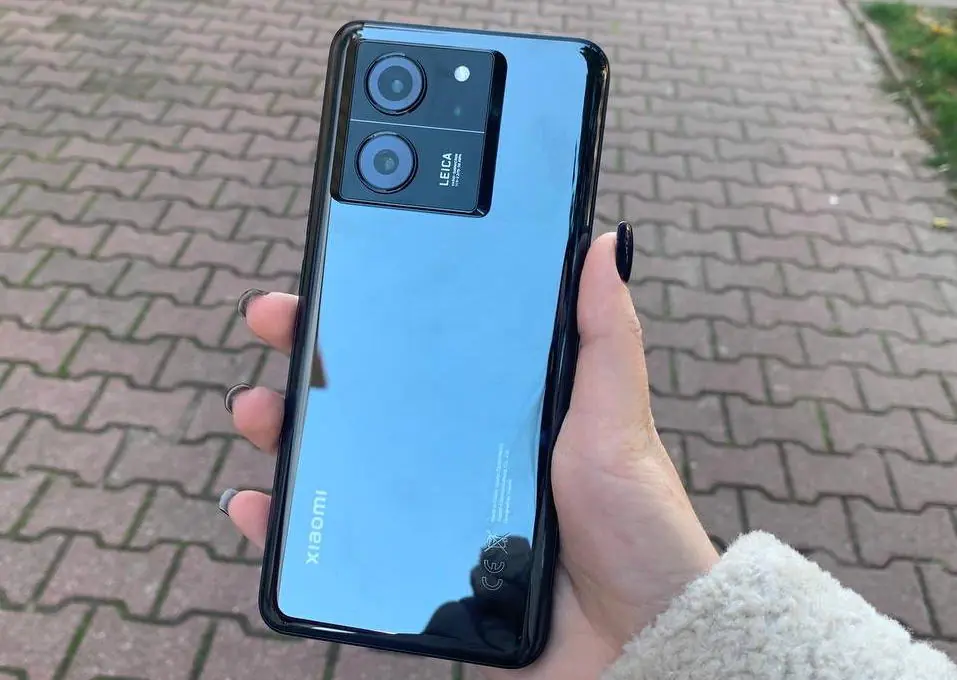
Read also: Redmi Pad tablet review: simple and no frills
Sound
The audio on the Xiaomi 13T is excellent. Both the Pro and the regular 13T feature stereo speakers and support Dolby Atmos. In the settings, you can adjust sound parameters (for example, enable different modes and sound effects, customize the equalizer, increase or decrease haptic feedback levels). As you can see, there are various customization options, but I listened to music without delving into the settings at all. I can confidently say that in this price category, you’re unlikely to find better sound quality.
The fact that we’re dealing with stereo sound becomes evident when you play any video on YouTube. Every tone sounds precise, spreading in all directions and creating a truly immersive experience for any content.
Moreover, if you connect wireless headphones, the audio-visual experience takes on a new dimension. The sound becomes even richer, with strong bass. In this regard, the Xiaomi 13T performs well.
Unlocking methods
The 13T Pro had a fingerprint scanner, which, to be honest, surprised me, in particular because of the large number of false presses. The scanner on the 13T, on the other hand, works quickly and reliably. You put your finger on the area, which is located at a convenient height, and you’re done.
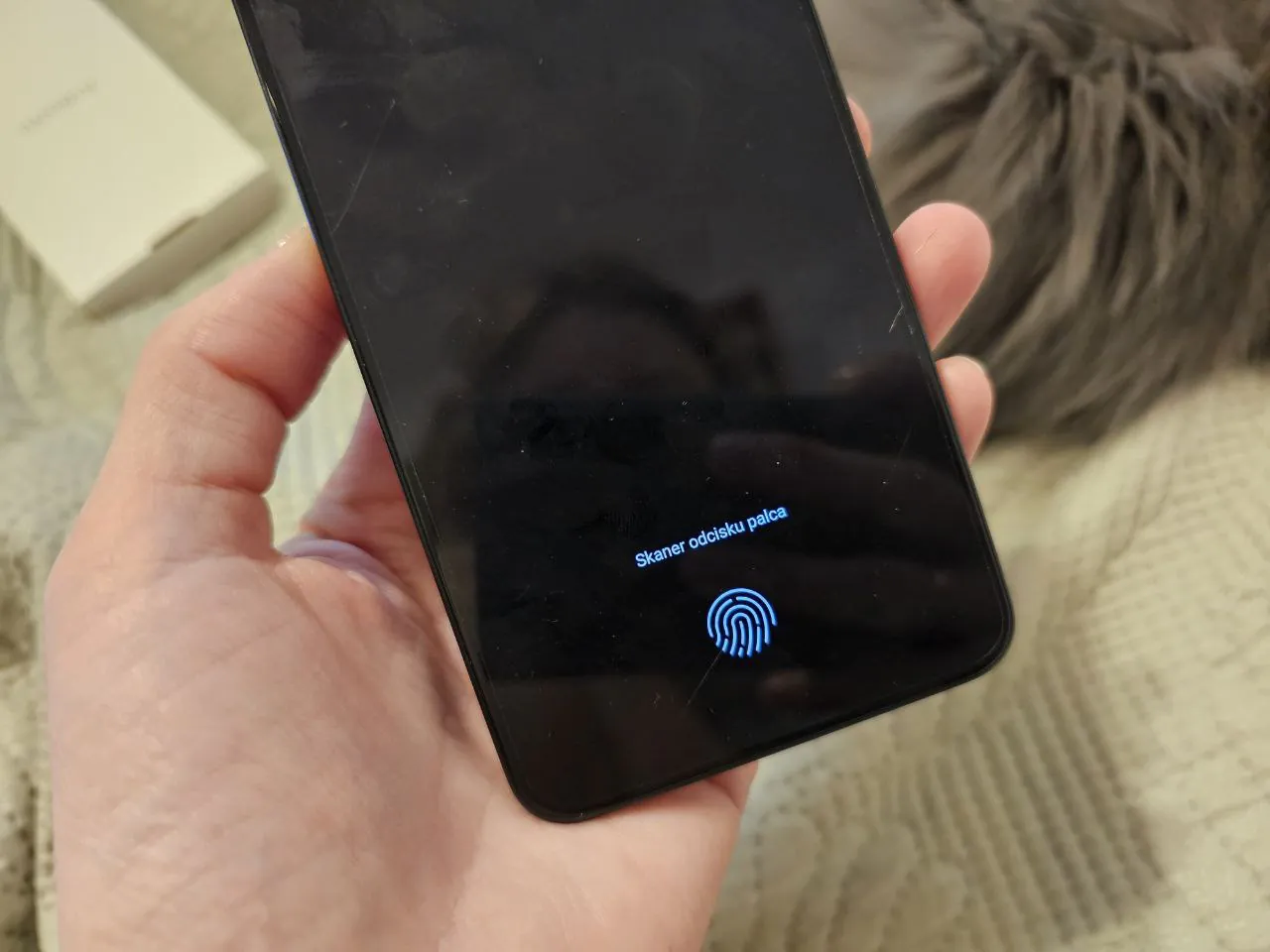 Both the fingerprint scanner and Face ID work flawlessly. However, I prefer the fingerprint scanner. Additionally, the display intuitively lit up, making it easy to find the right spot even in the dark.
Both the fingerprint scanner and Face ID work flawlessly. However, I prefer the fingerprint scanner. Additionally, the display intuitively lit up, making it easy to find the right spot even in the dark.
Battery and charging
Xiaomi comes with a 5000 mAh battery, which is a standard capacity in this price segment. It may surprise some users – good hardware doesn’t necessarily mean slow charging and a “short life” for the phone. With rational use of the gadget, you can achieve 1.5-2 days of autonomous work. Of course, if you use the phone more frequently, this time will shorten to a full day, and that’s normal. On average, the model delivers 5-7 hours of Screen-on Time (SOT).
The package includes a 67W power charger, supporting fast charging. While not as fast as the Pro version (120W), it’s still quite impressive. In 15 minutes, you can charge the phone up to 40%, in 30 minutes – up to 75%. If you want to charge it fully from zero, it takes less than an hour, approximately 50 minutes. Unfortunately, there is no wireless charging feature.
Read also: Xiaomi Watch S1 Pro review and comparison with Watch S1: Are there any improvements?
Wireless technologies
It features modern Wi-Fi 7 (though a compatible router is required), Bluetooth 5.4, GPS, and other satellite navigation technologies, along with NFC. The contactless payment function works flawlessly and instantly, and I had no complaints. Additionally, the Xiaomi 13T comes with an infrared port, a standard feature for Chinese smartphones, useful for controlling home appliances.
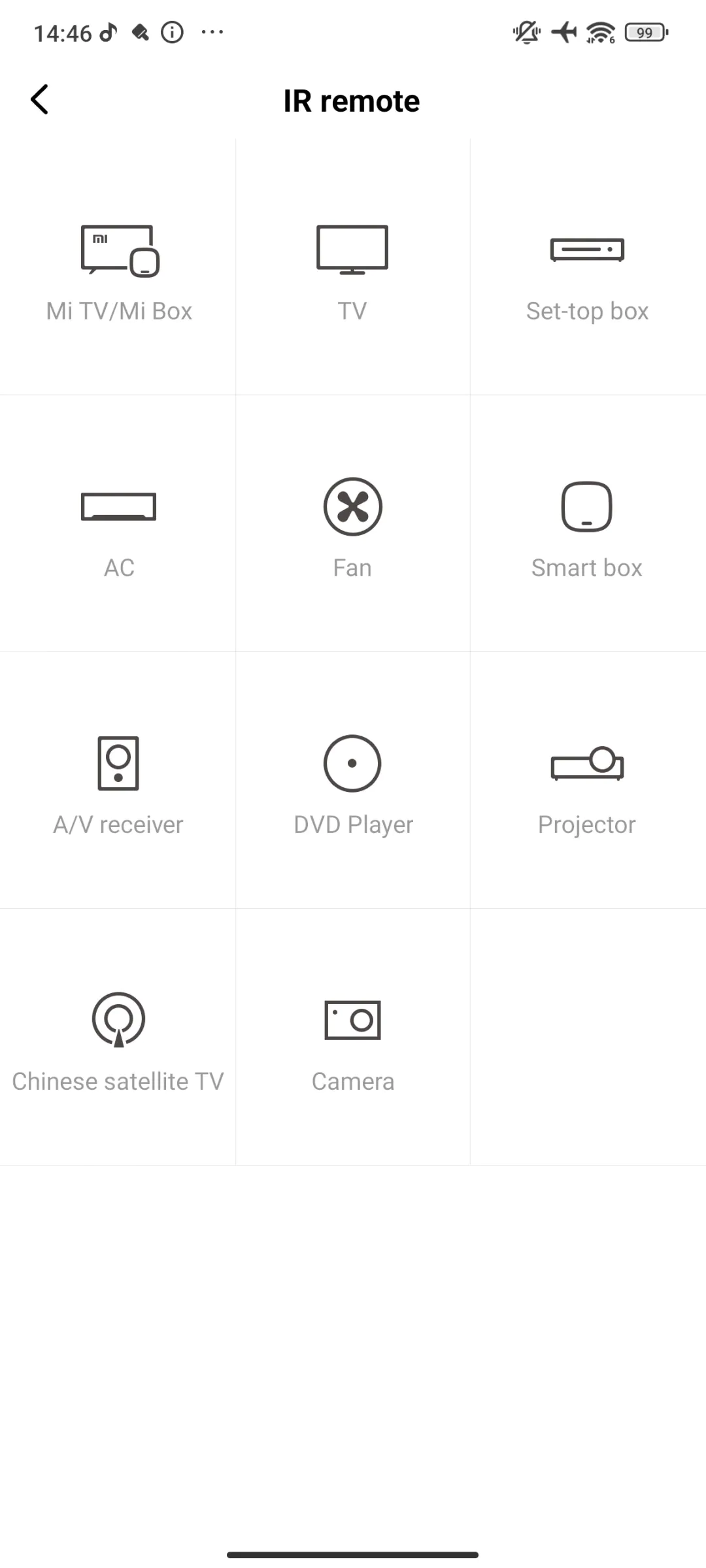
Software
The Xiaomi 13T runs on Android 13 with the MIUI 14 skin. Xiaomi promises four major Android updates and 5 years of security patches for the 13T series.
The system operates smoothly, is intuitive, and offers the user a wide range of settings and additional security features, including emergency notification modes. It also includes parental controls and a digital balance feature.
Applications can be opened in floating windows or in split-screen mode. However, there is a limitation: only one floating window at a time. If you need quick access to apps, you can enable the side panel. There’s also a one-handed mode and screen recording with different quality options.
Cool feature – pulse measurement. How does it work? You place your finger on the fingerprint scanner for a few seconds, and the system determines your pulse. Cool and interesting – like a smartwatch, and it’s a good option for elderly people or athletes who need frequent pulse monitoring.
Yes, there are many pre-installed apps and software from Xiaomi, but that’s almost always the case if you have a branded interface.
Overall, I intentionally don’t customize the system for myself because it’s already good. Xiaomi 13T is no exception. Going into the settings, you can easily find the functions you need. MIUI is now intuitive and fast, so there were absolutely no problems here.
Read also: Xiaomi Buds 4 Pro review: great sound and high-quality noise cancellation
Conclusions
How do I evaluate the Xiaomi 13T? It’s a phone that is definitely worth buying or, at the very least, considering for purchase. Because it offers good features without costing a fortune. Of course, it has some minor drawbacks, but it leaves only pleasant impressions. And it’s a good deal for a lower price, especially since the regular 13T is very similar to the “Pro” version, which, compared to our hero, doesn’t seem as advanced. Compare all the pros and cons to make your decision!
Advantages of Xiaomi 13T
- Pretty good cameras and good 2x zoom
- Rugged design with IP68 certification, version with eco-leather back available
- Excellent OLED display, 12-bit color depth, color accuracy, 144 Hz, Dolby Vision
- Relatively fast charging and long working time
- Good Dolby Atmos speakers
- Fast and flexible operating system, long support time
Disadvantages of Xiaomi 13T
- Plastic case
- Not the best wide-angle photos
- Not the most powerful MTK processor (for this price)
- No mini-jack
- The device collects fingerprints (for the version with a glossy back)
Regarding the price, I understand that it might not fall clearly into the advantages or disadvantages. The manufacturer’s recommended price may be slightly elevated, but when compared to online prices and potential discounts, it can indeed be considered a very good purchase.
Read also:
- Personal experience: Why I sold my iPhone 14 Pro Max and bought a Galaxy S23 Ultra
- Motorola razr 40 Review: What is the cheapest folding smartphone capable of?
- Xiaomi 13 Pro review: a flagship with a clumsy design and a high price tag



